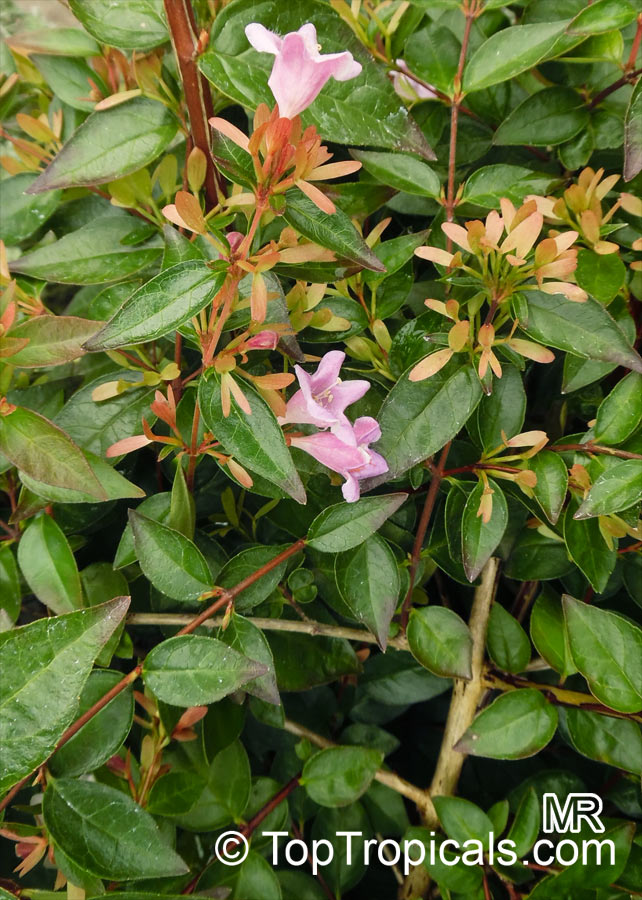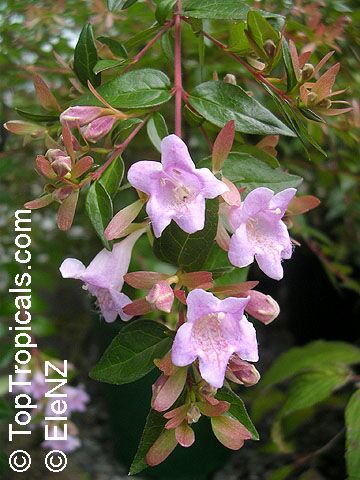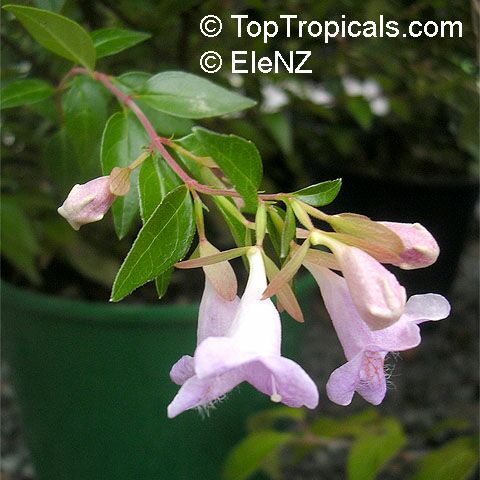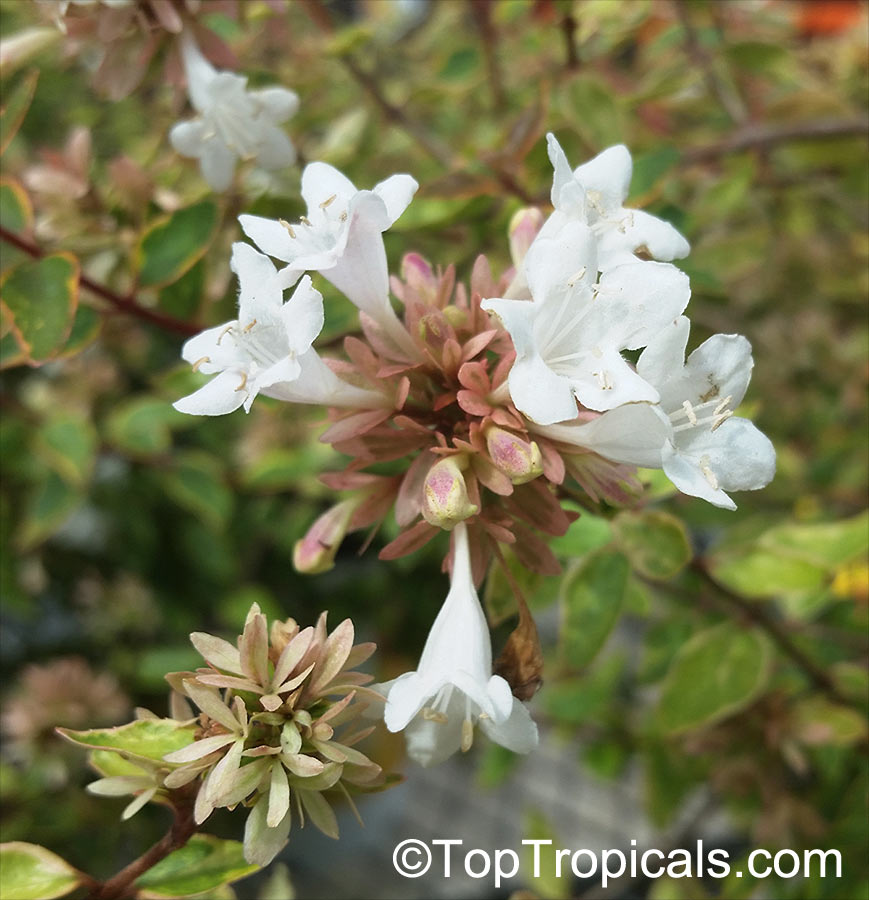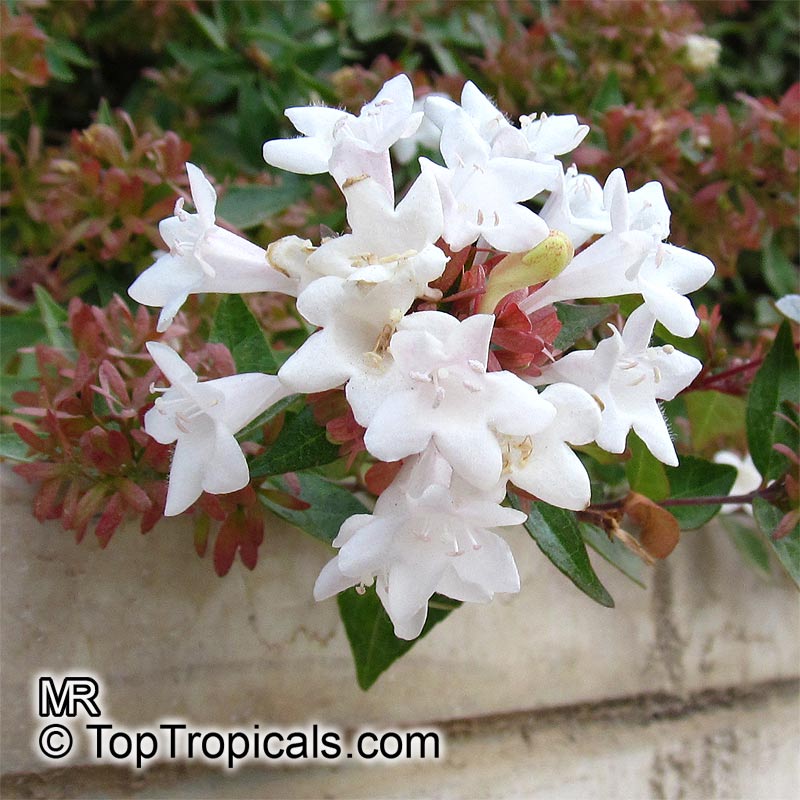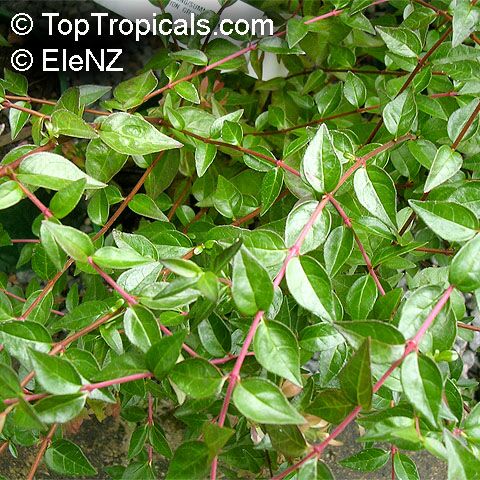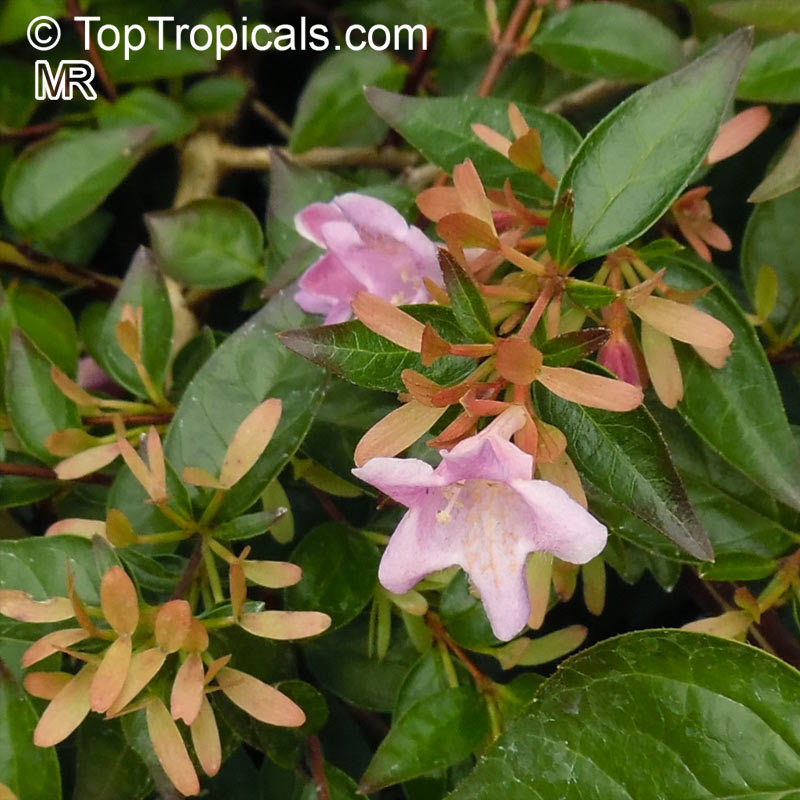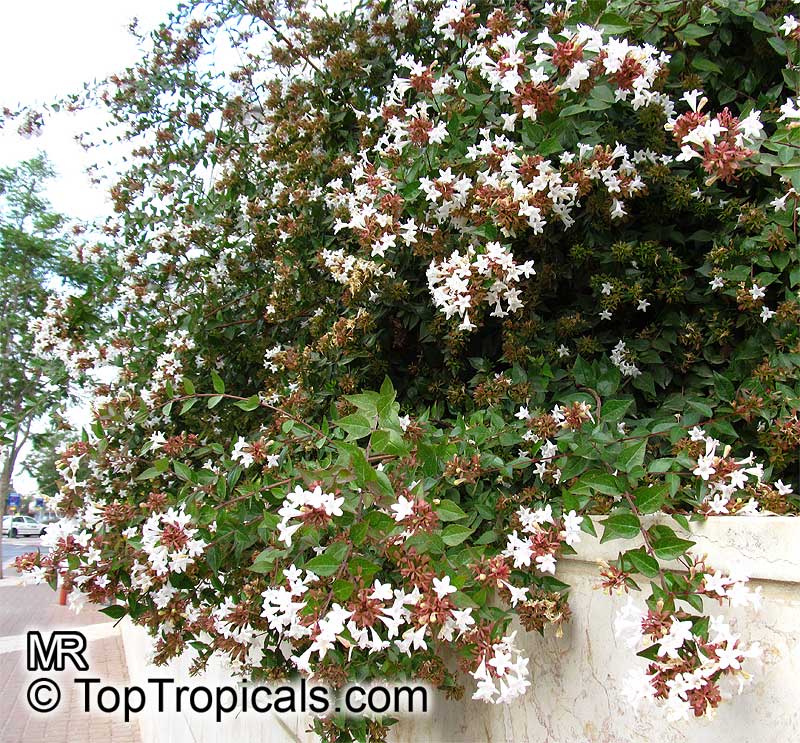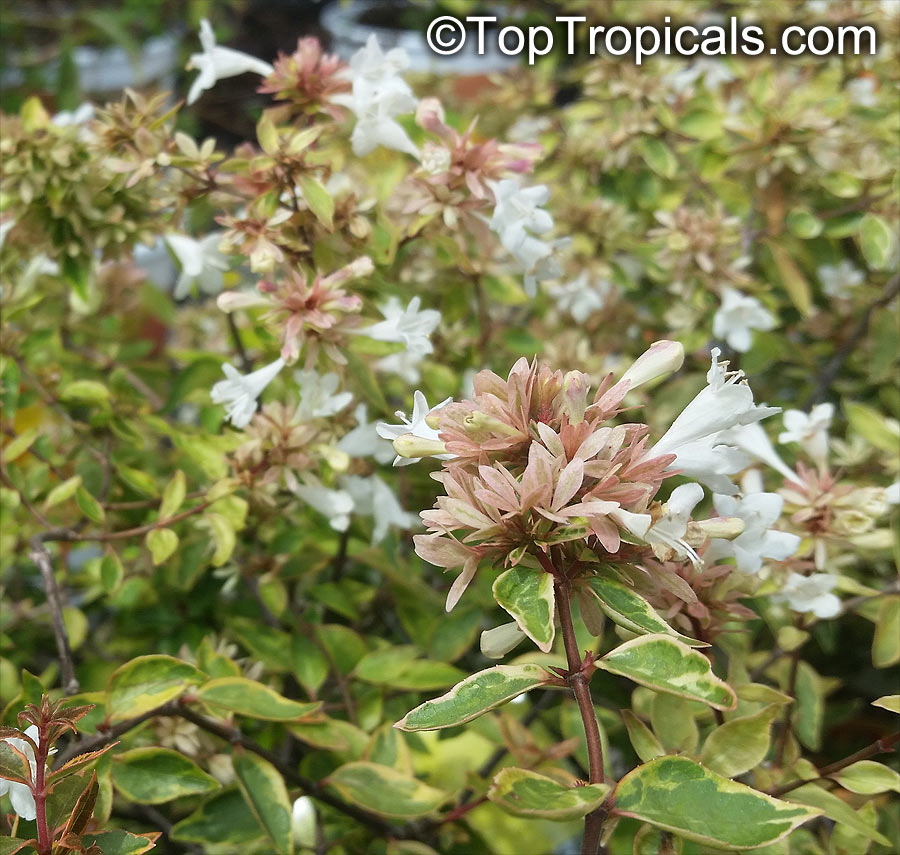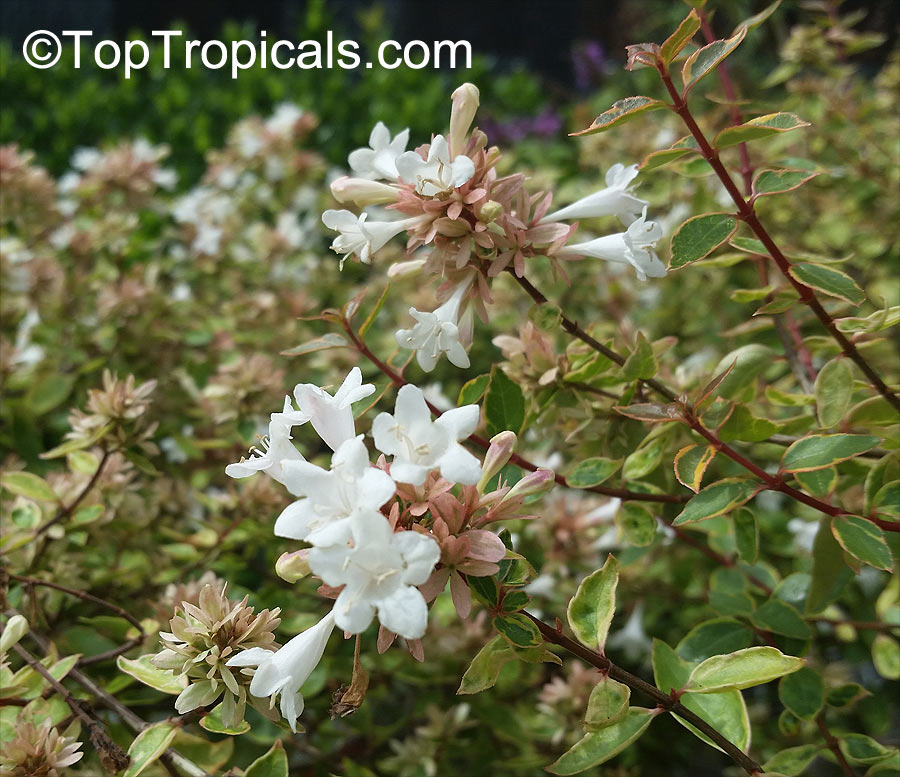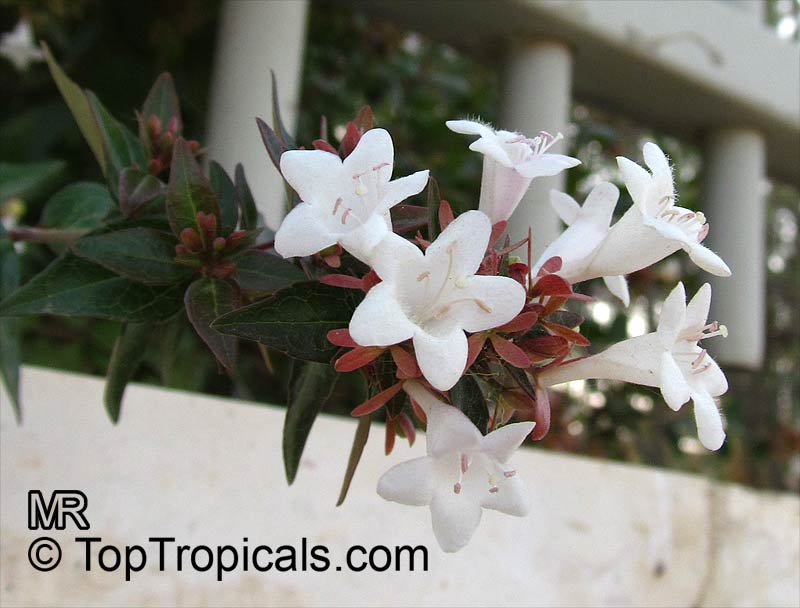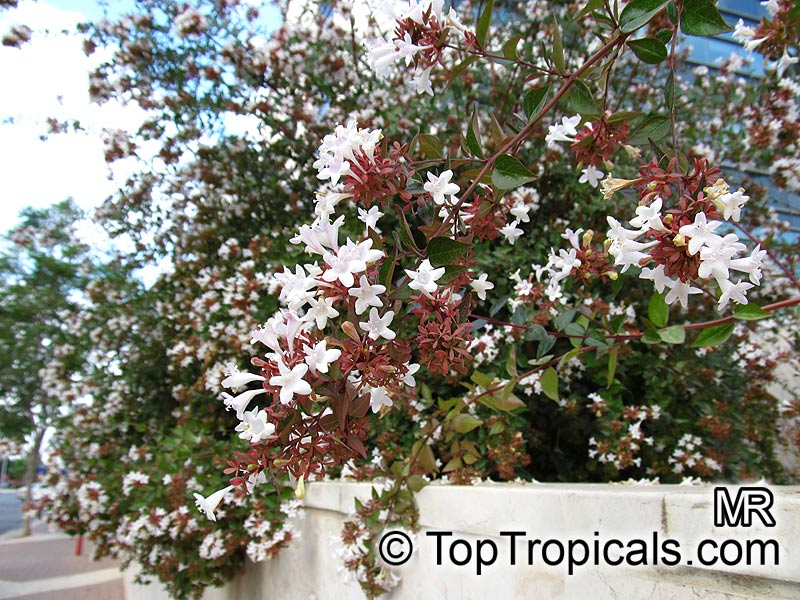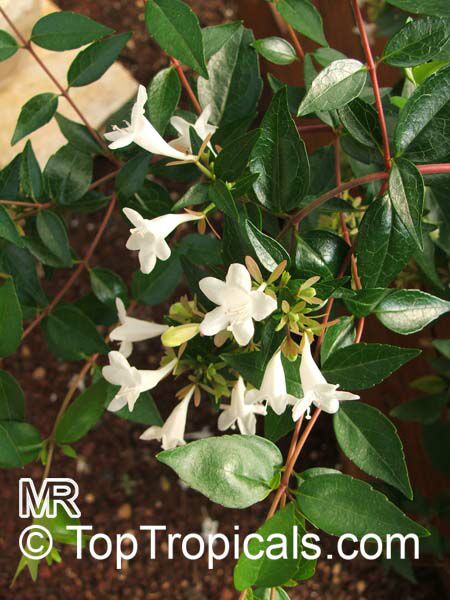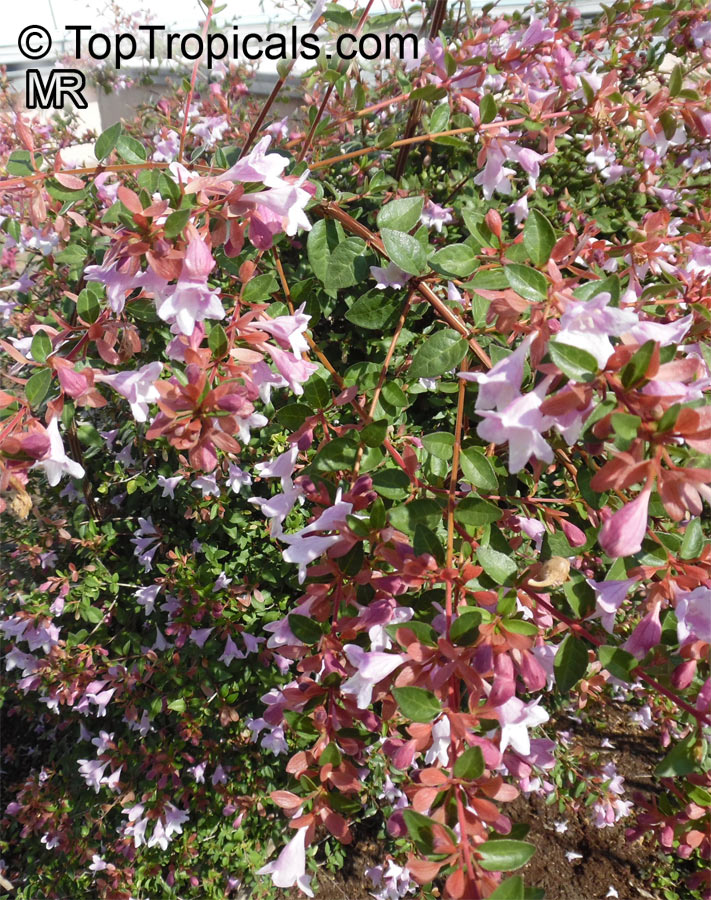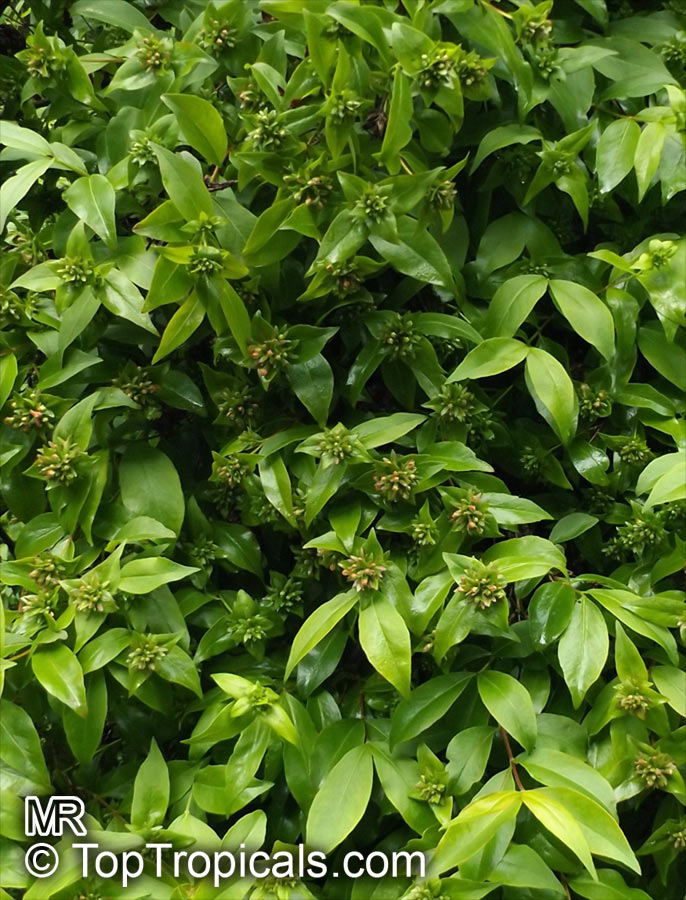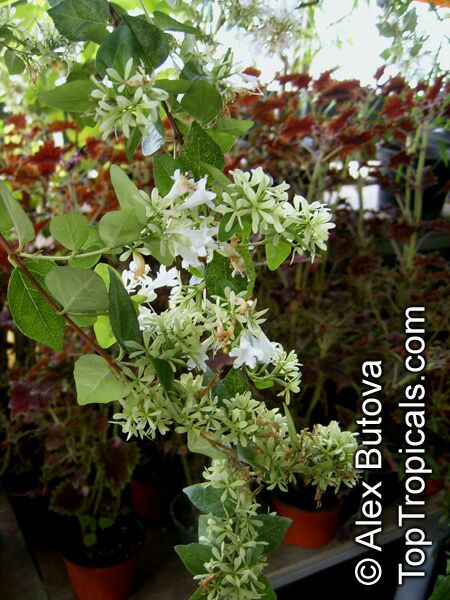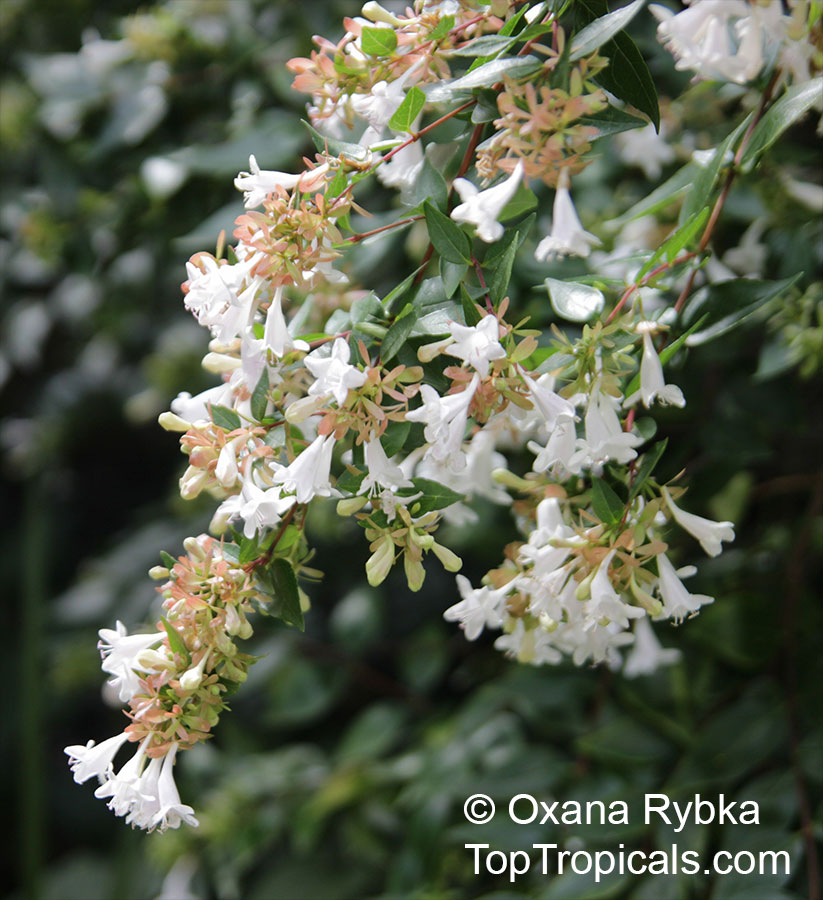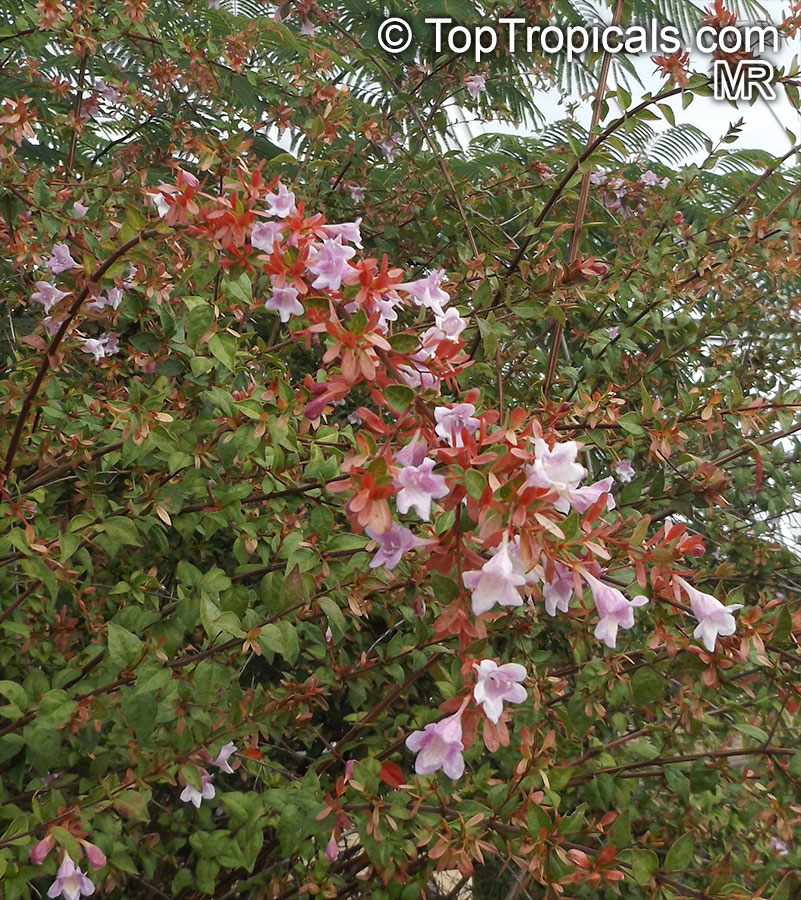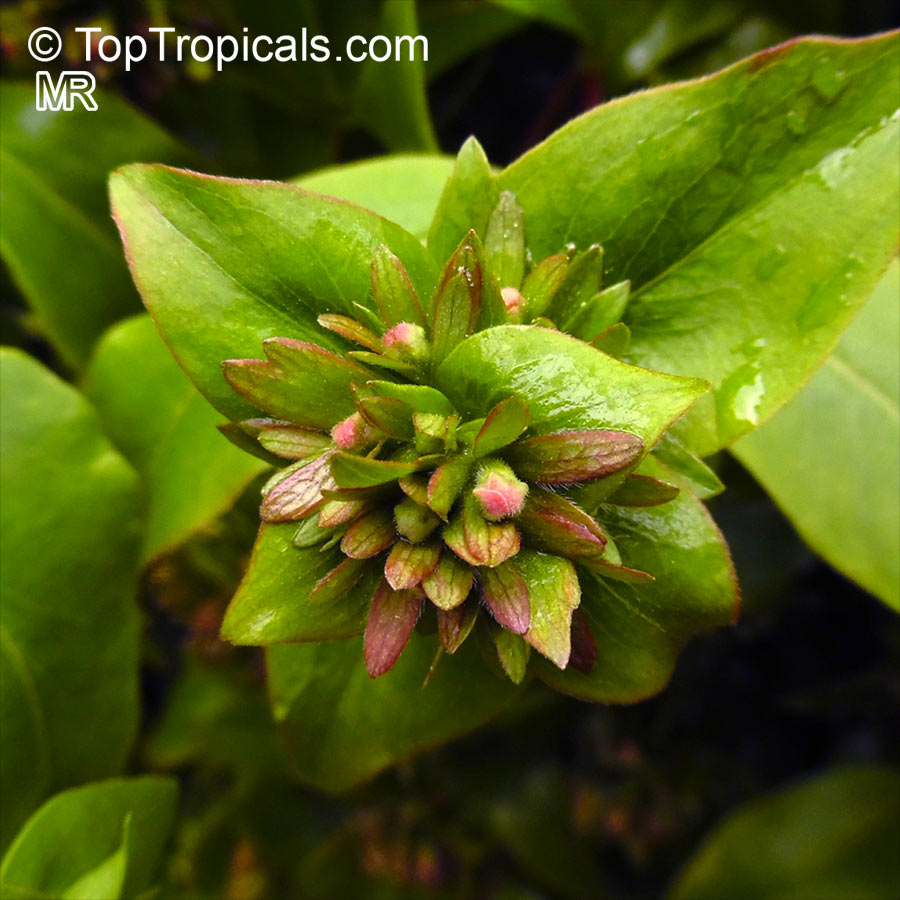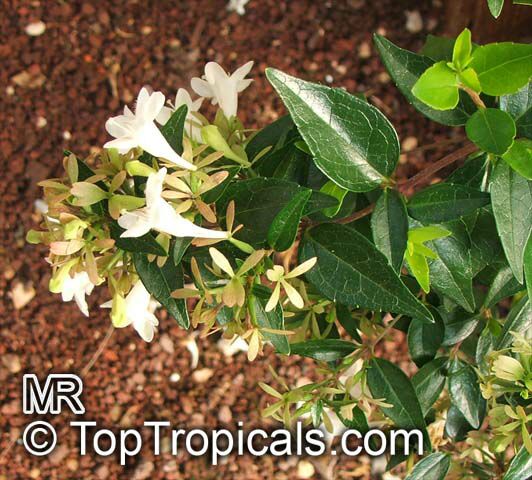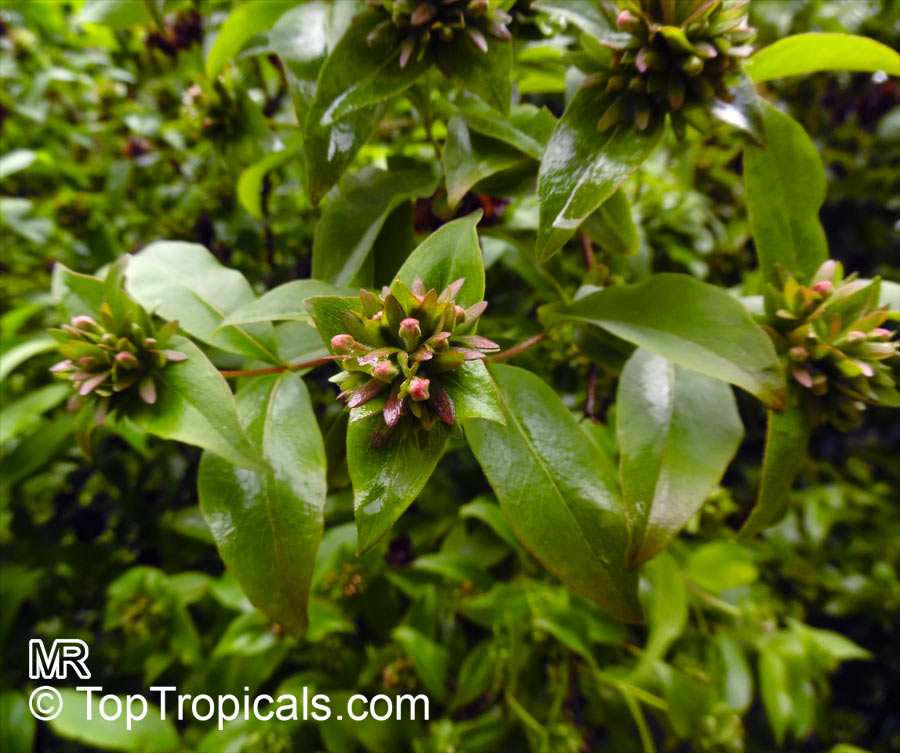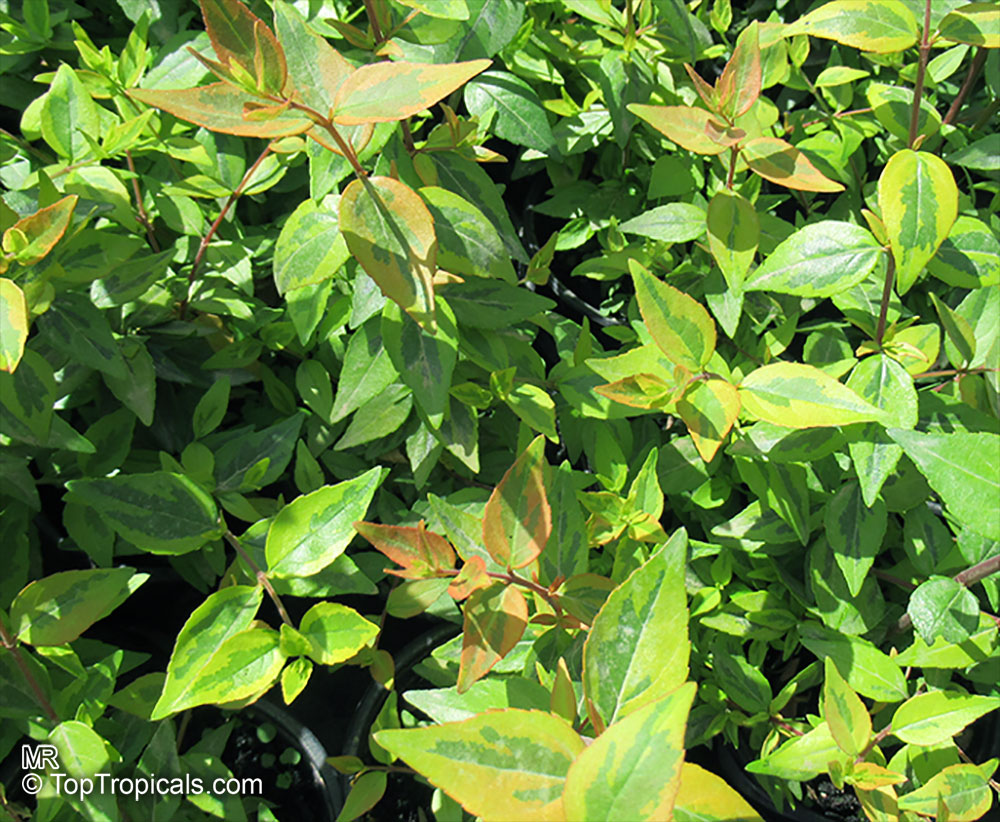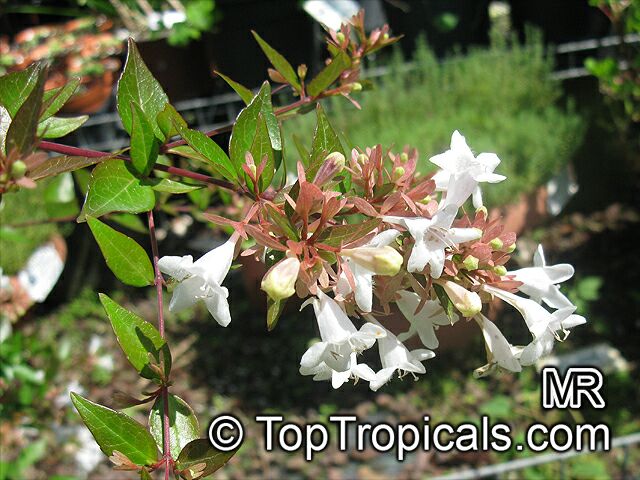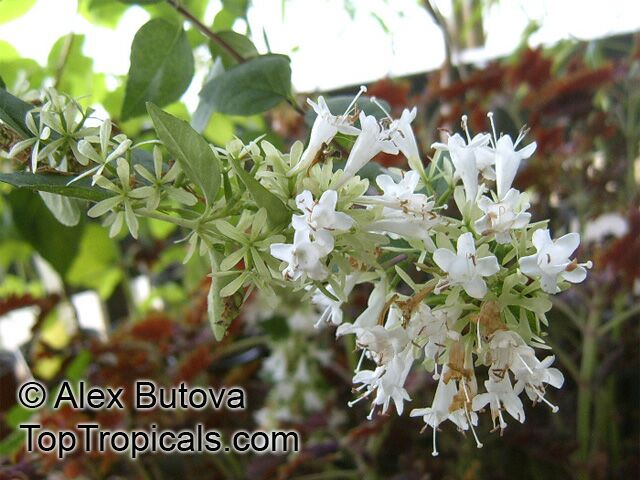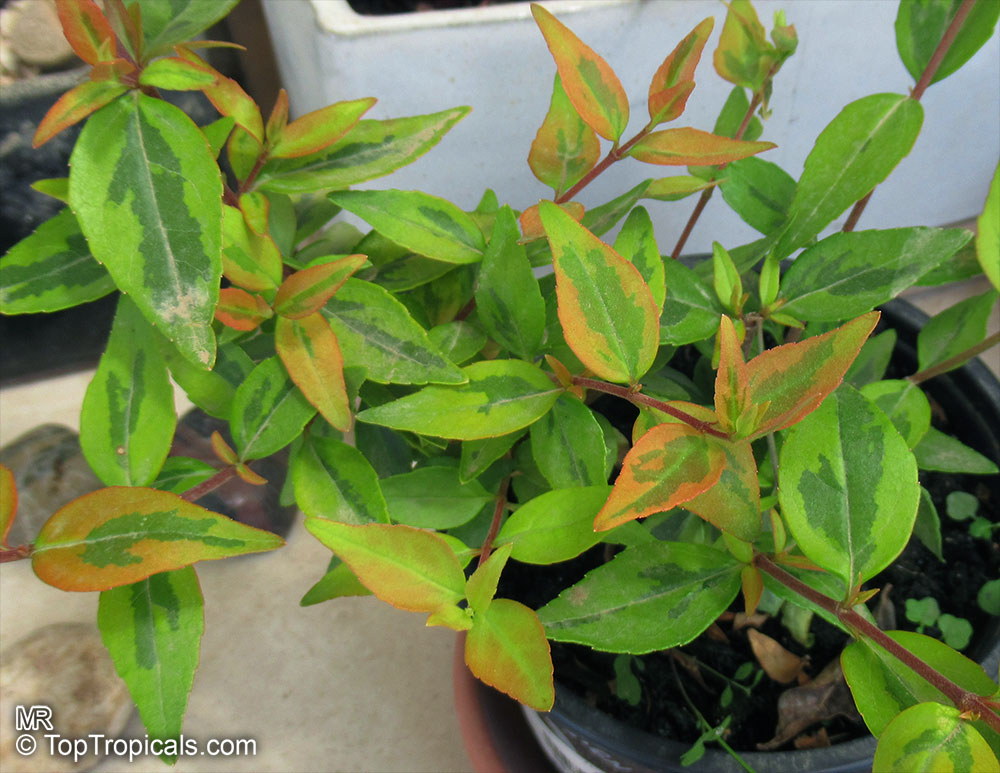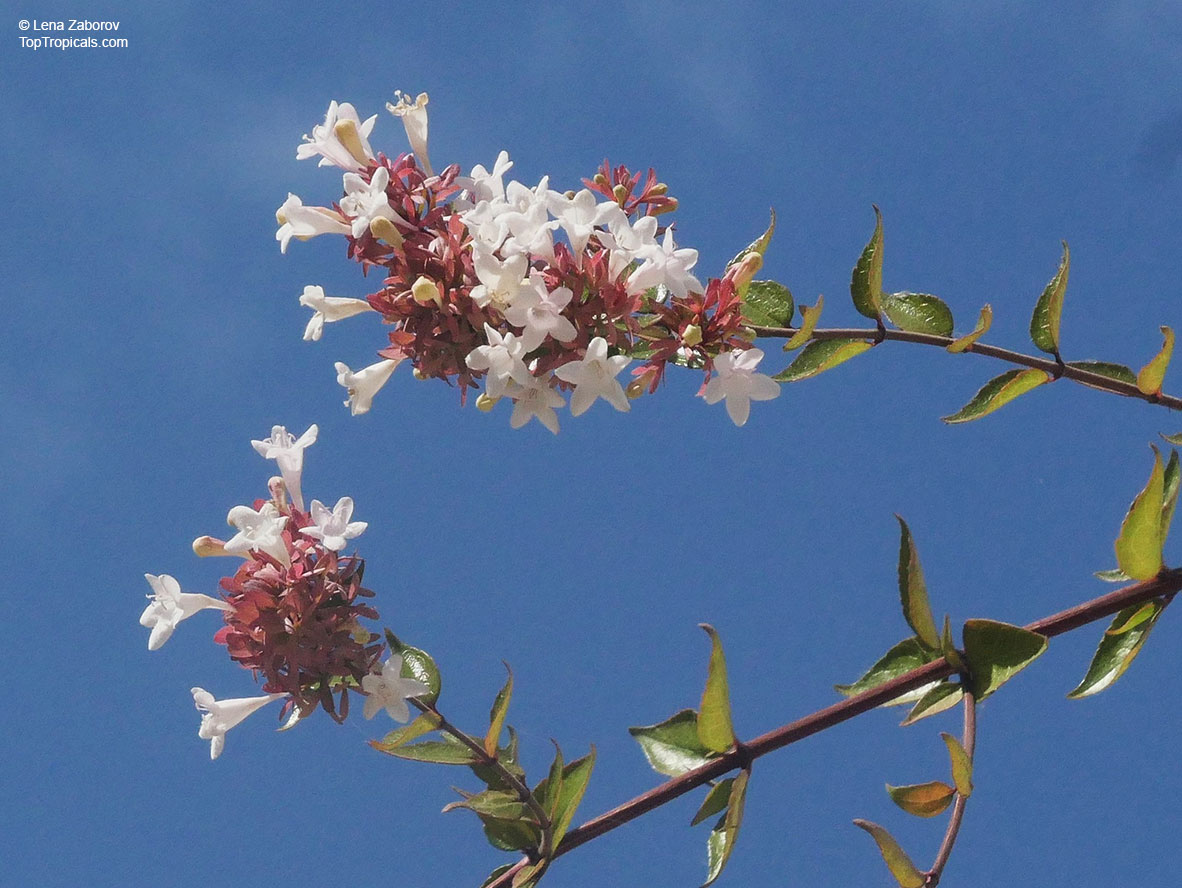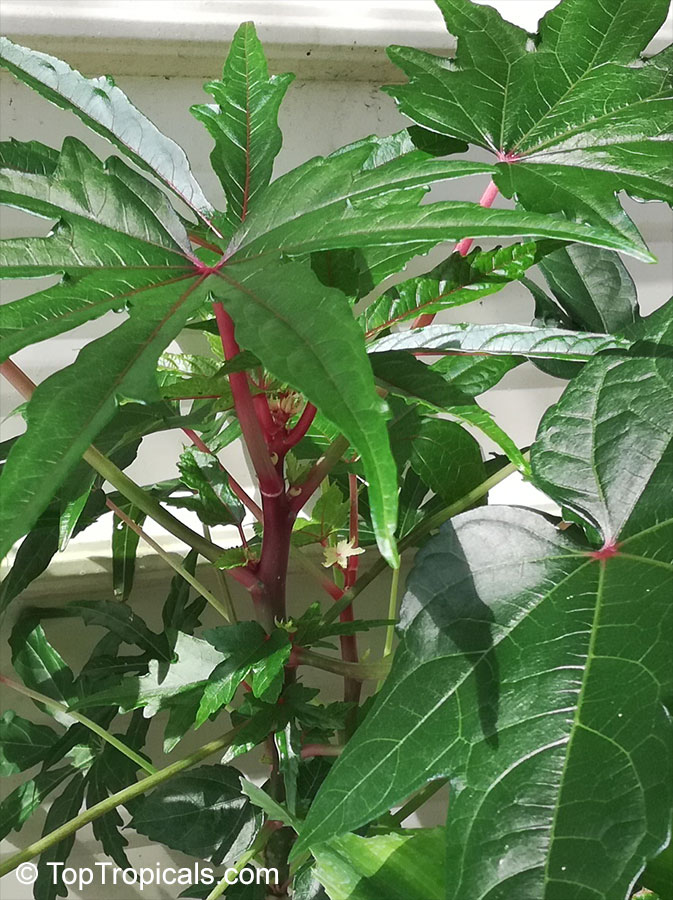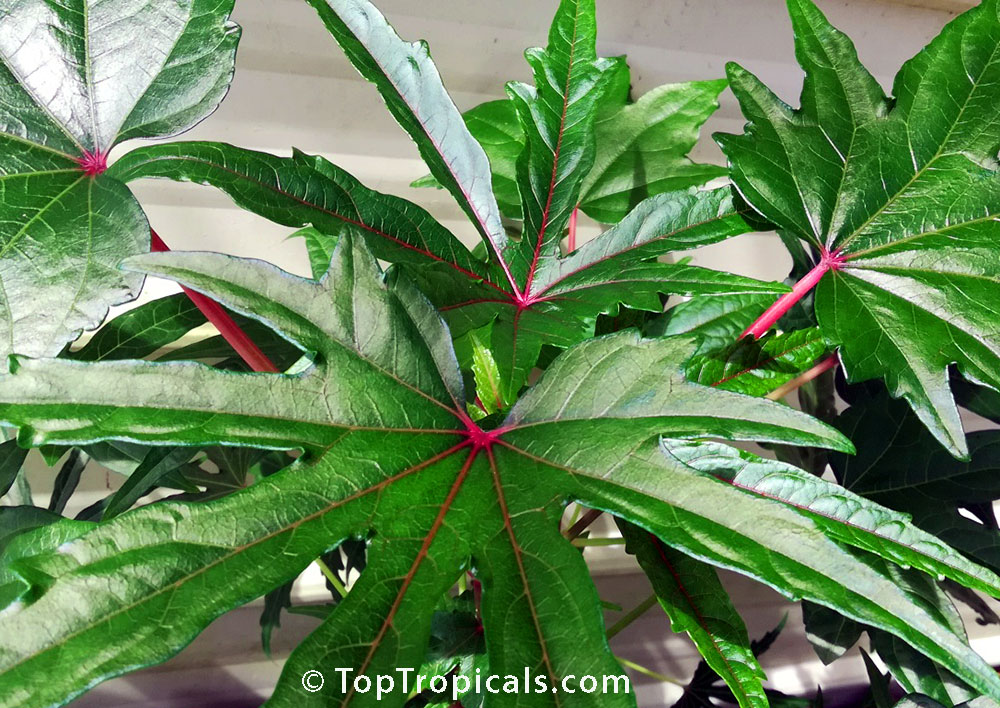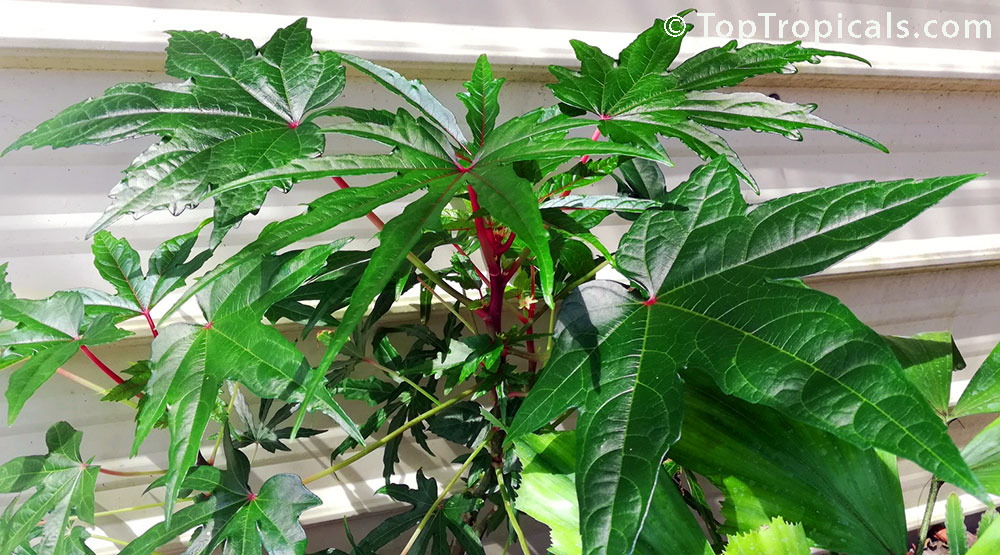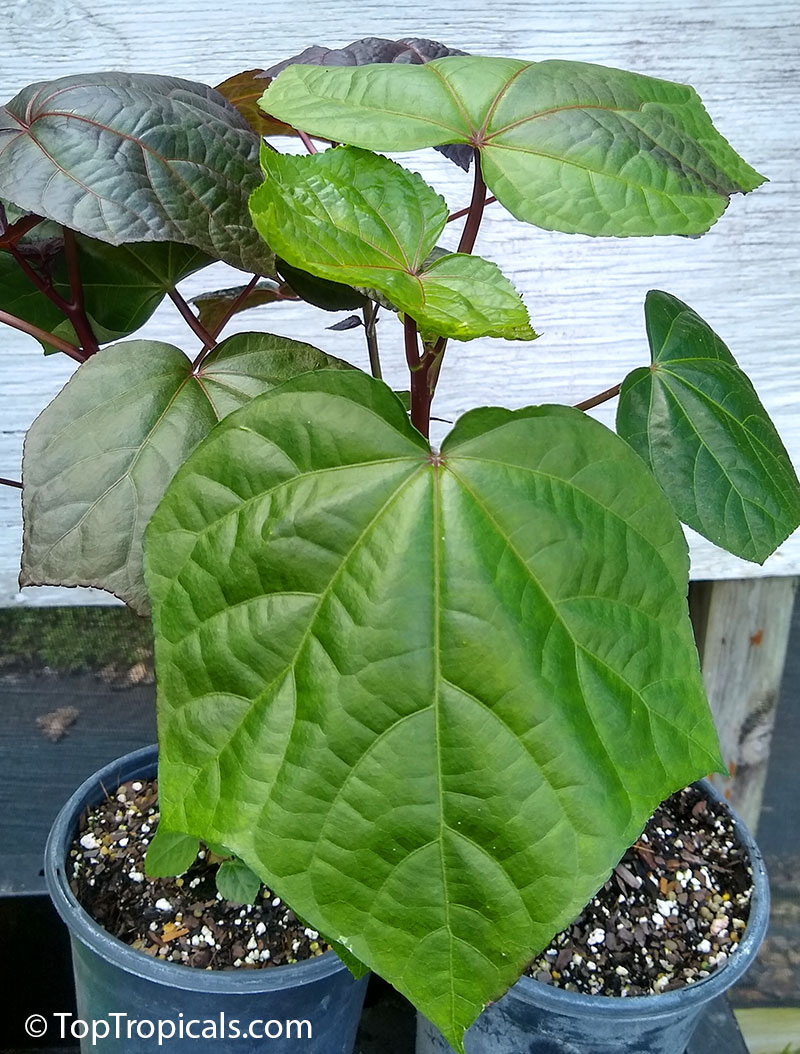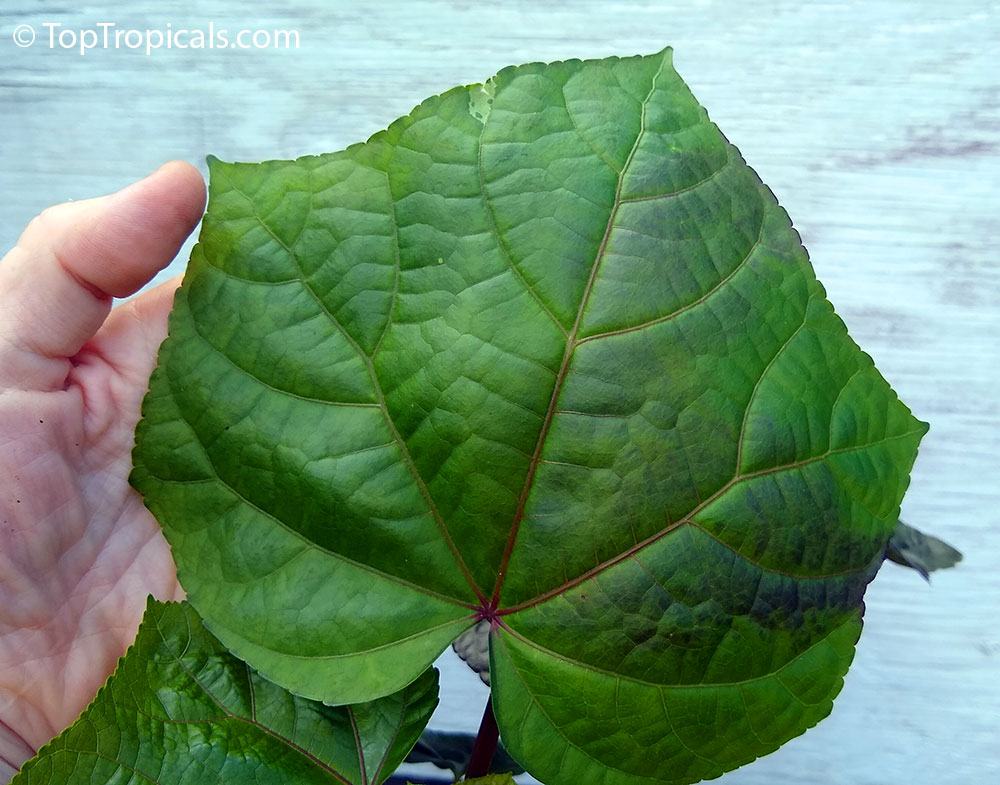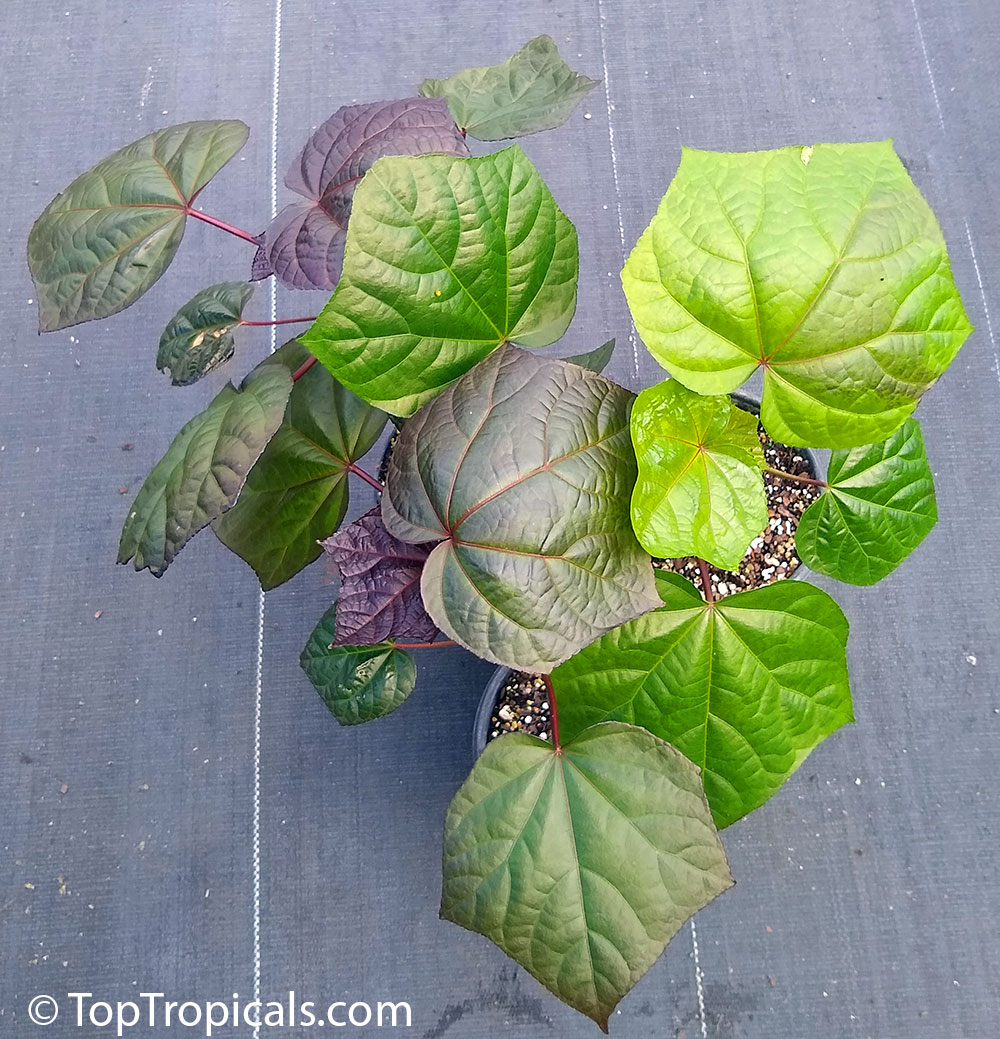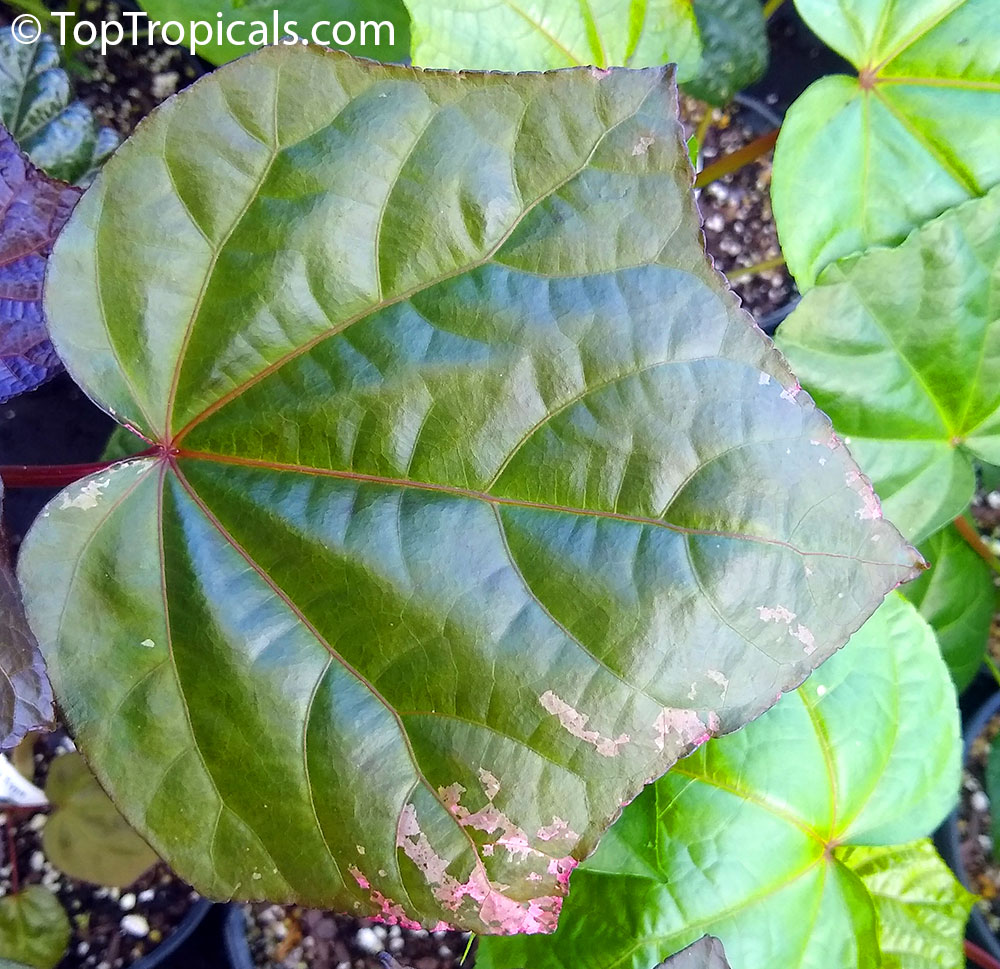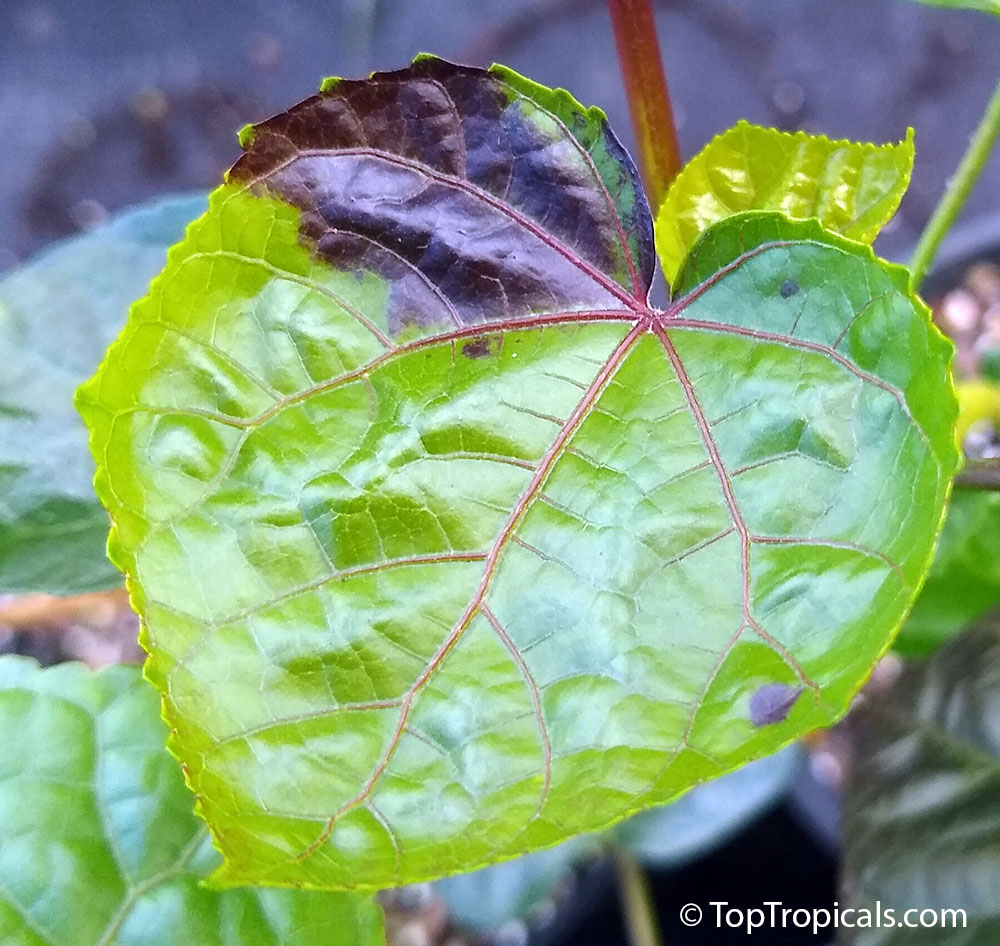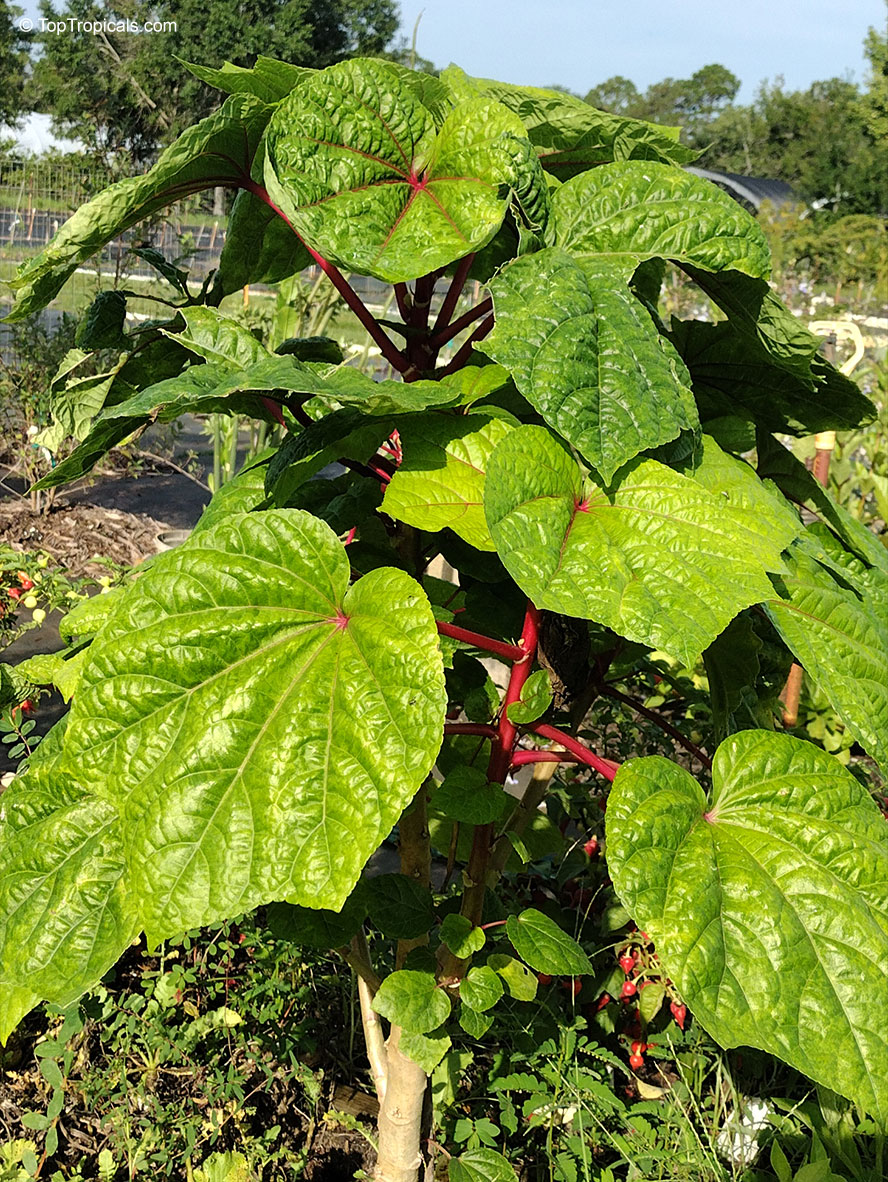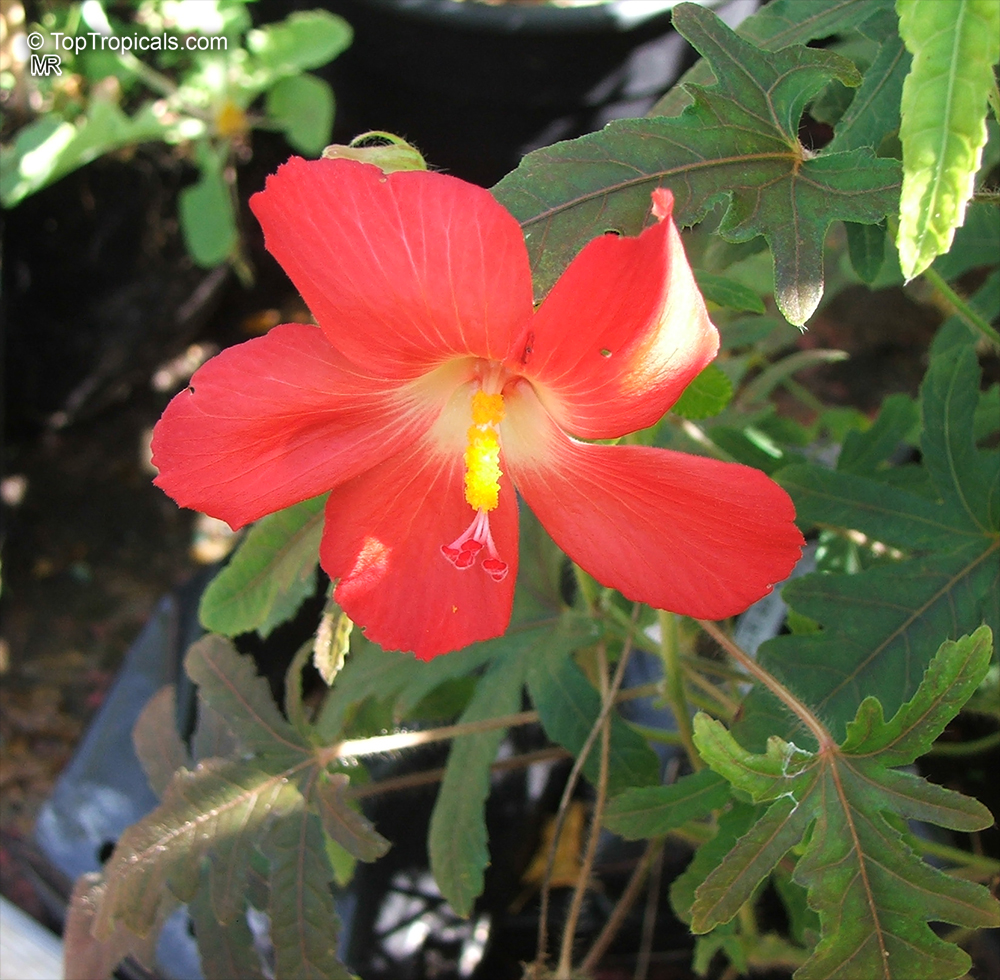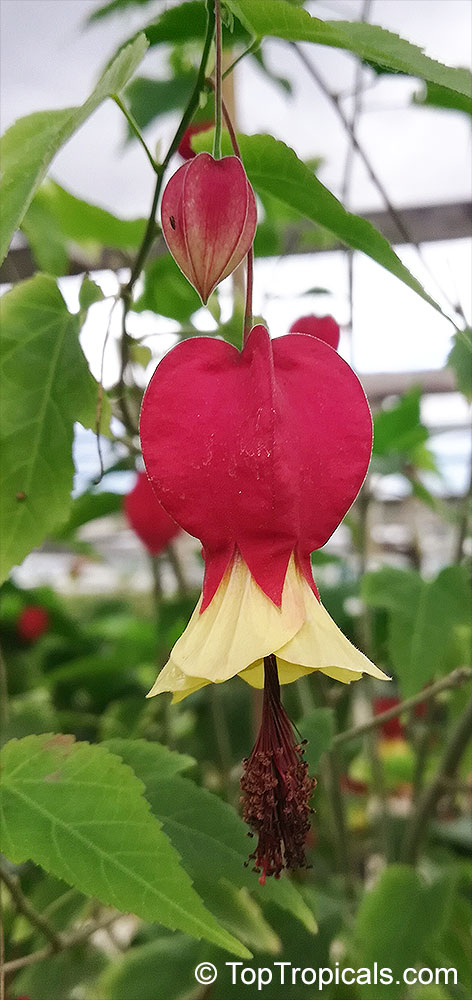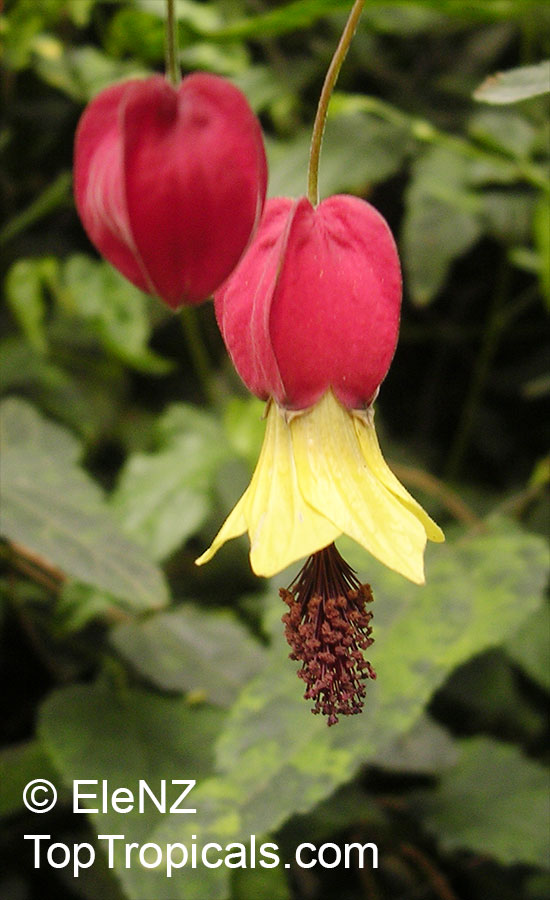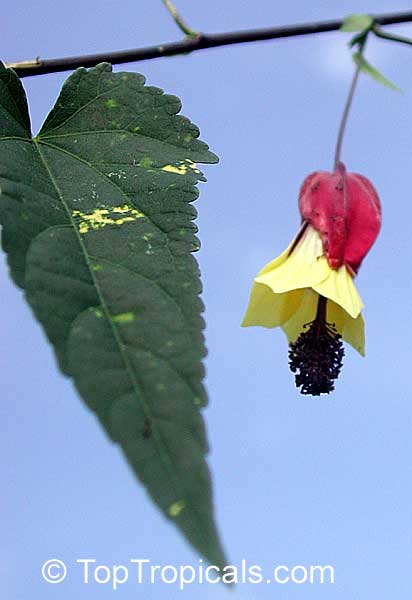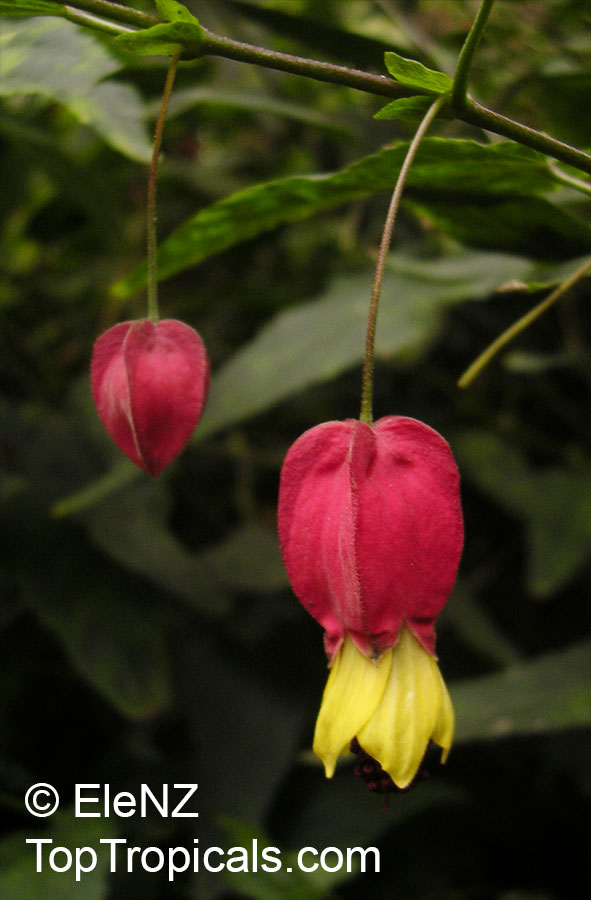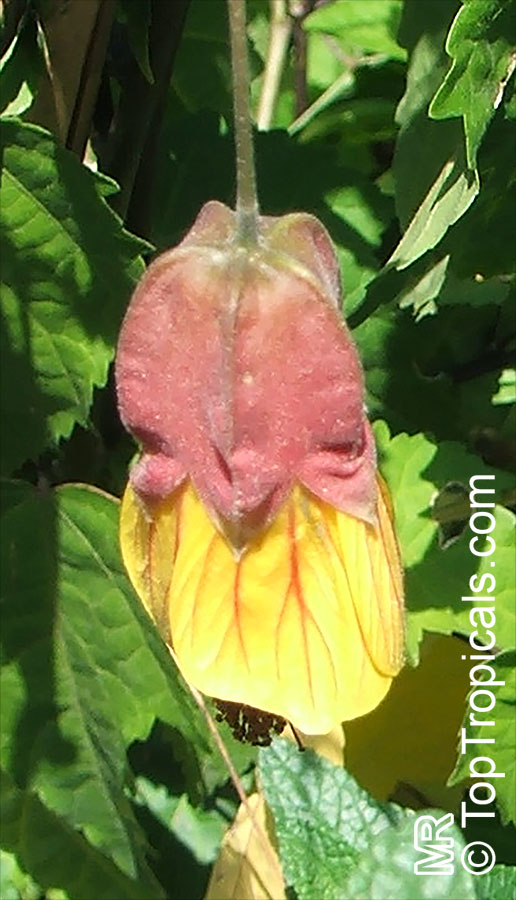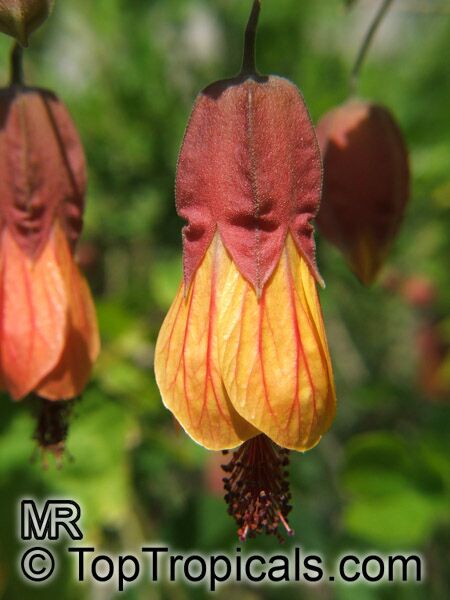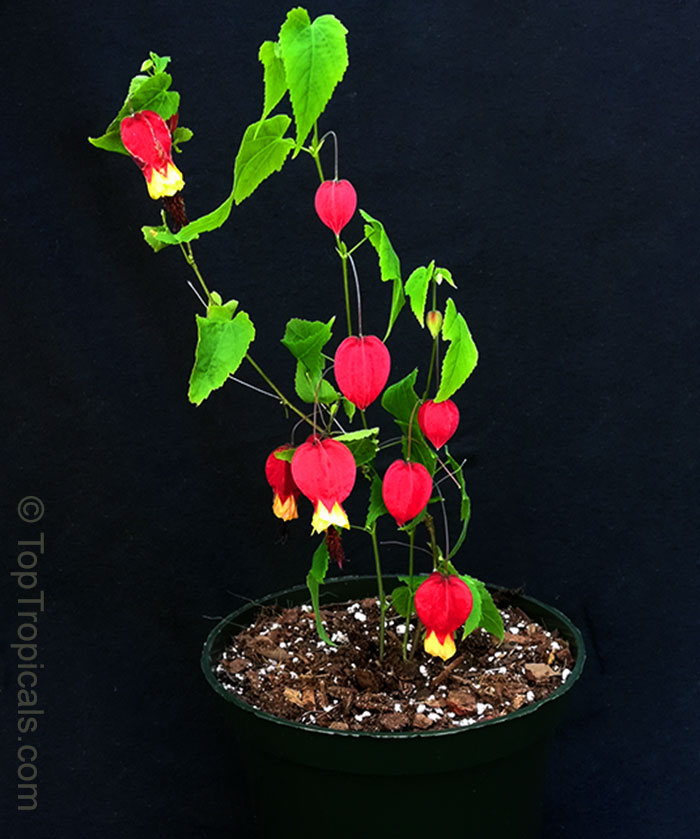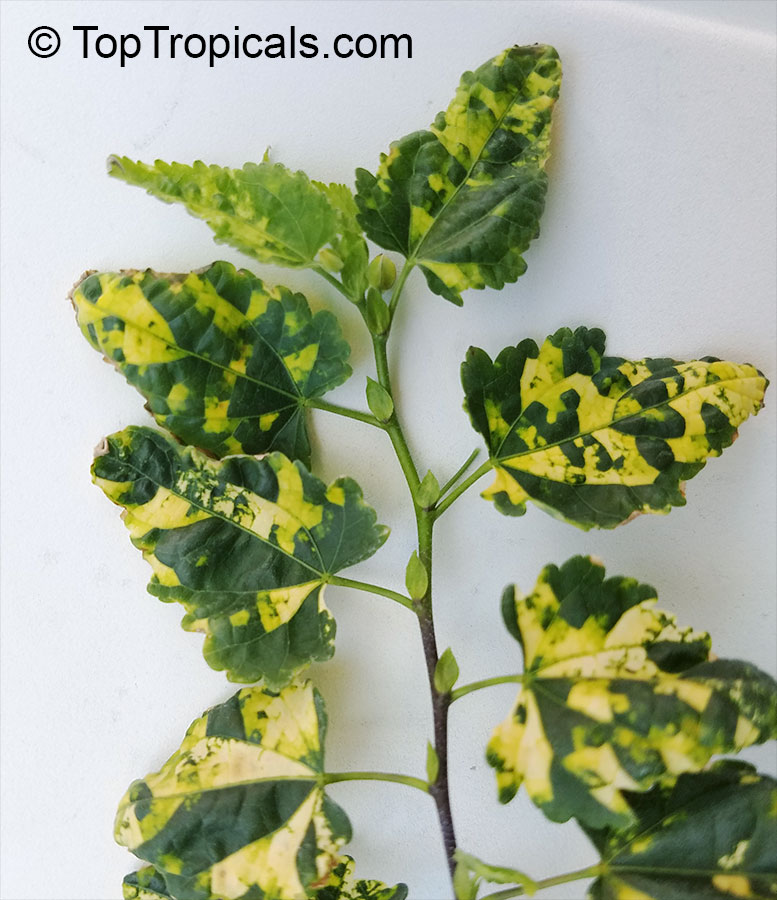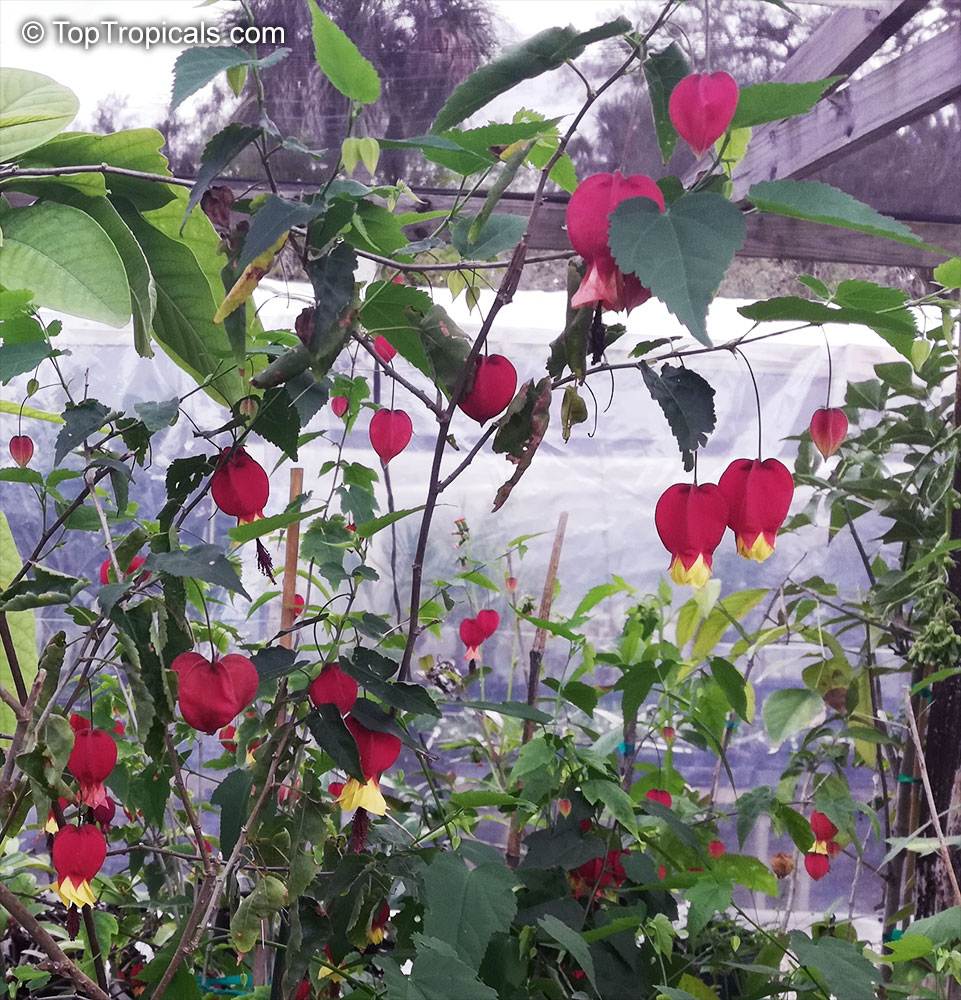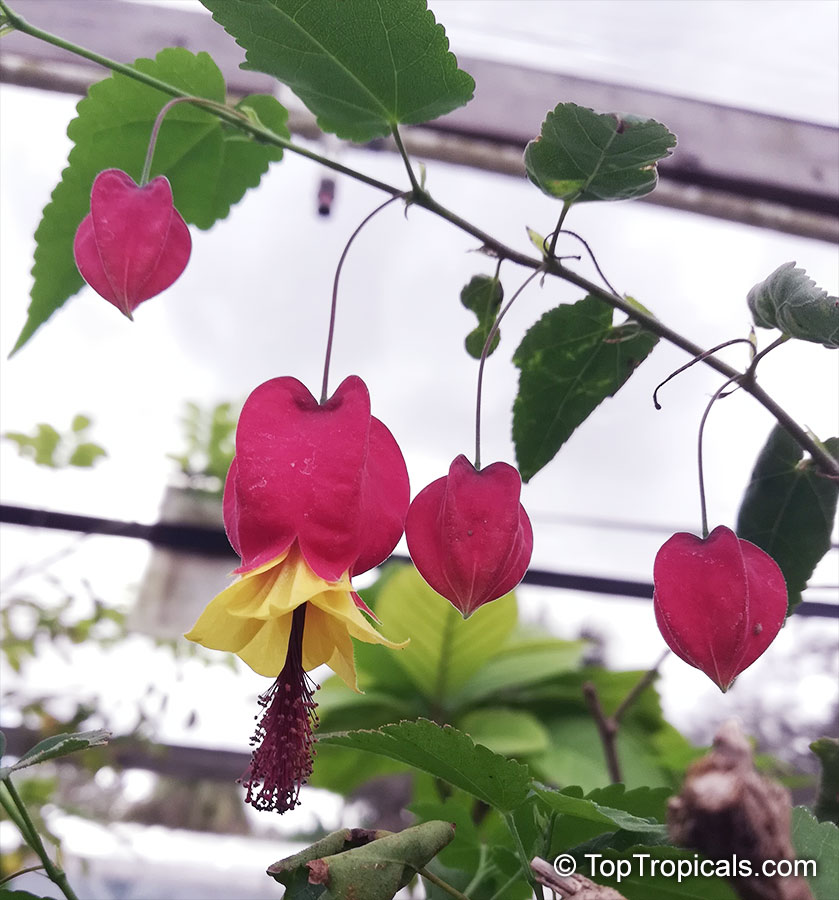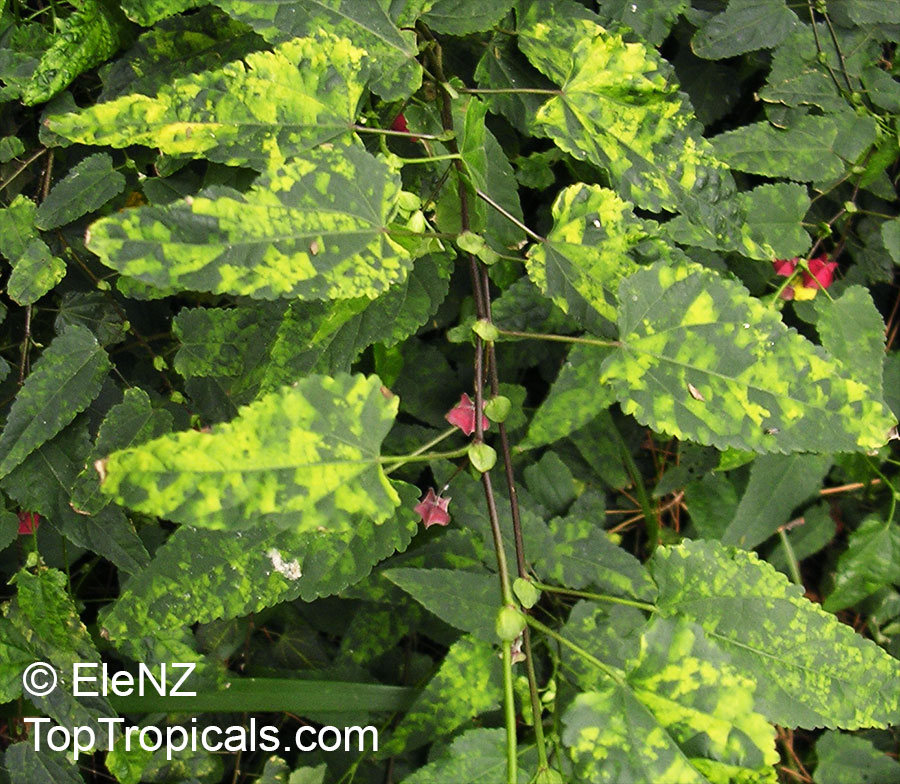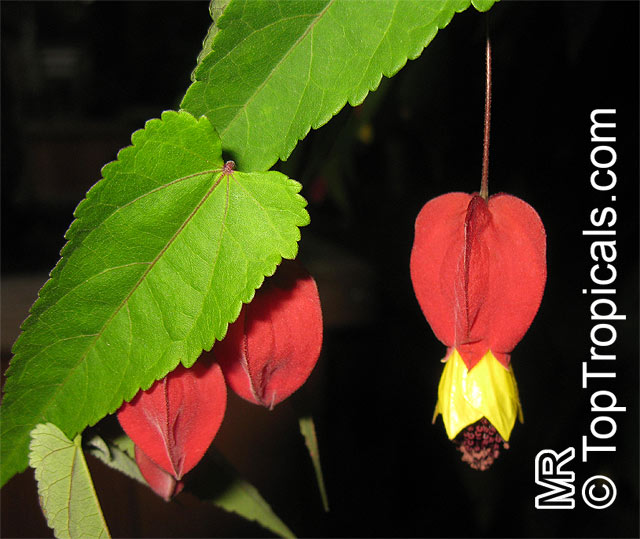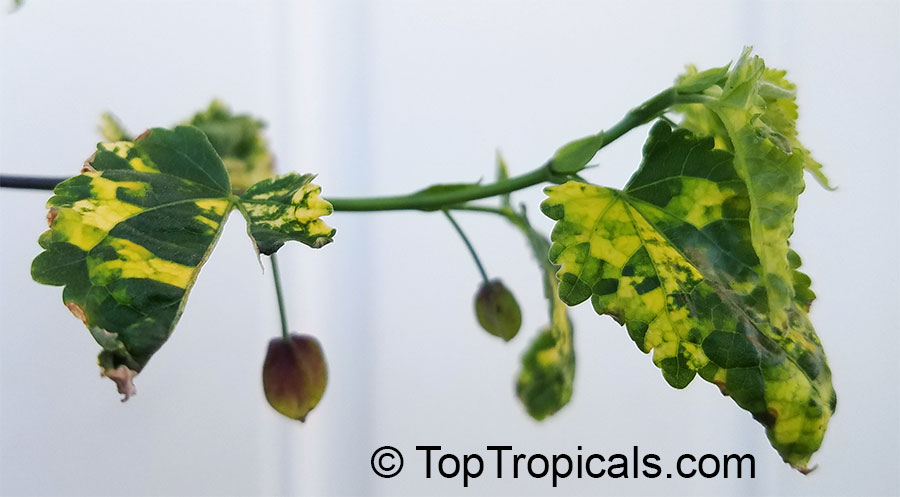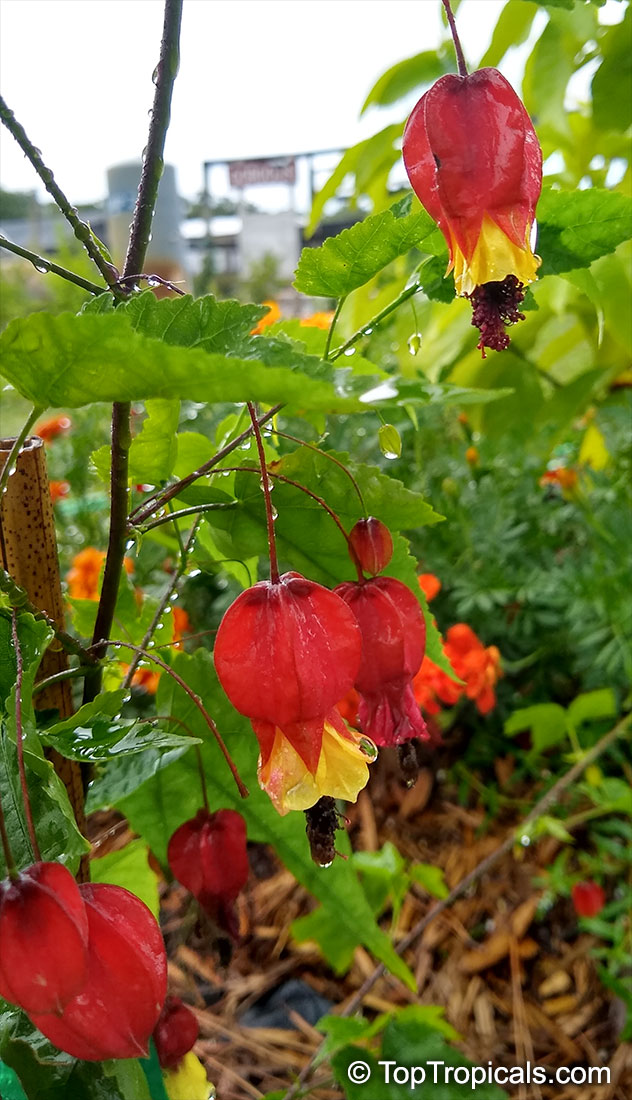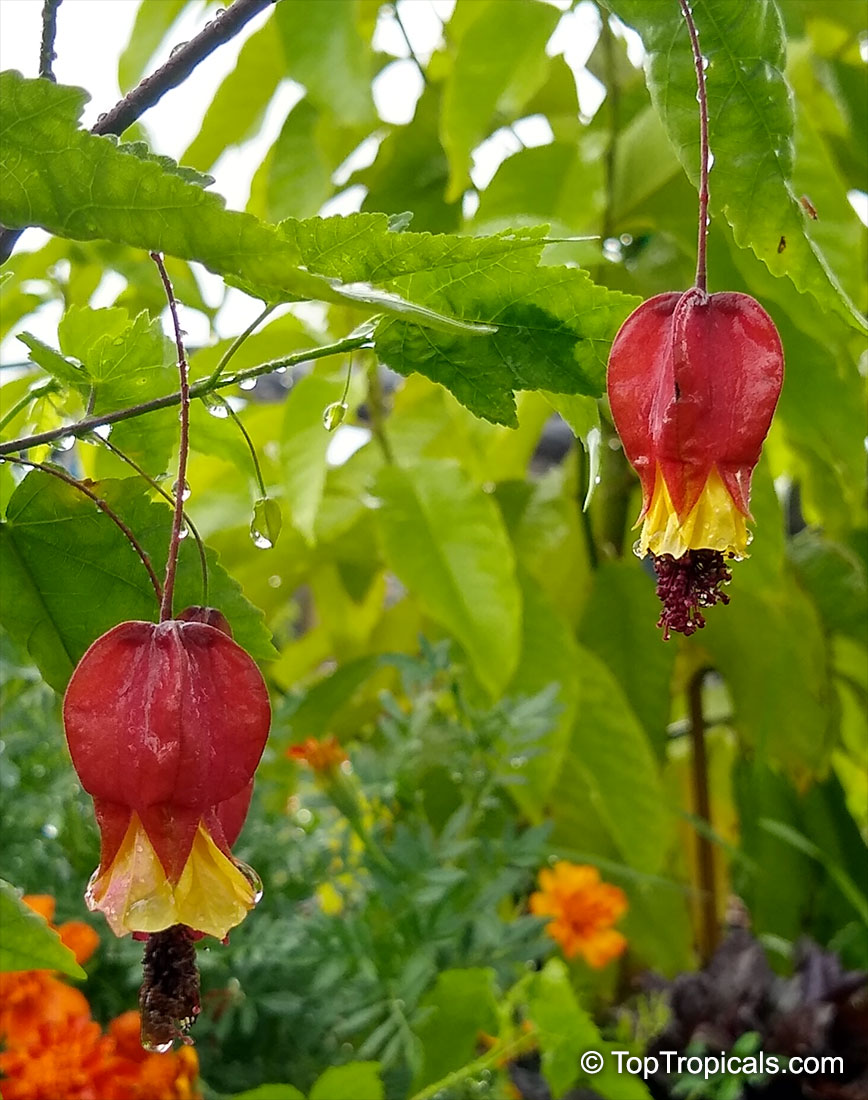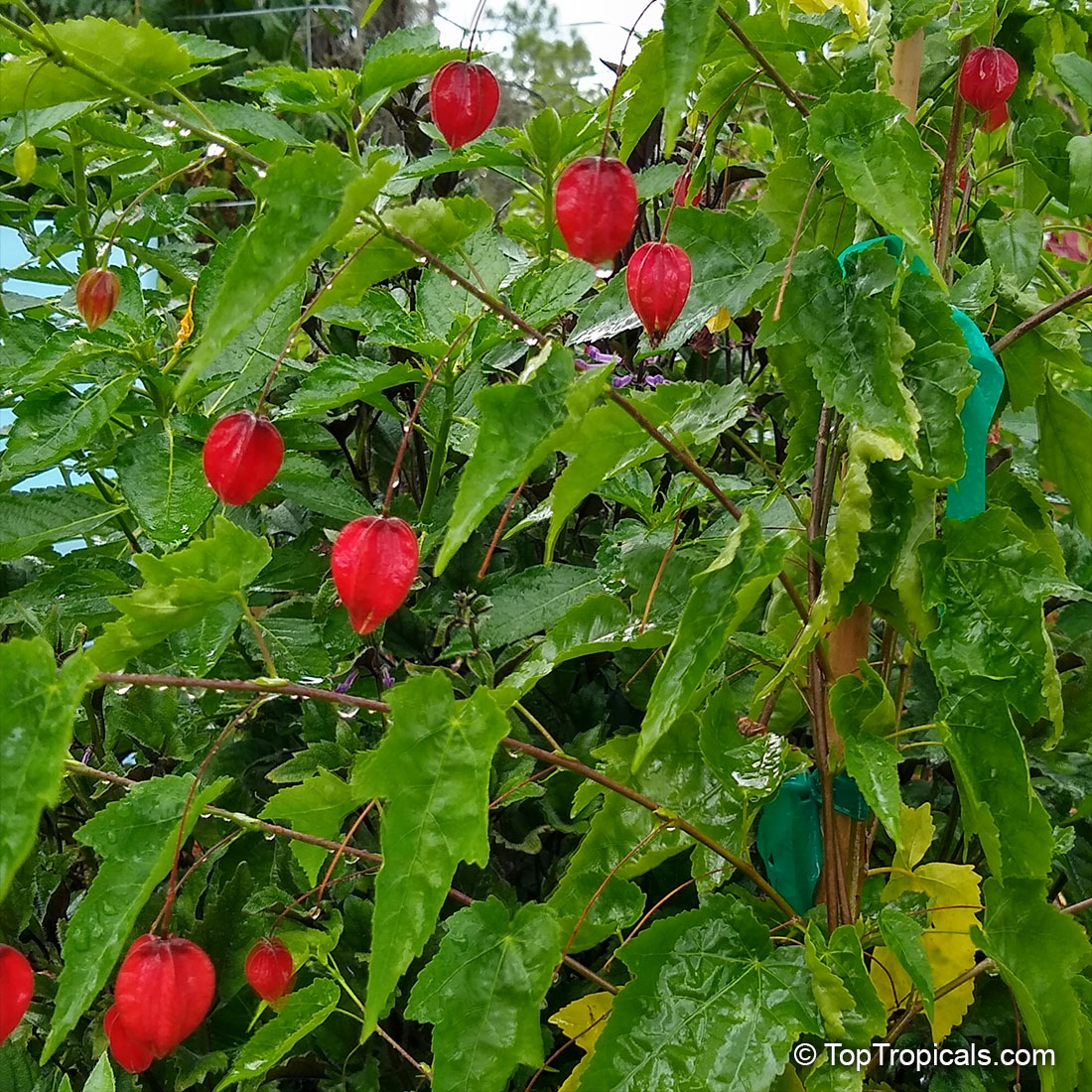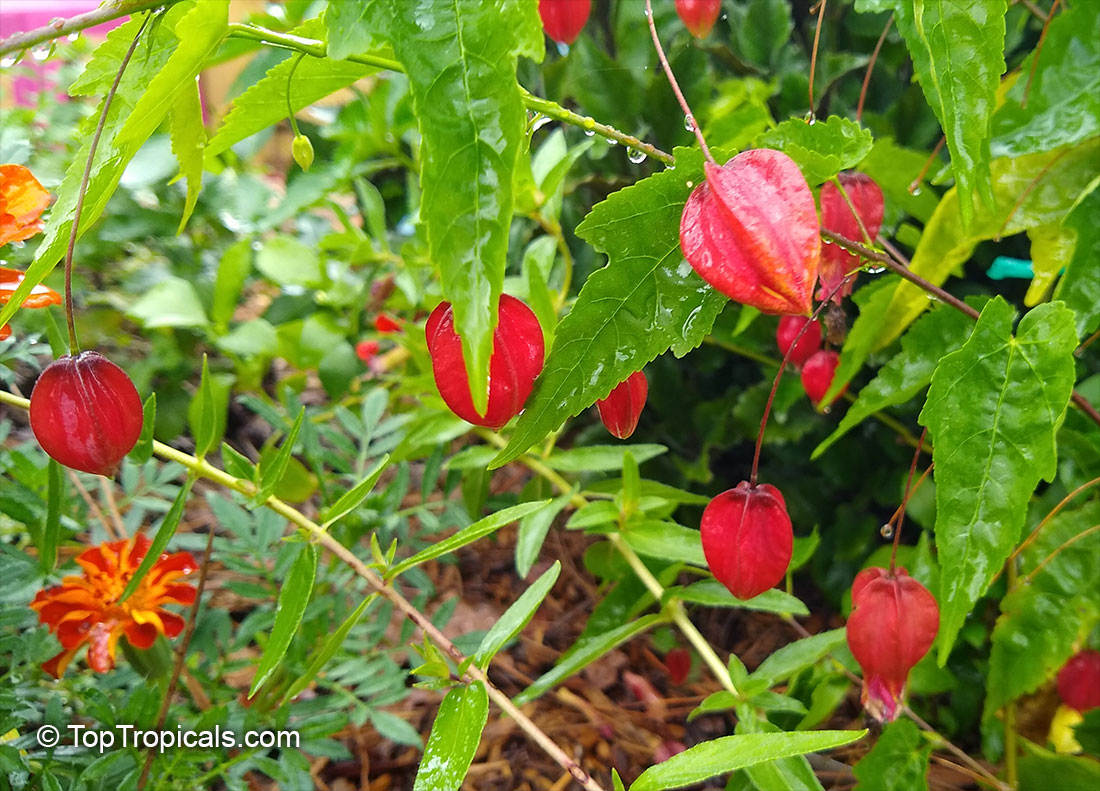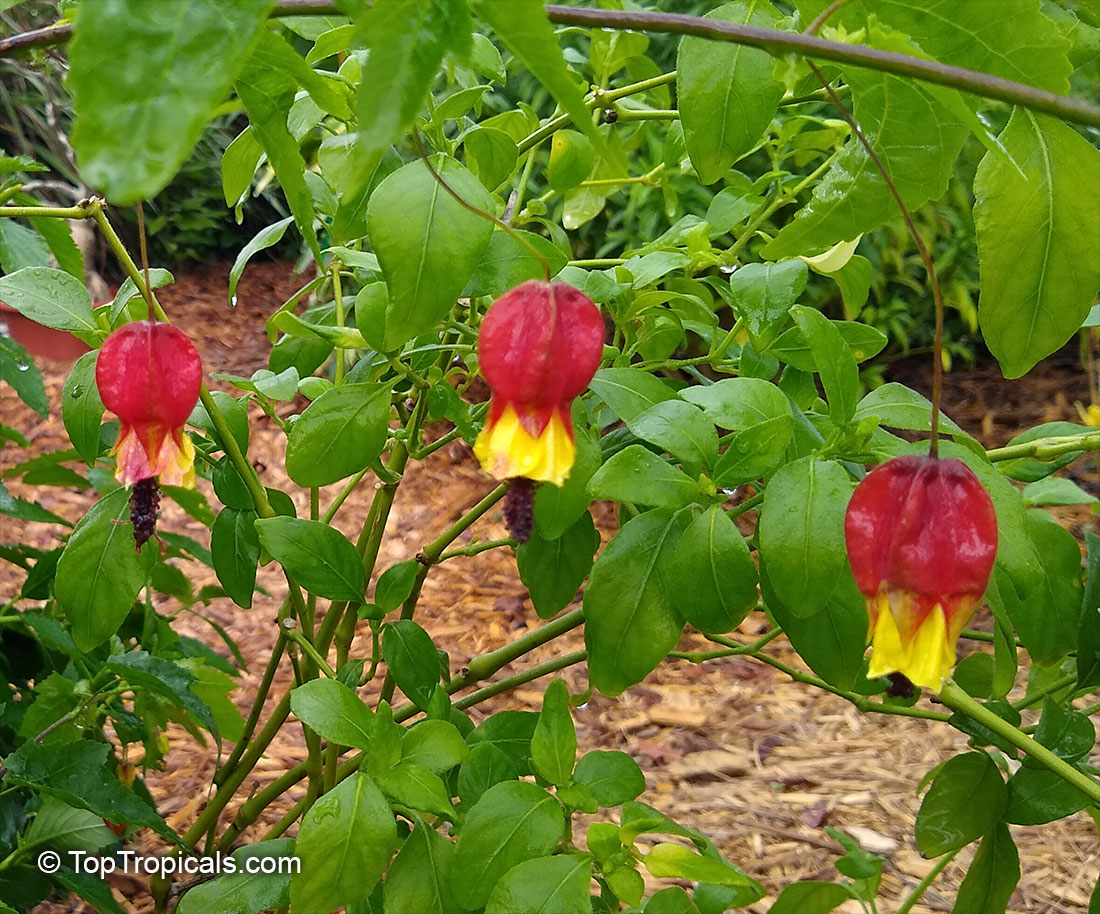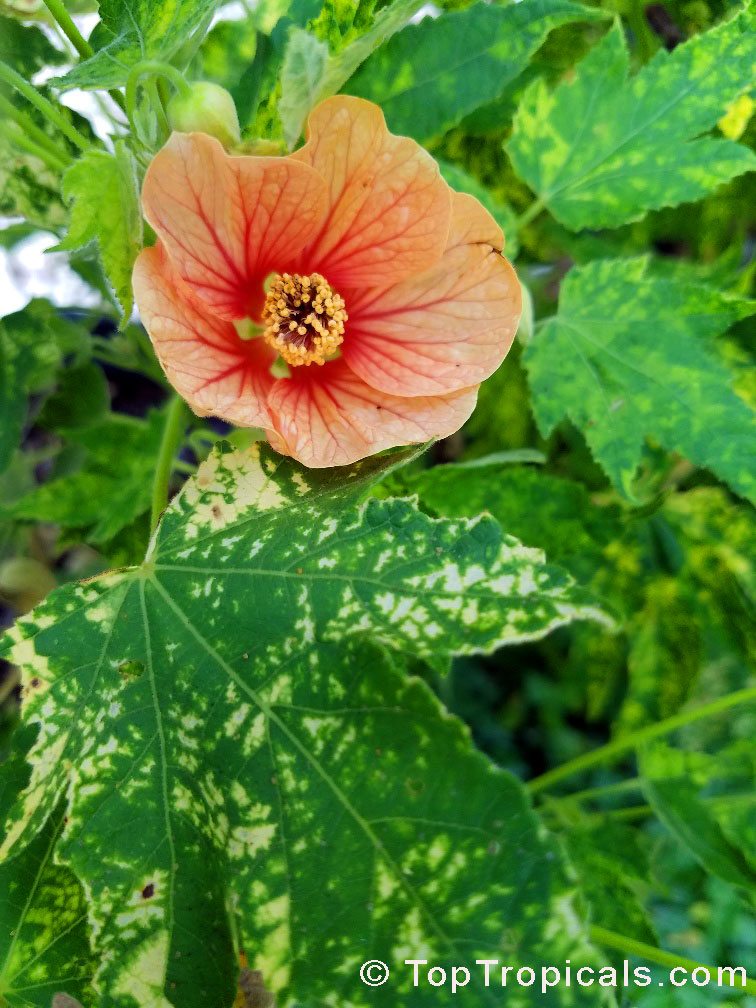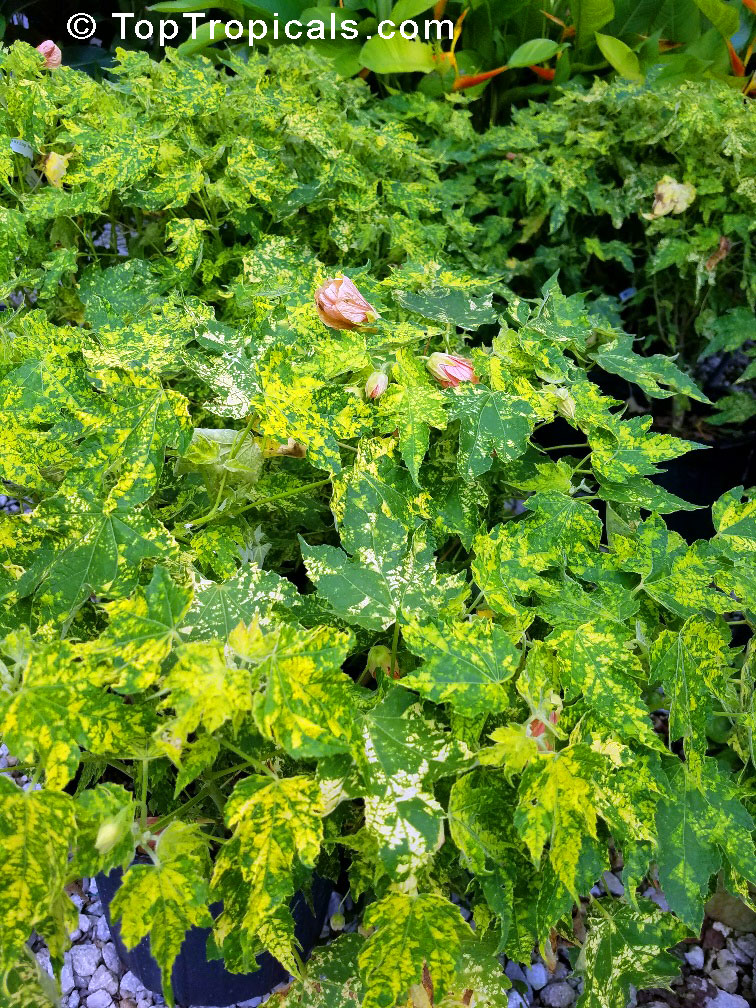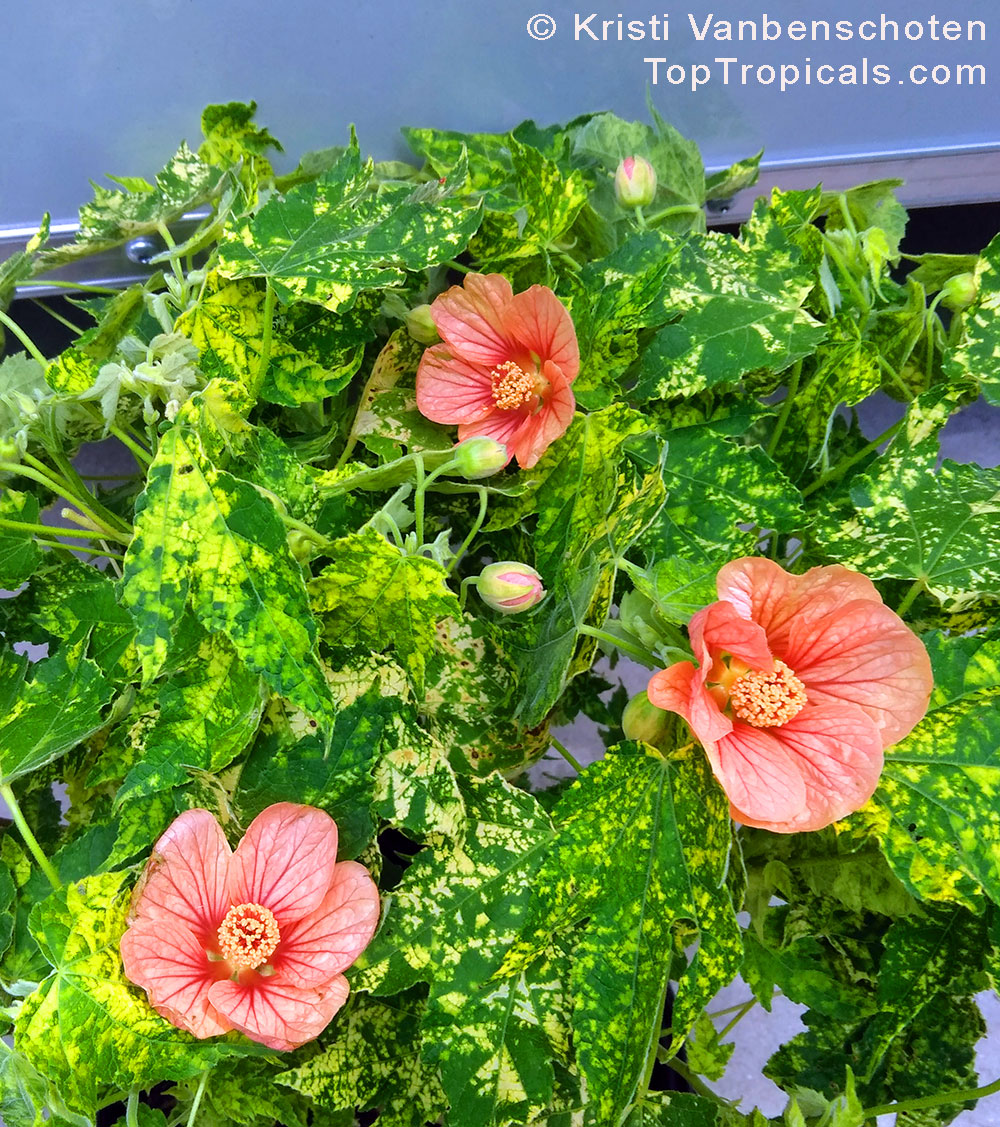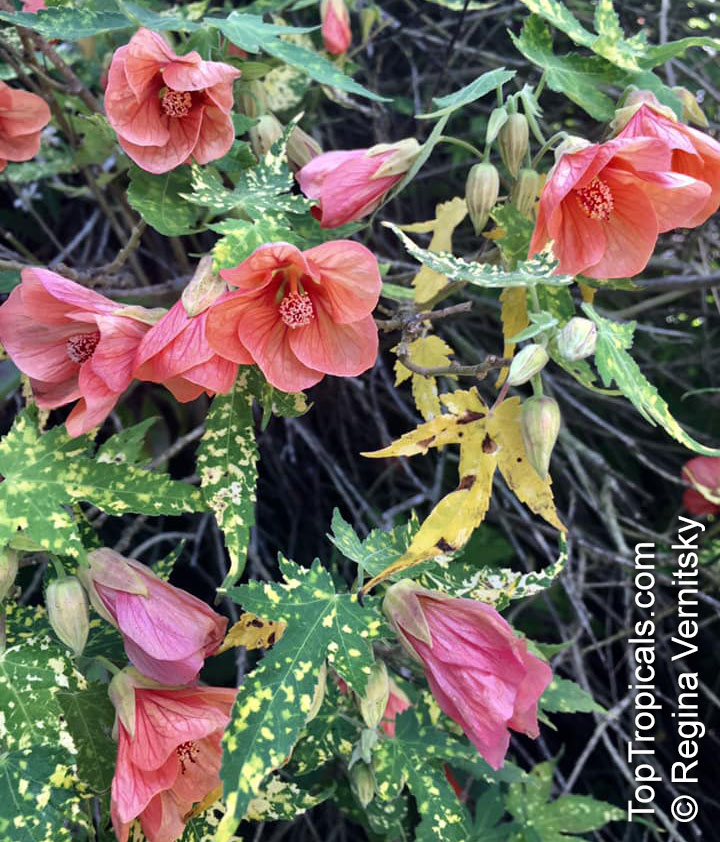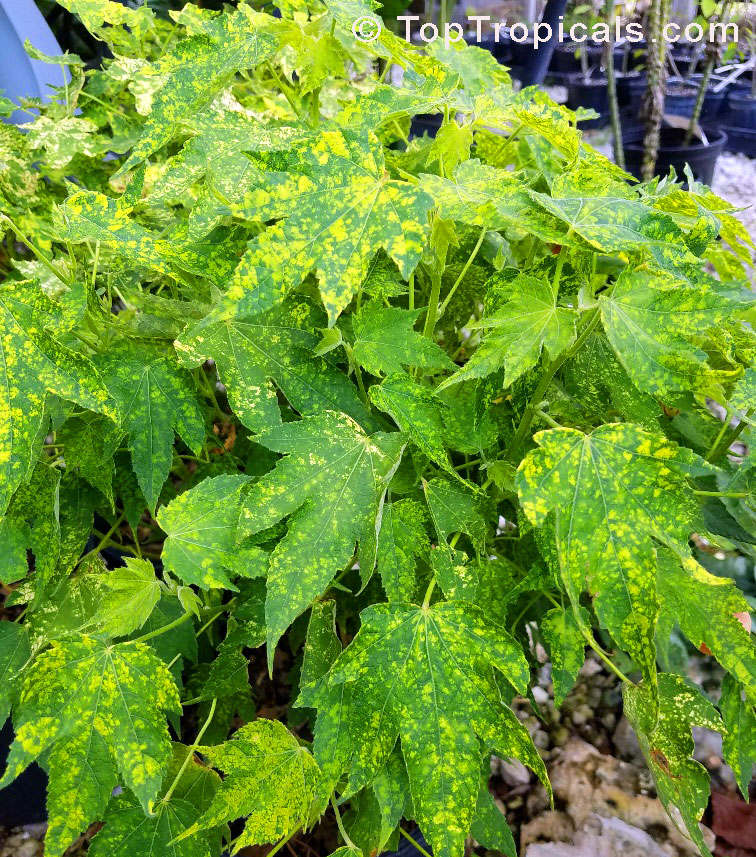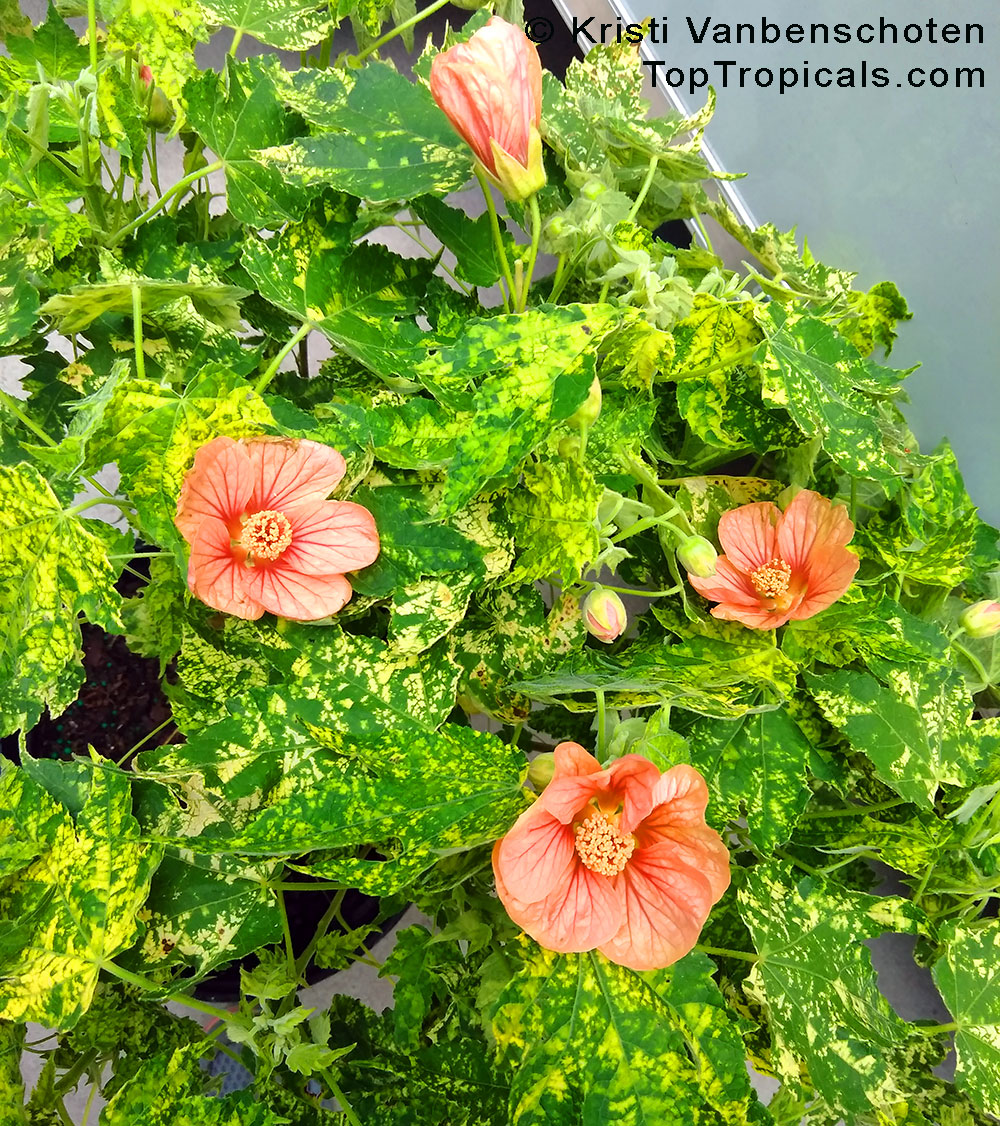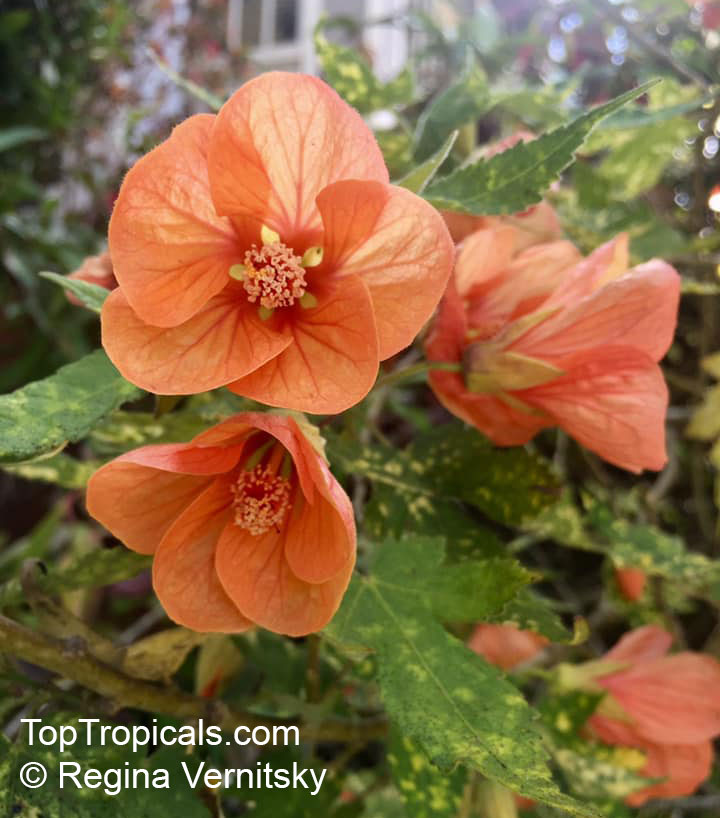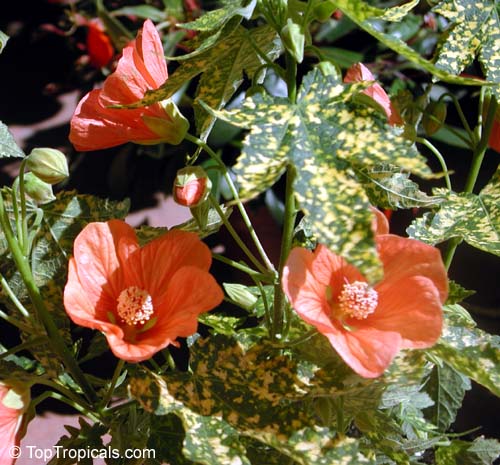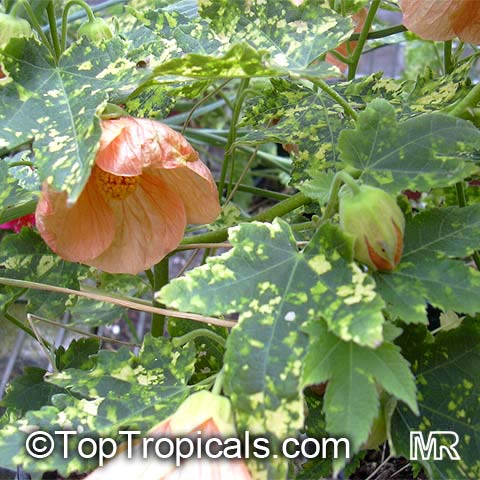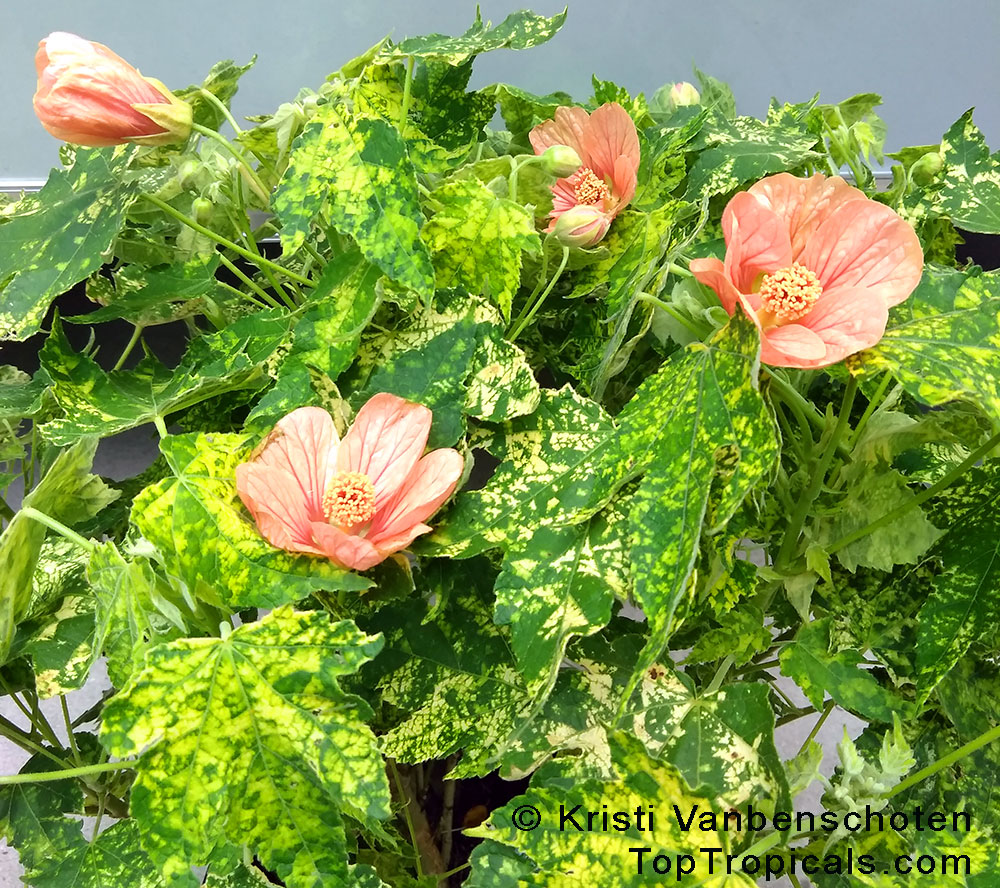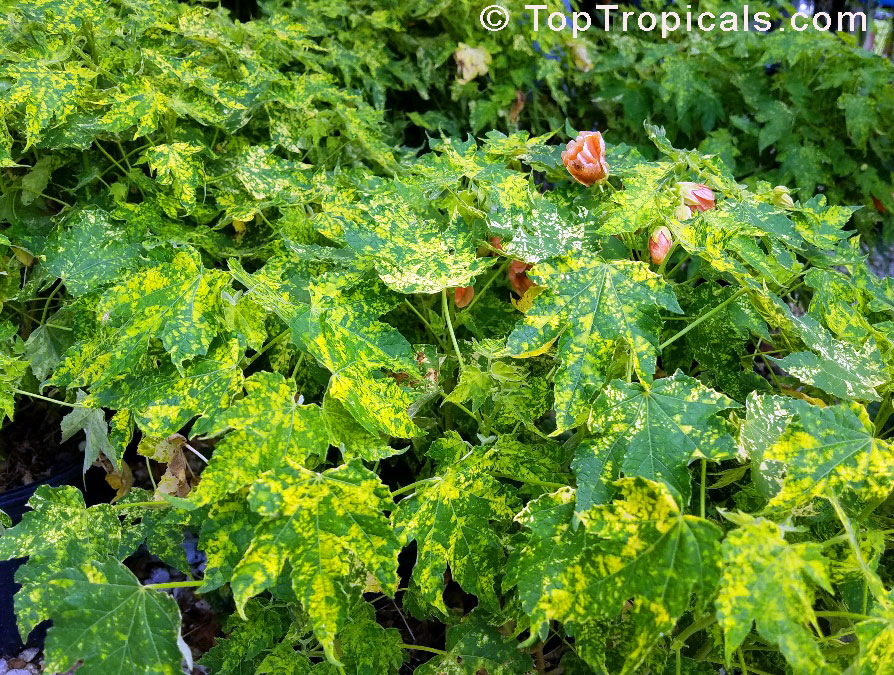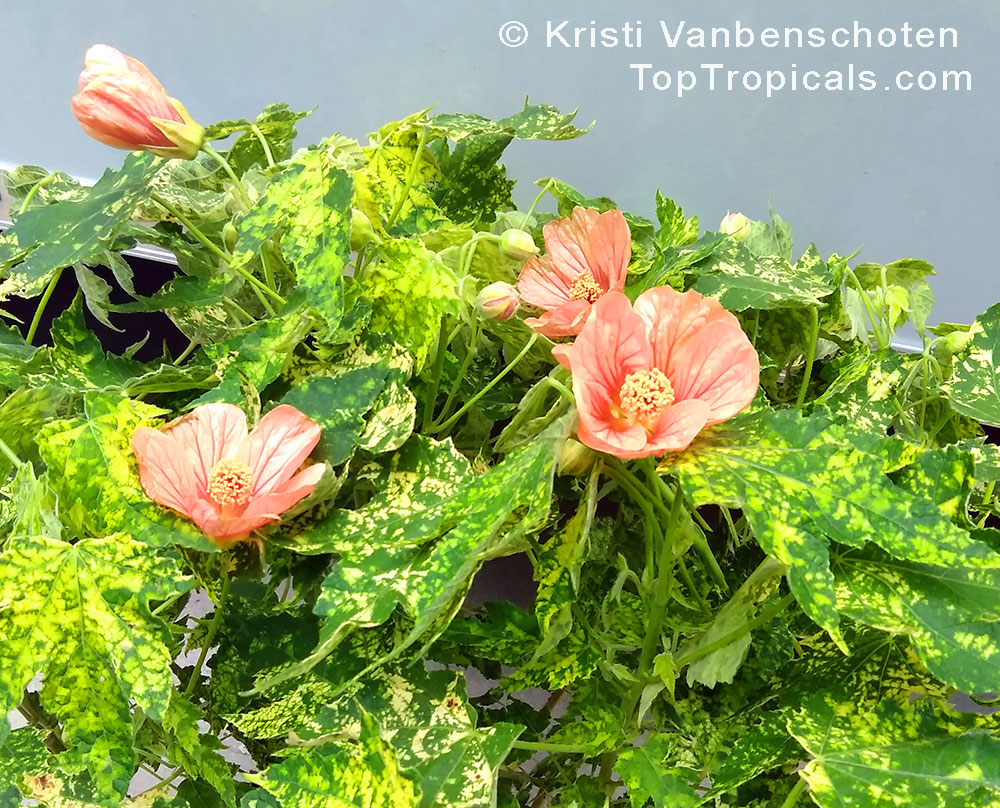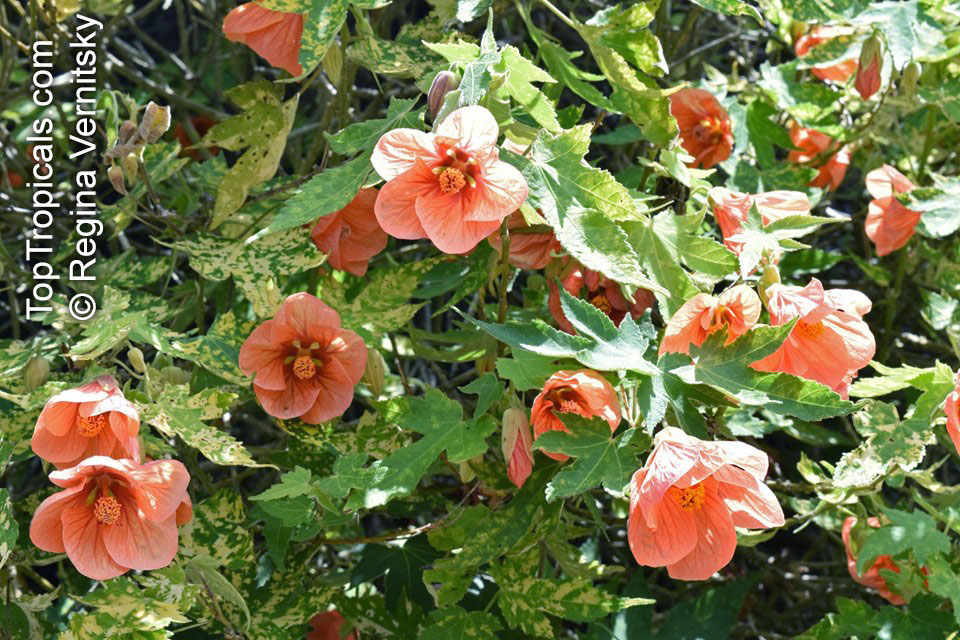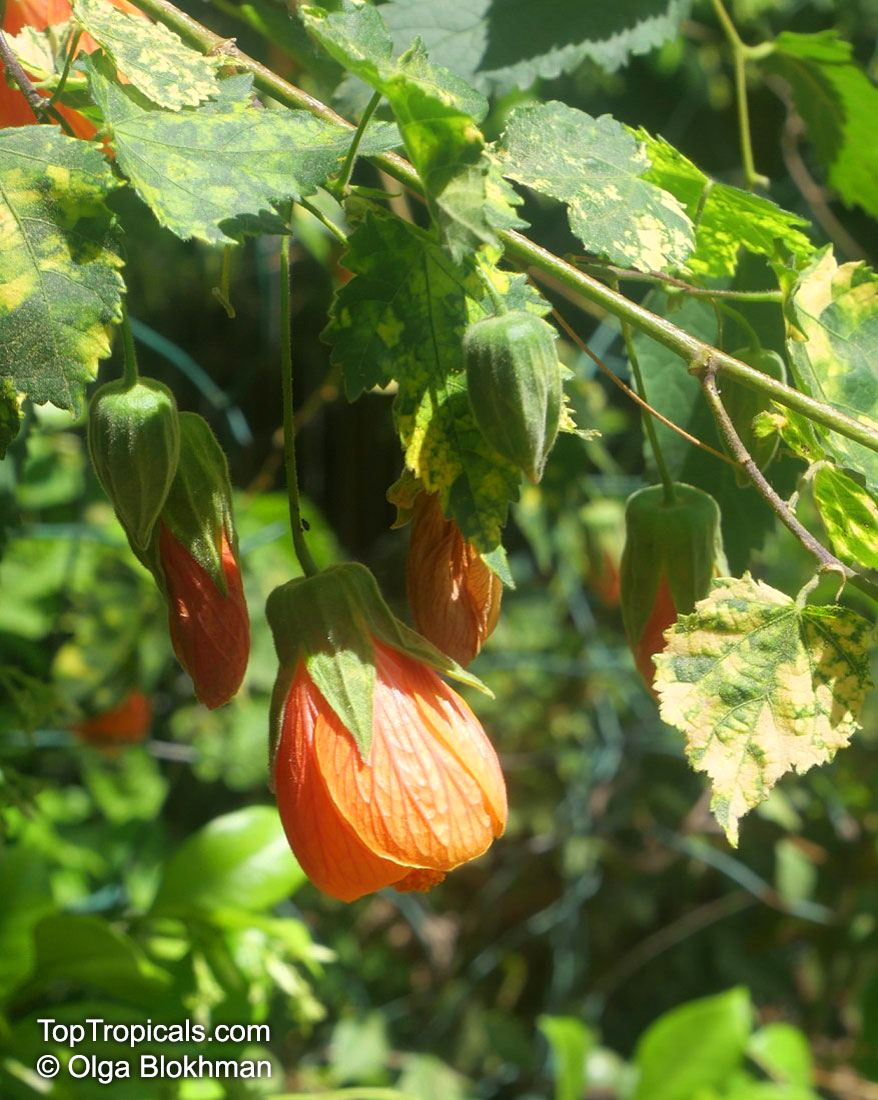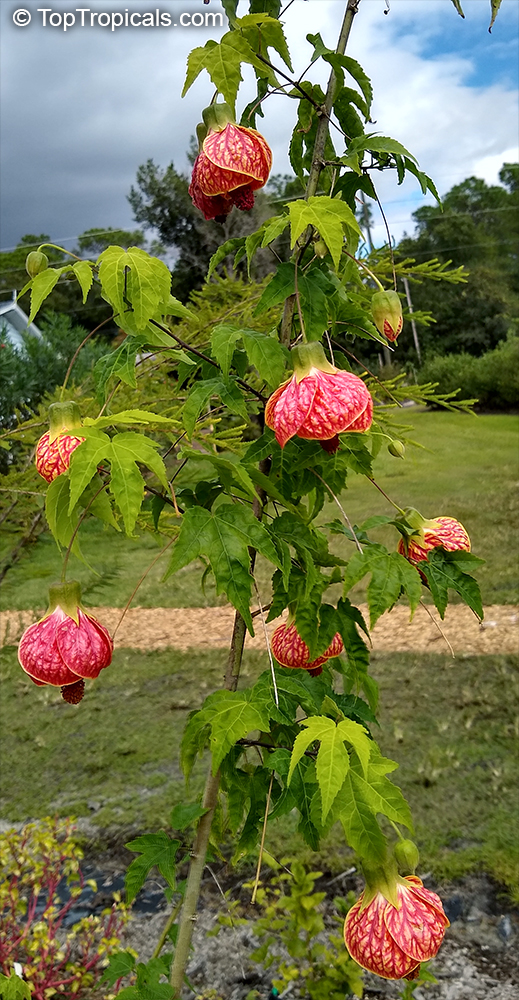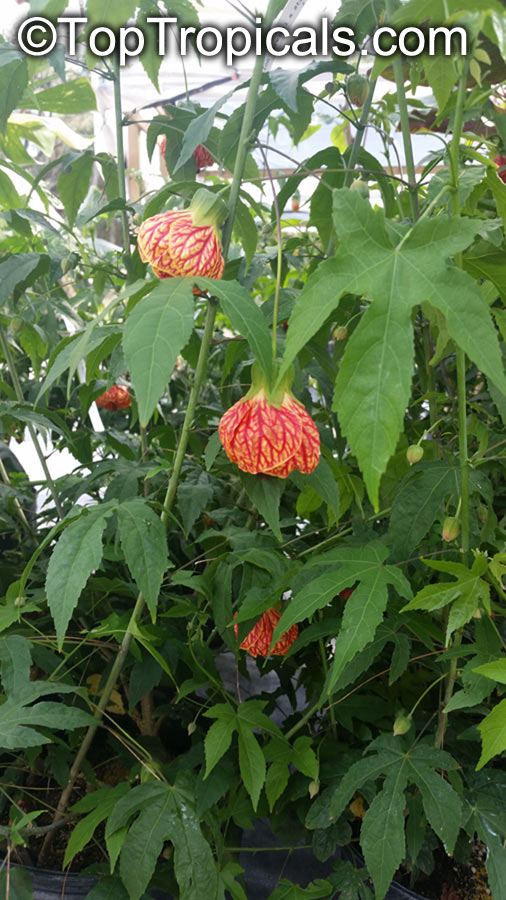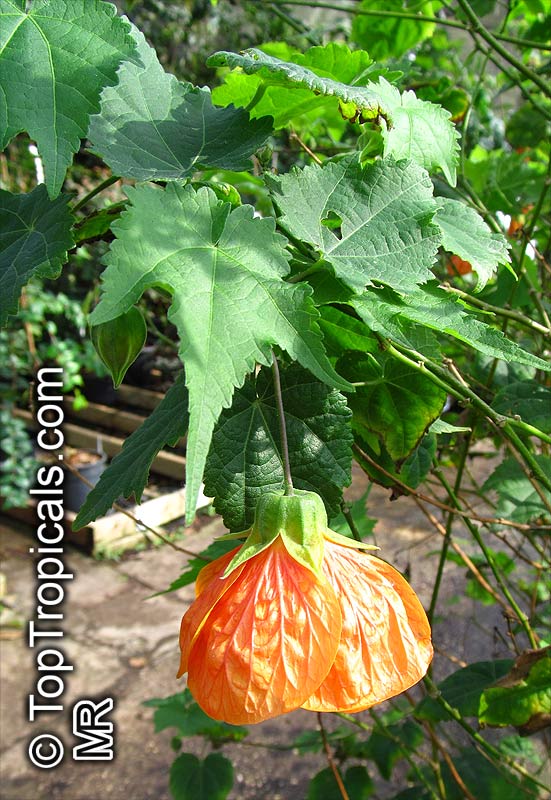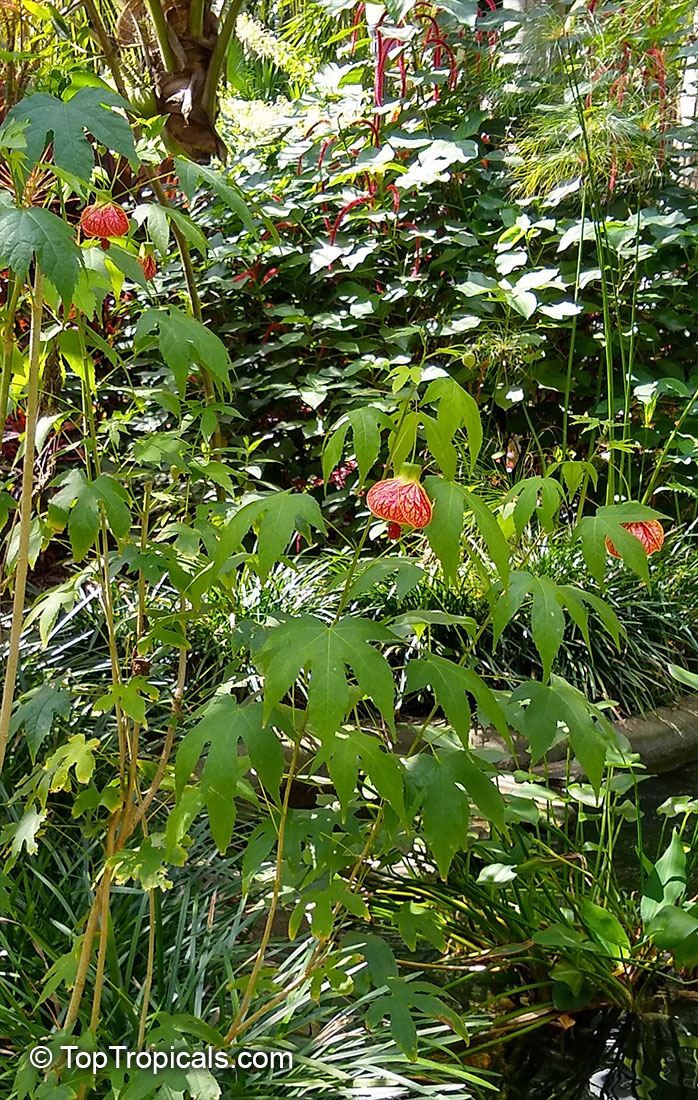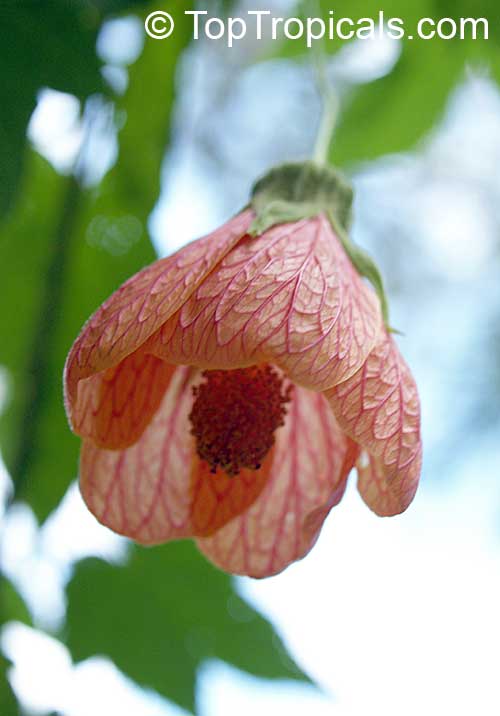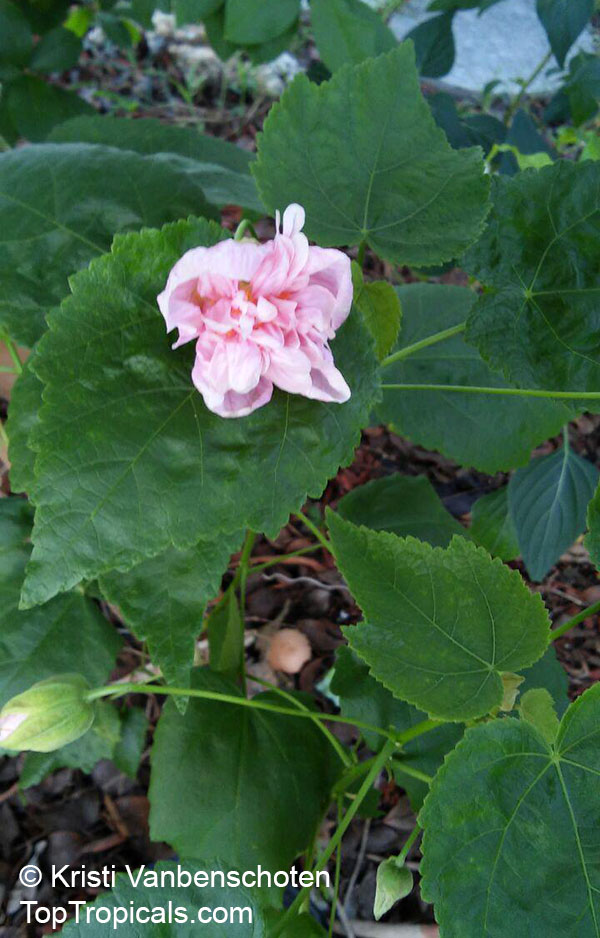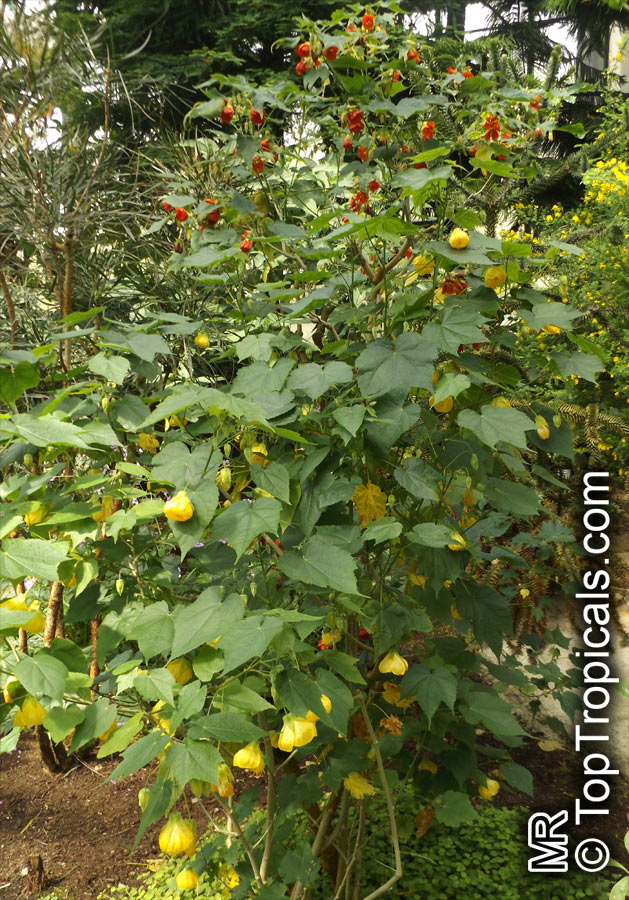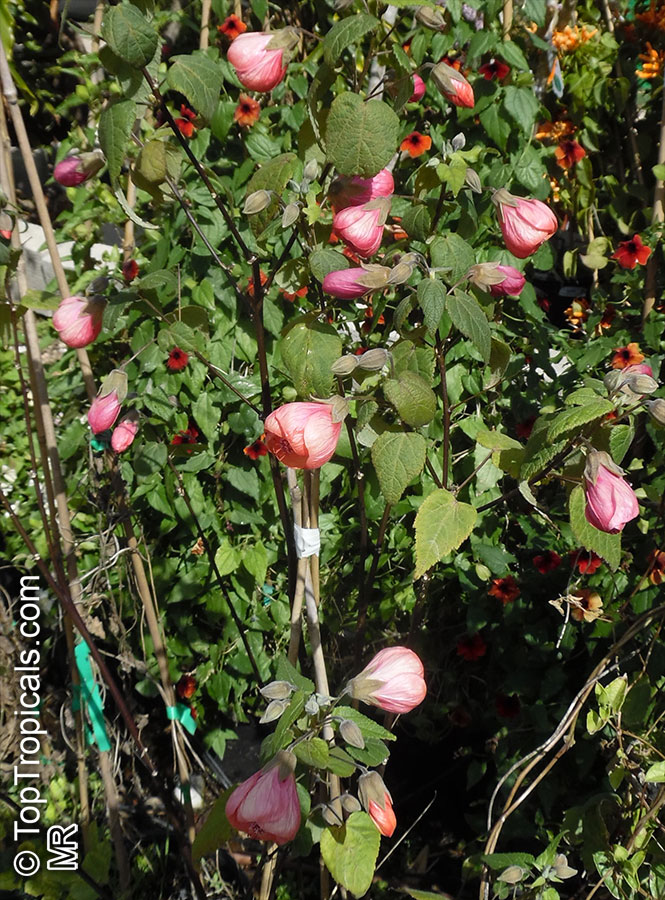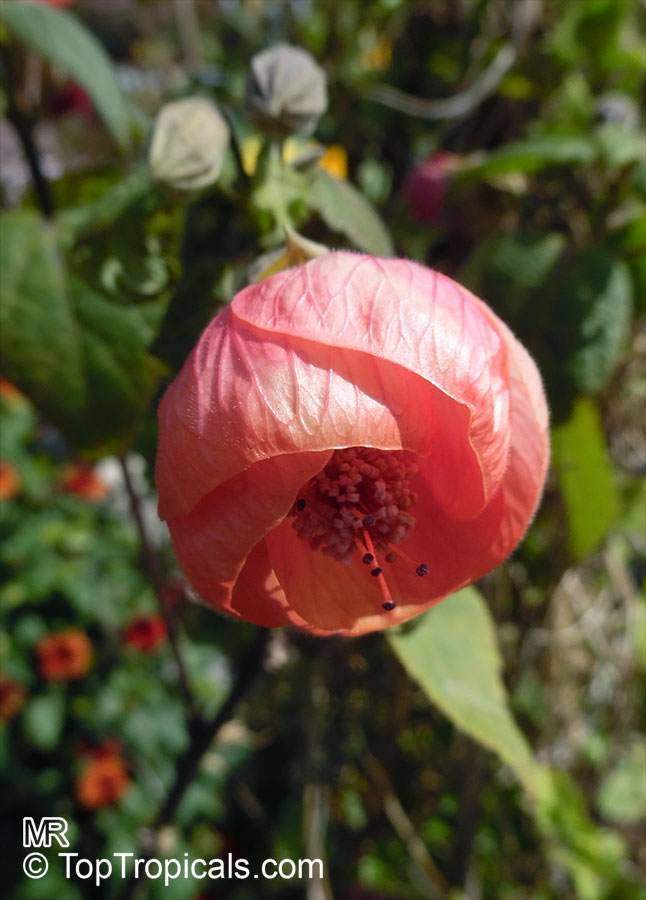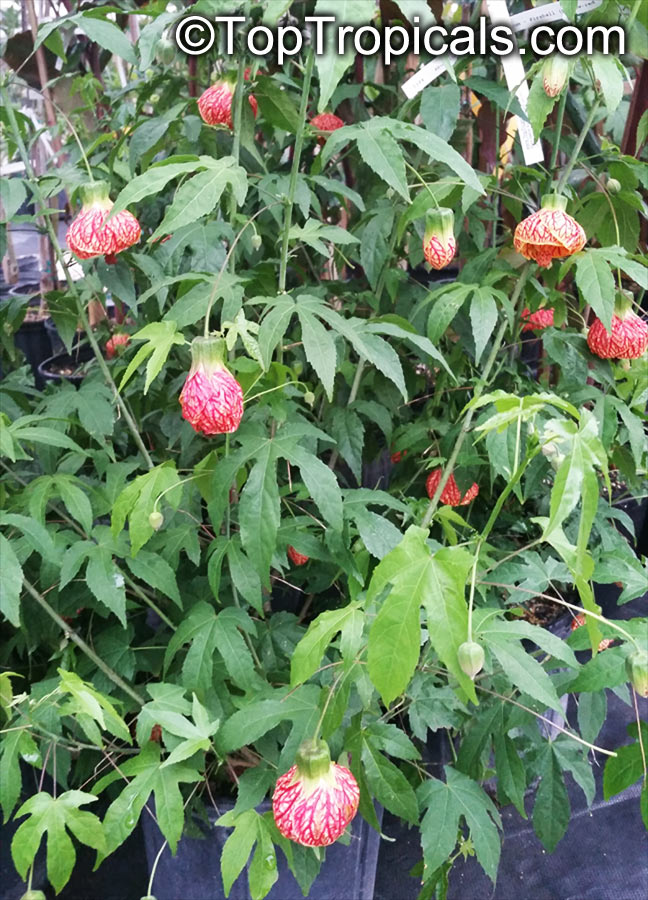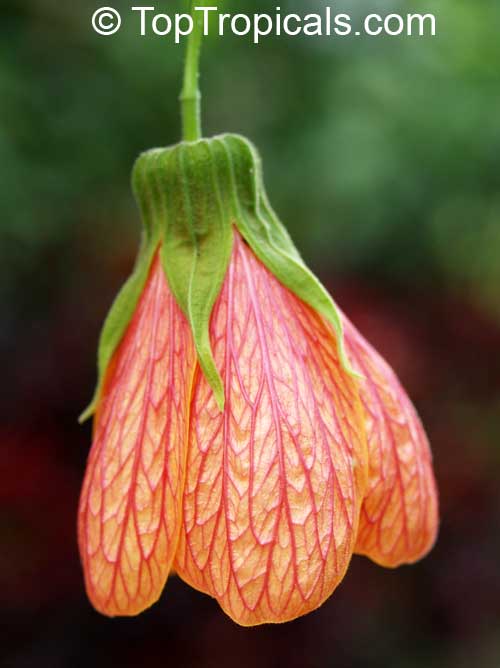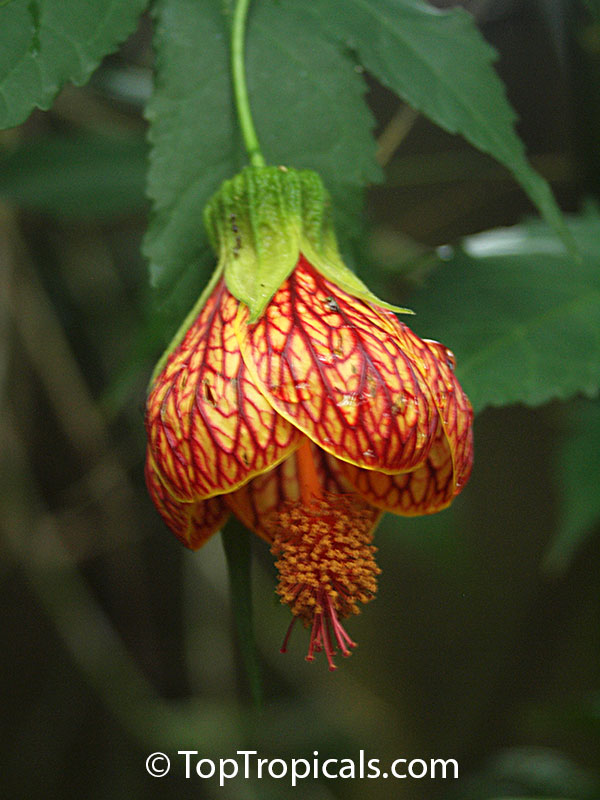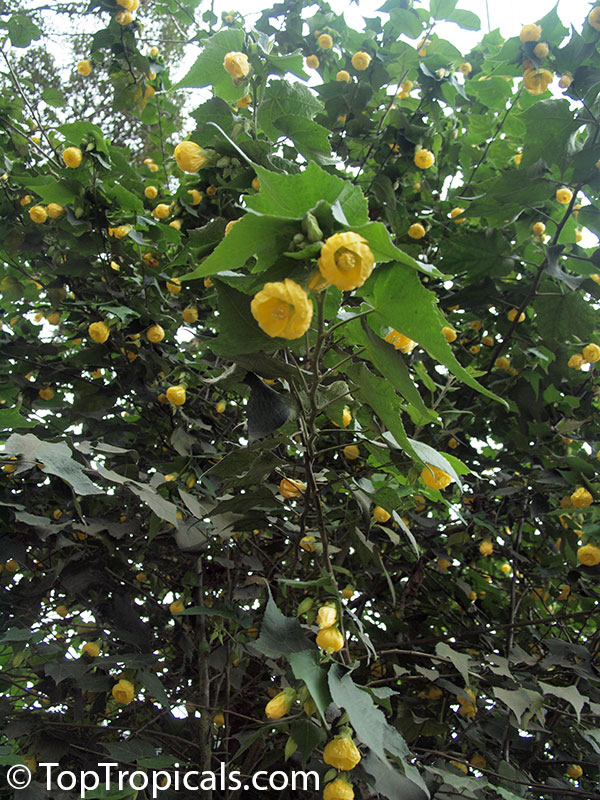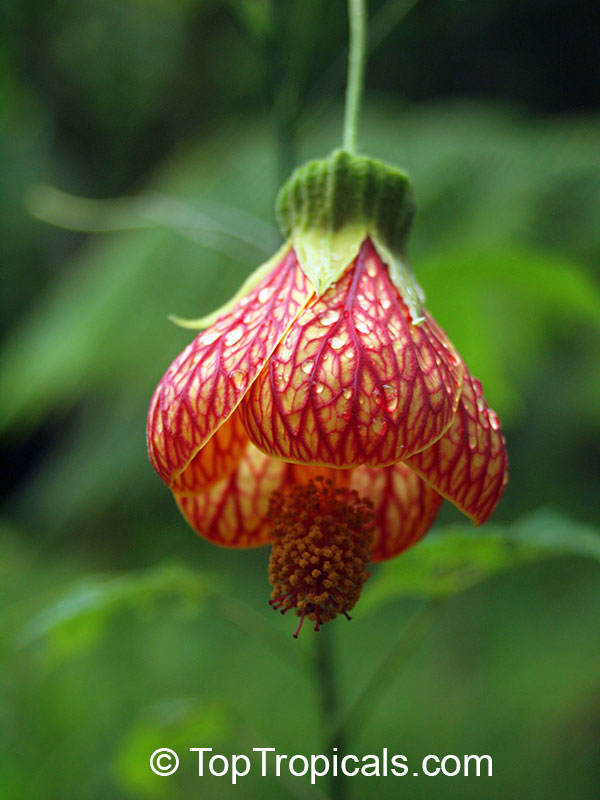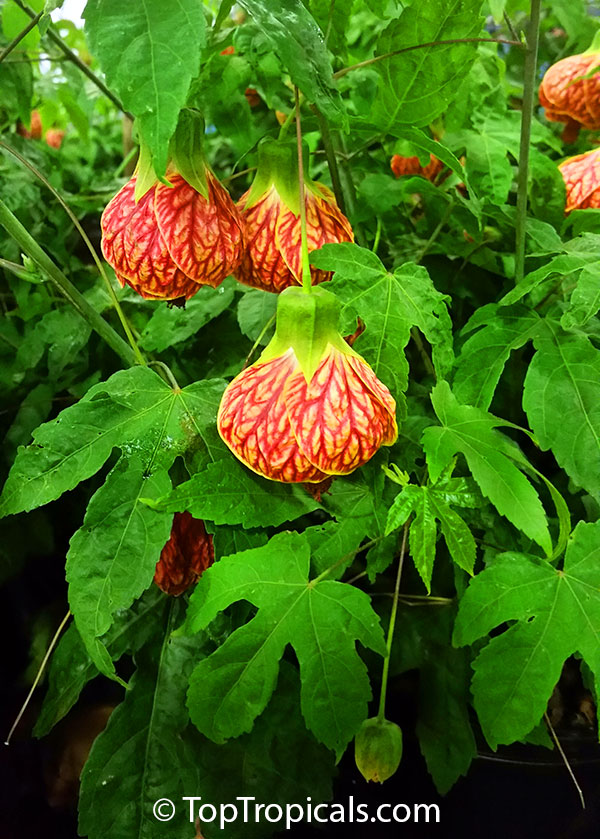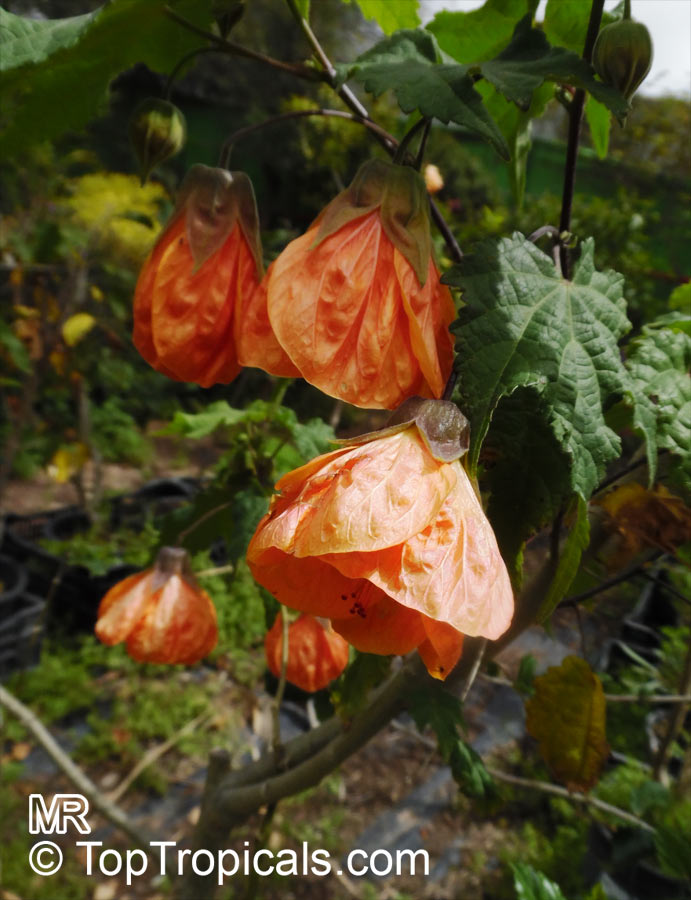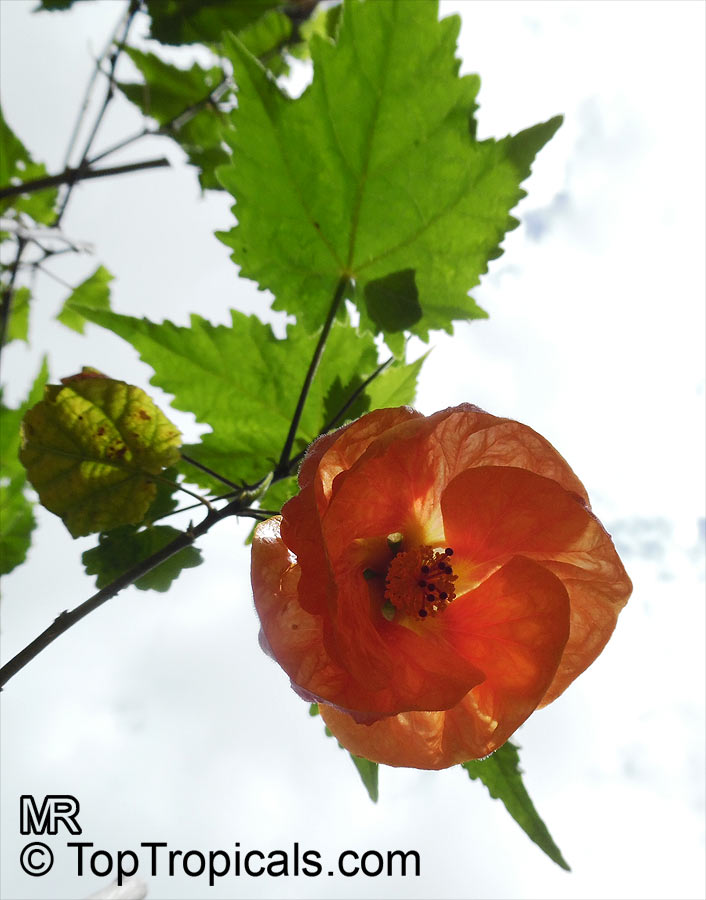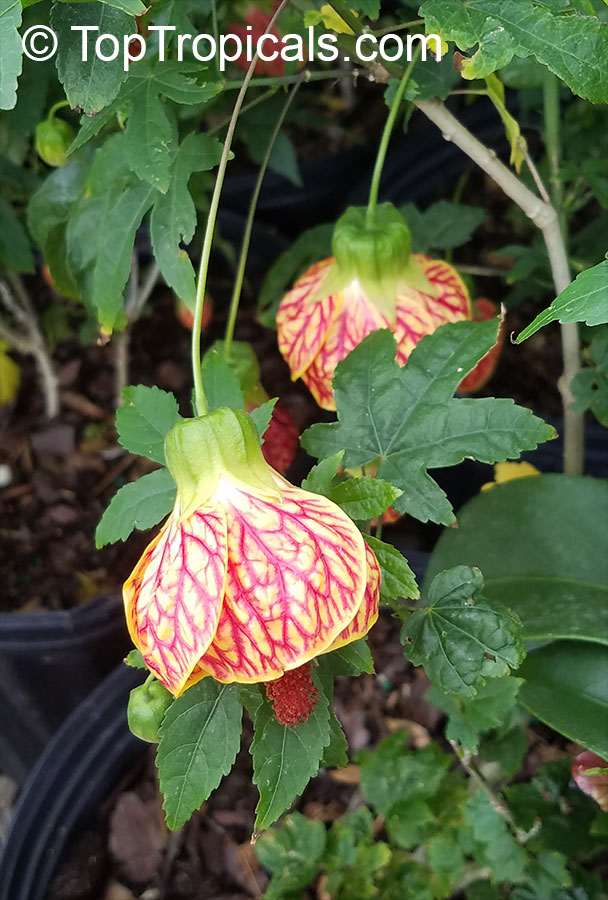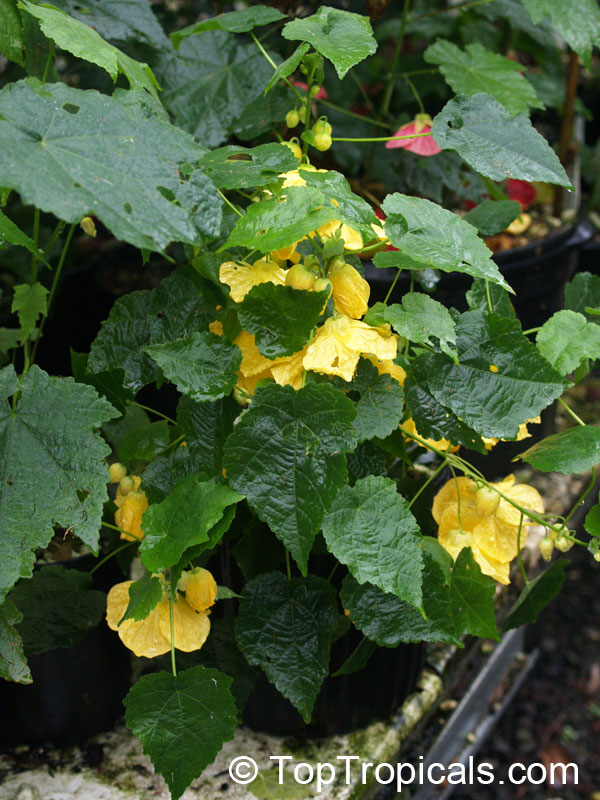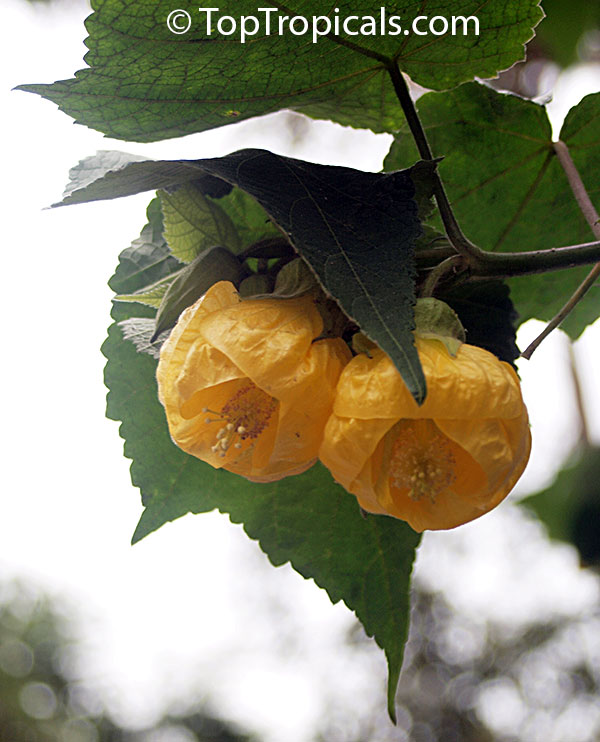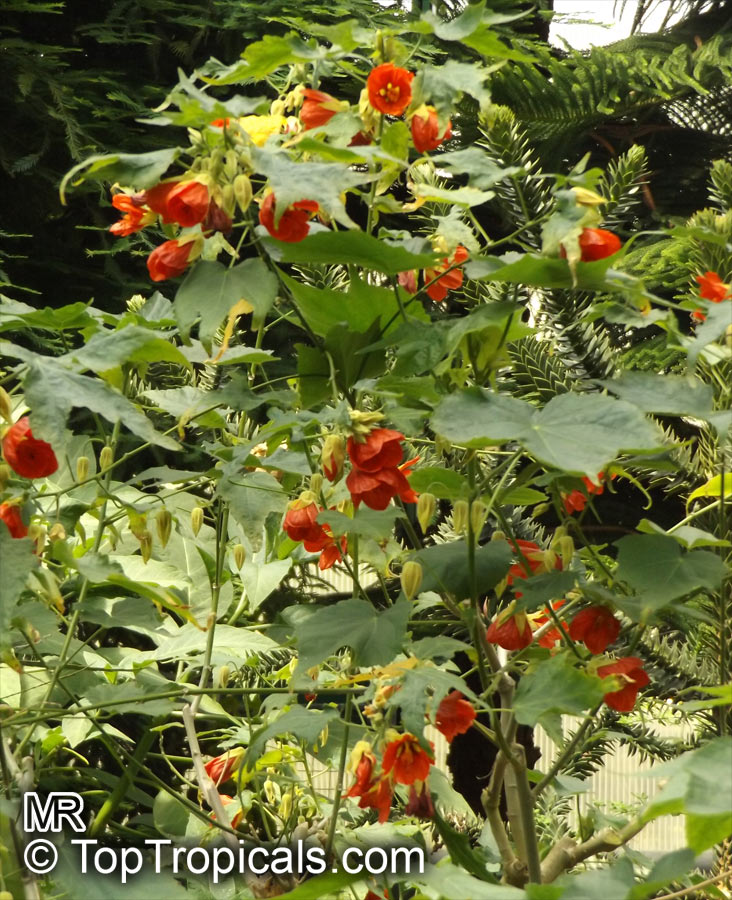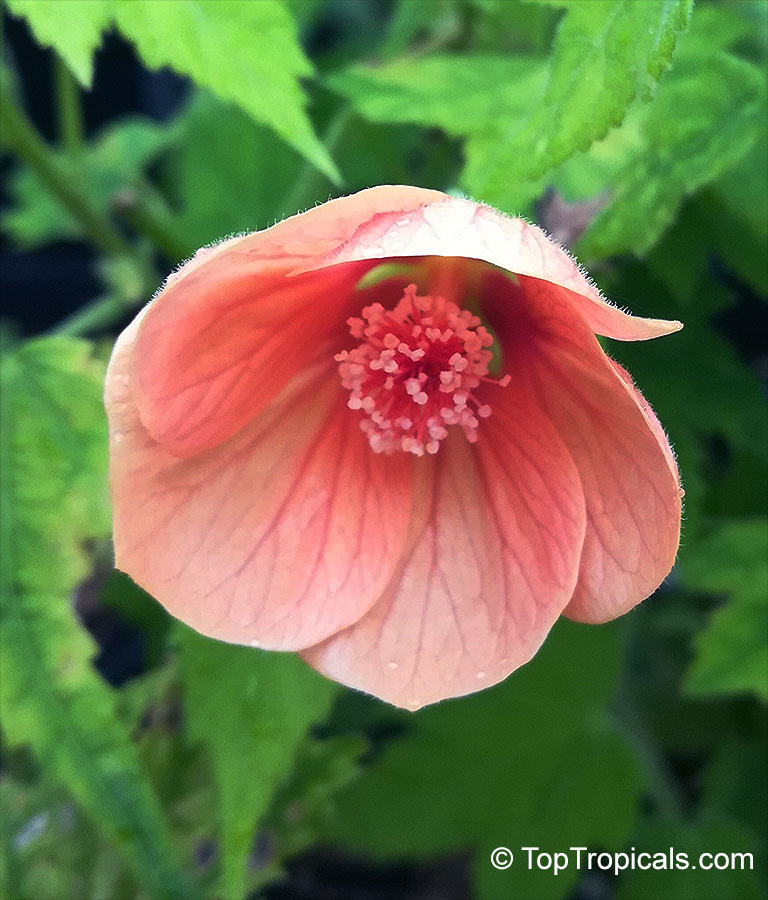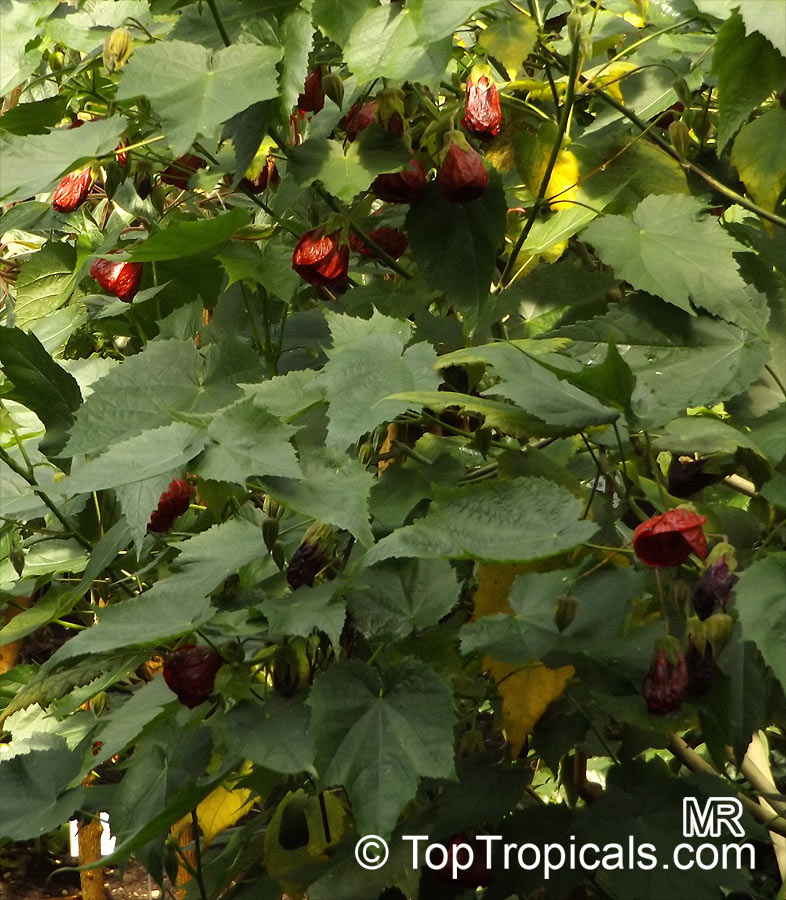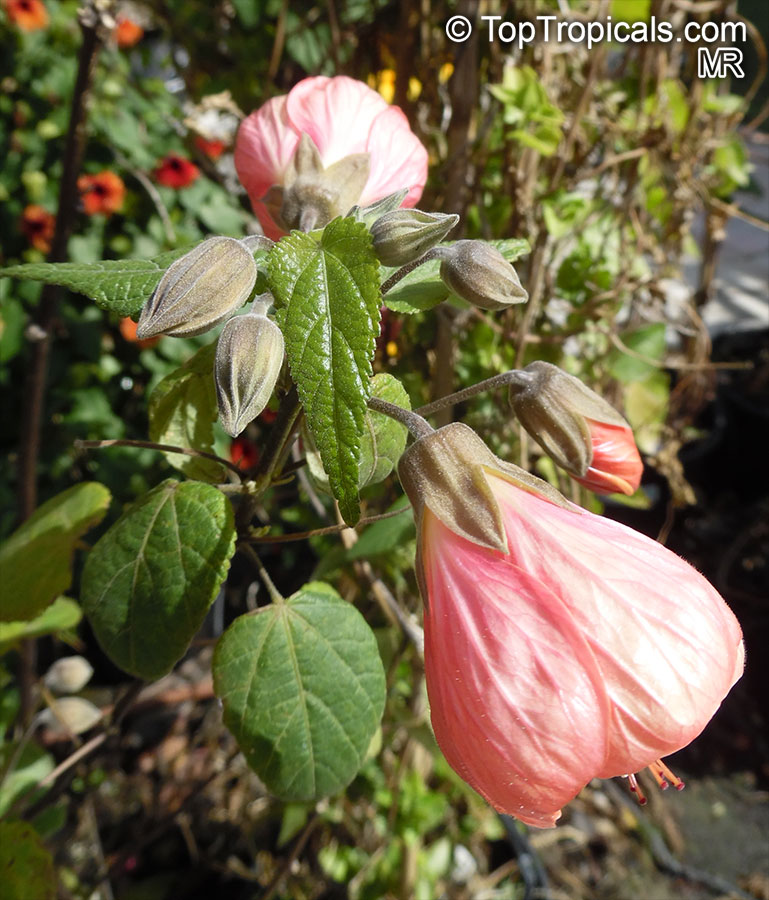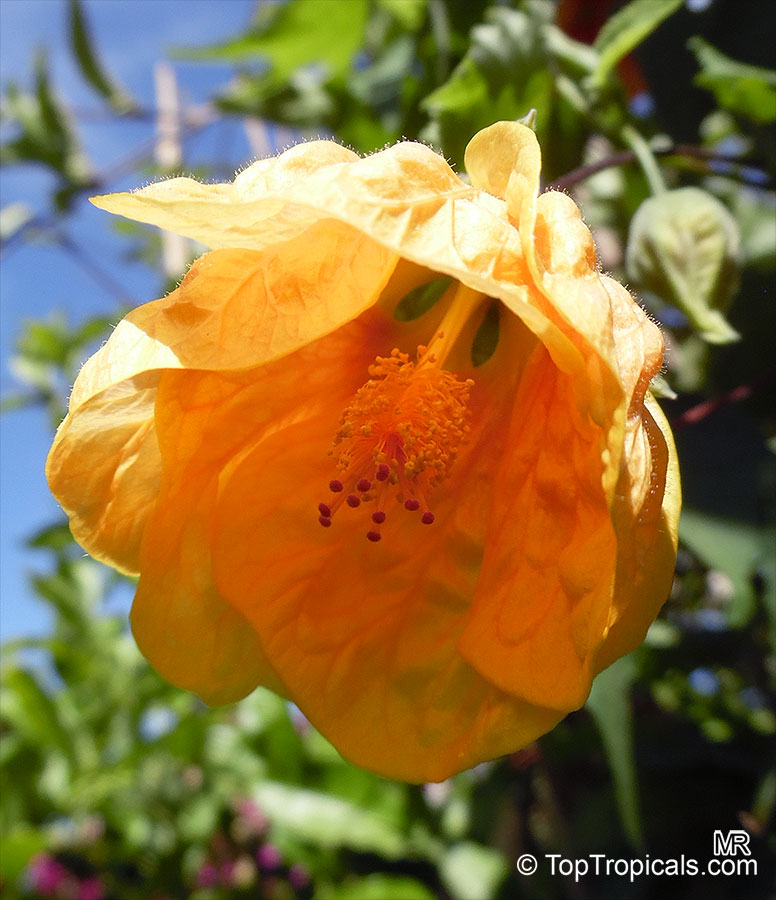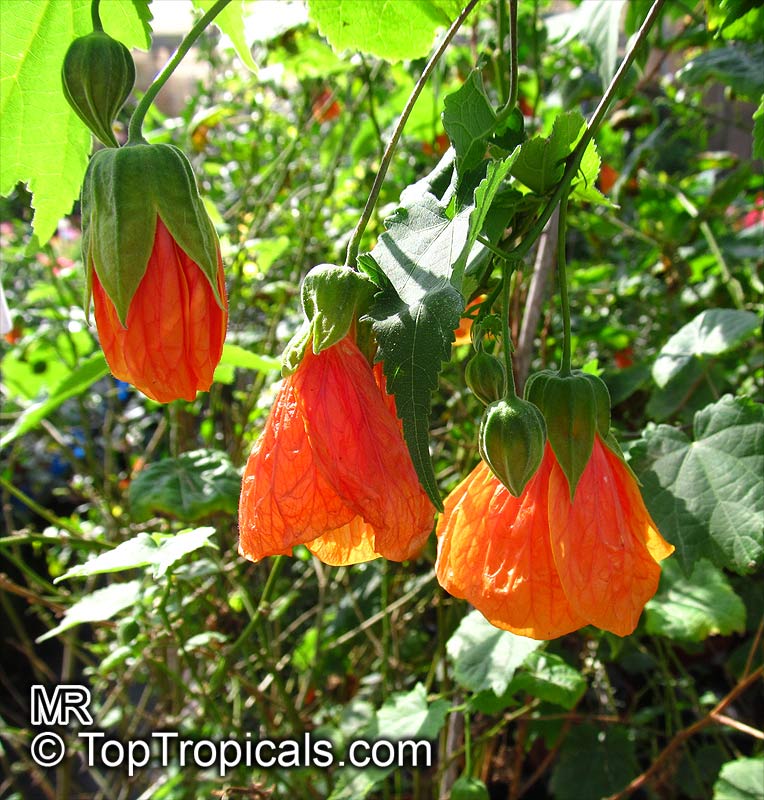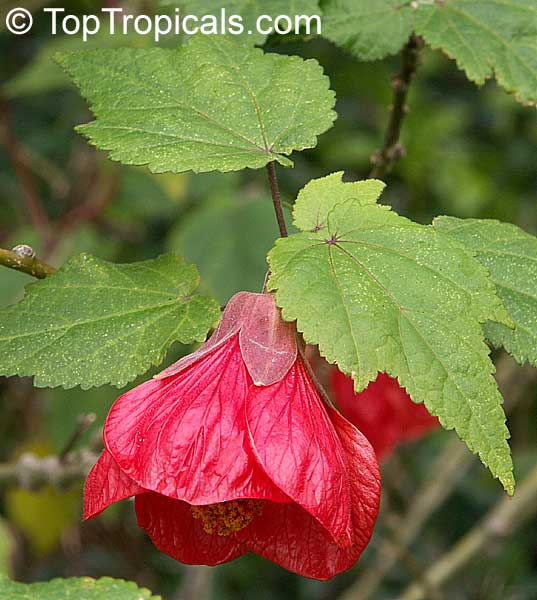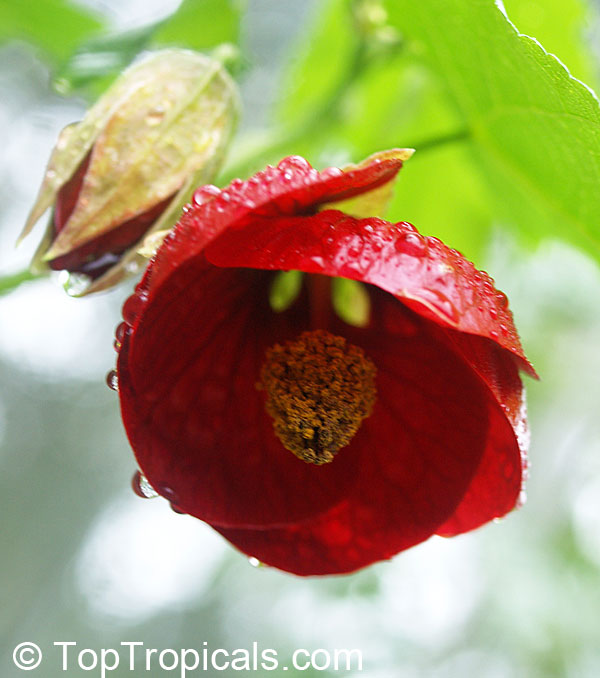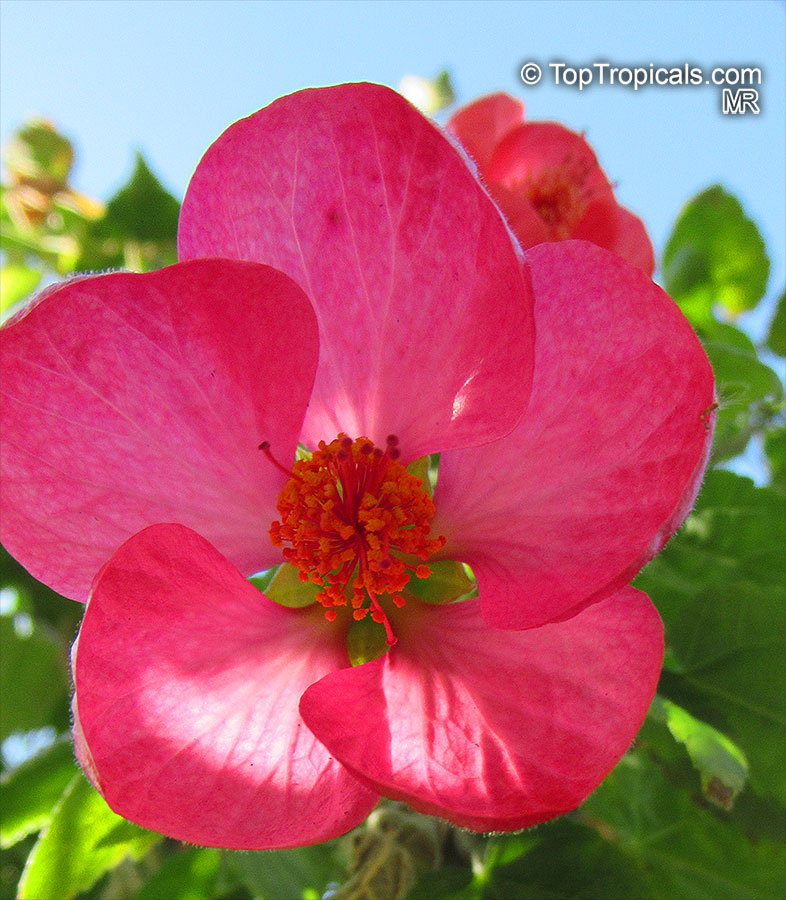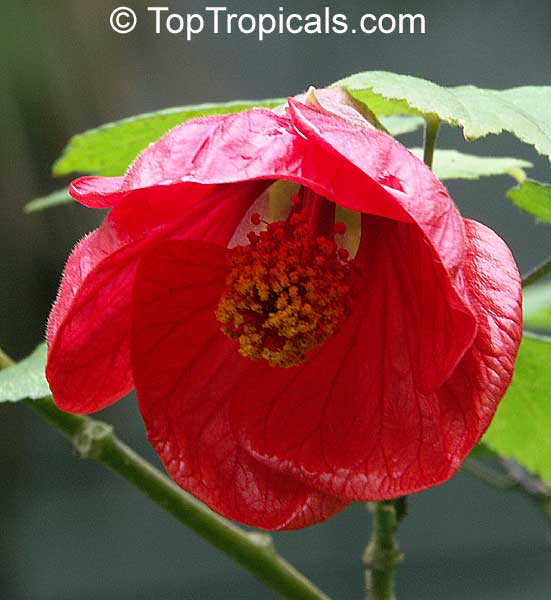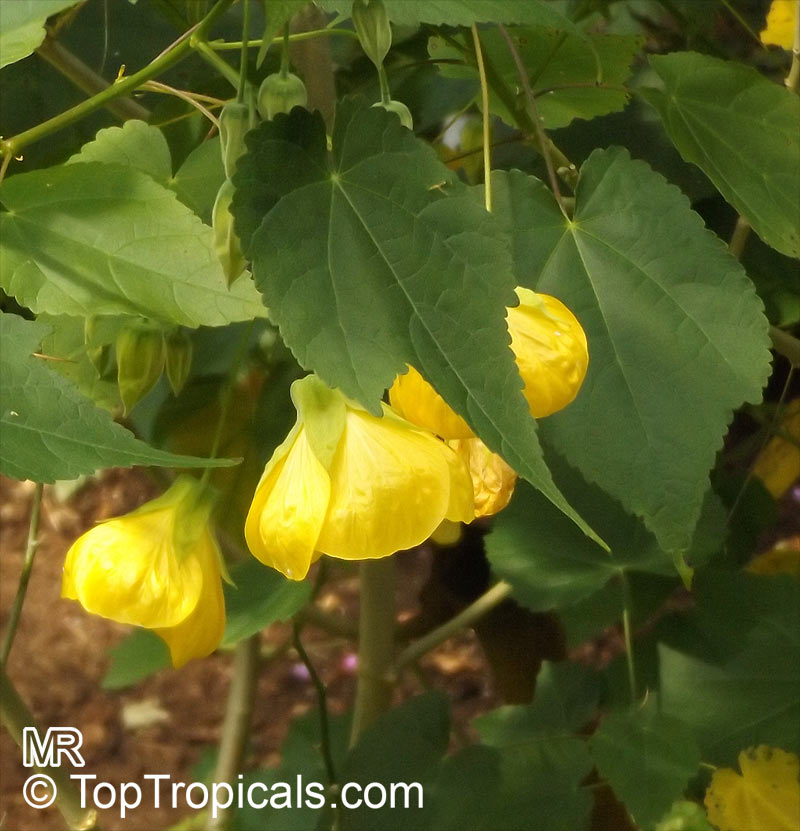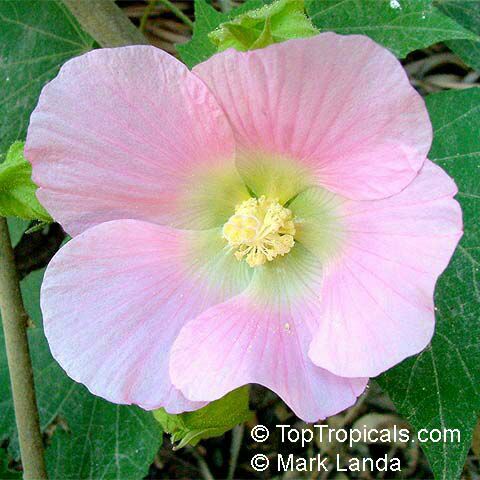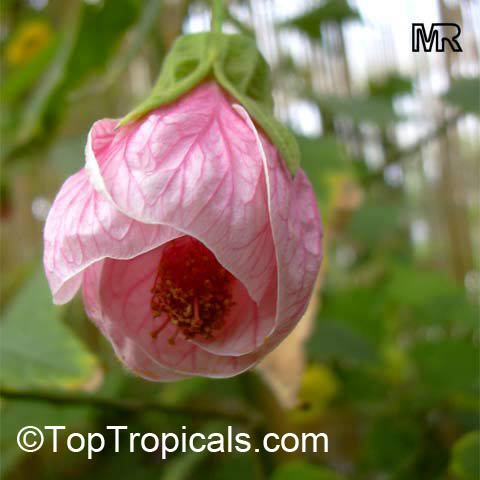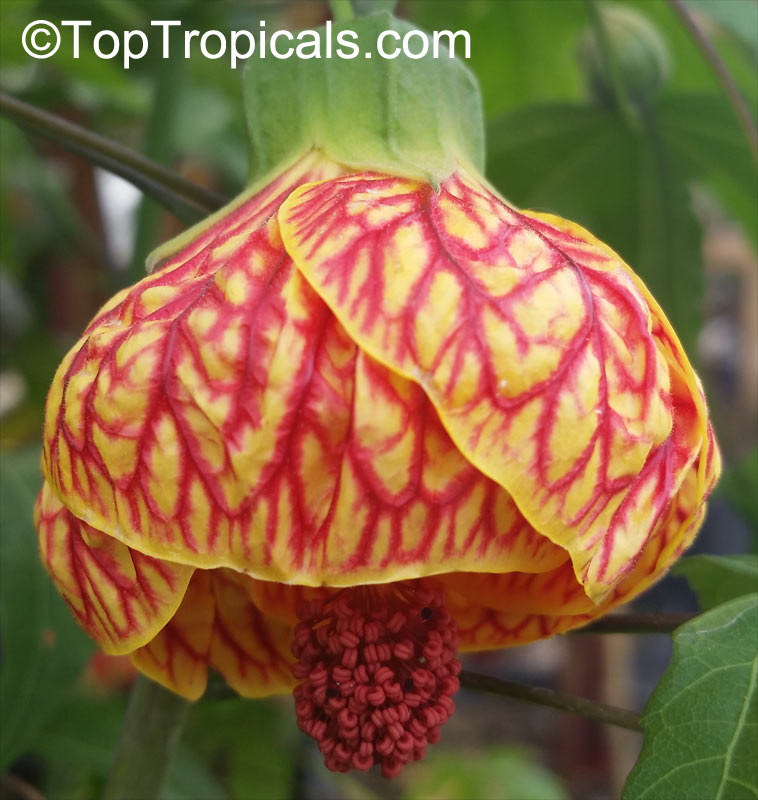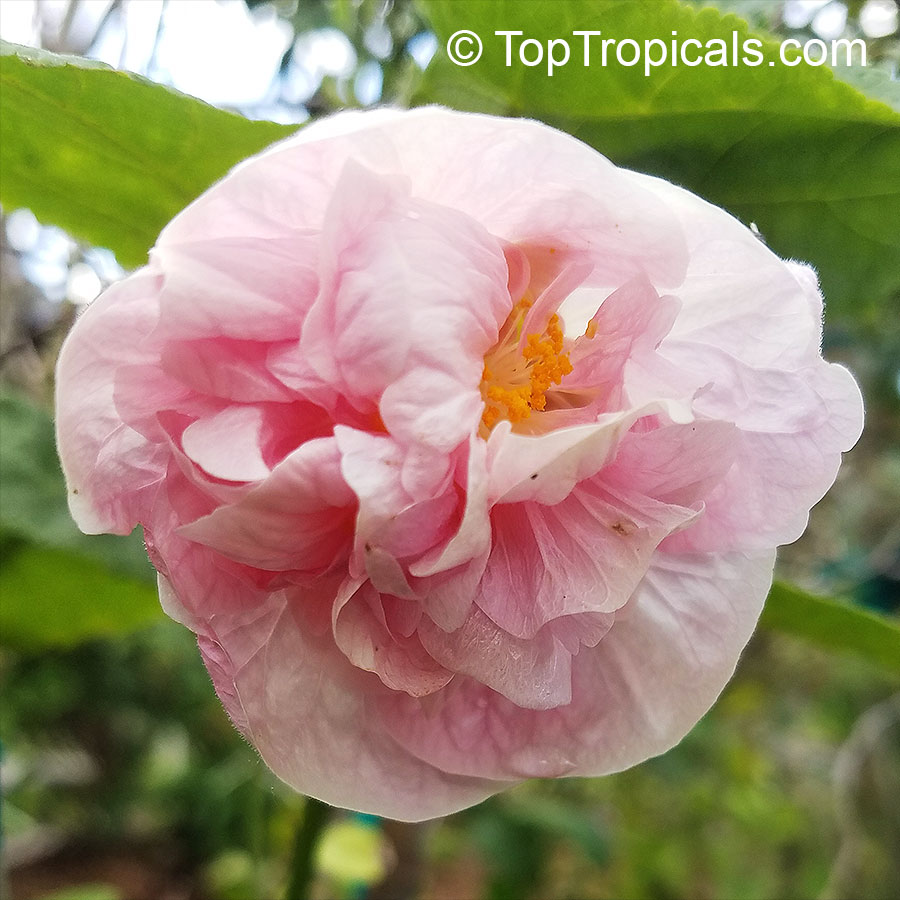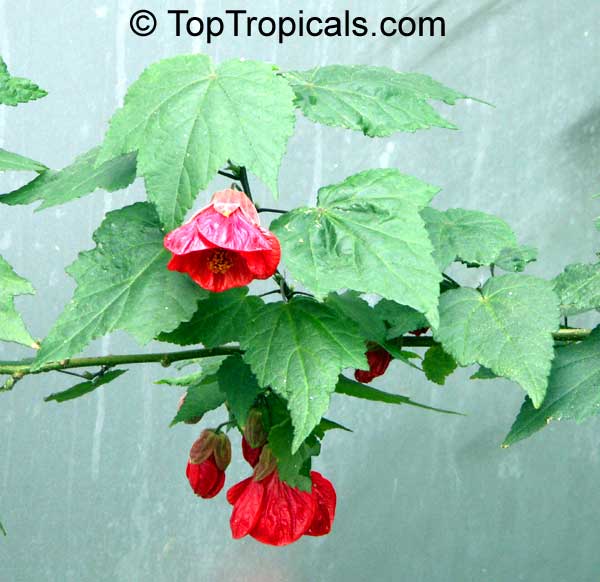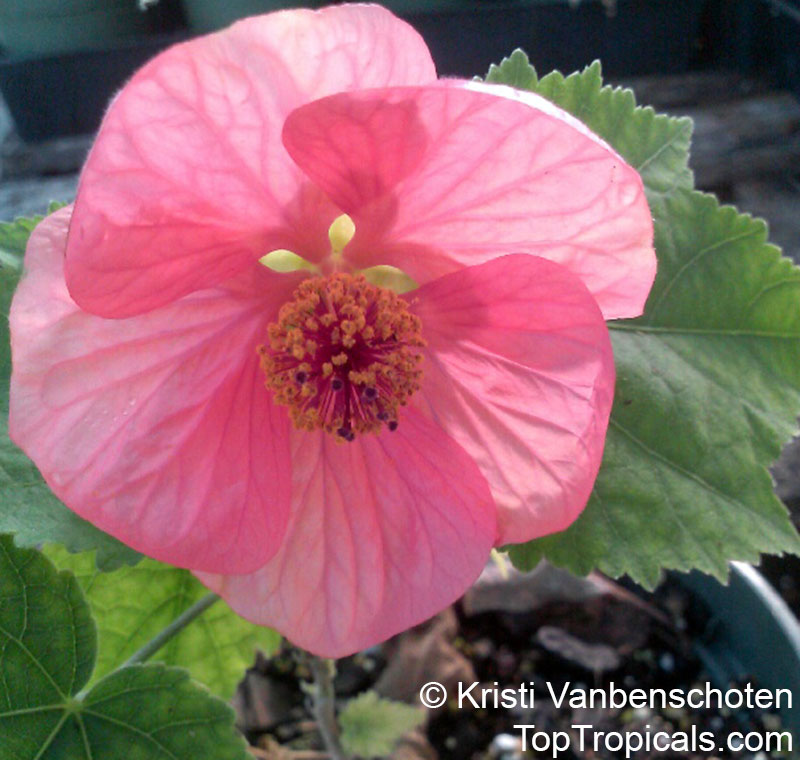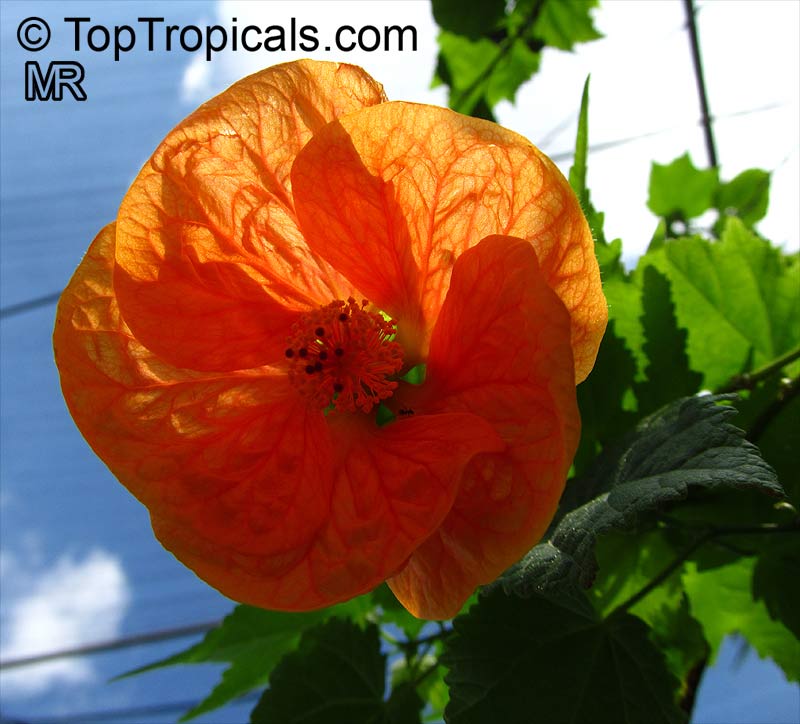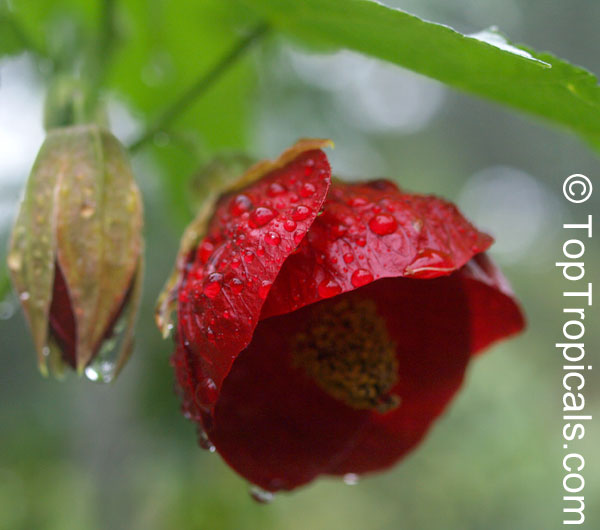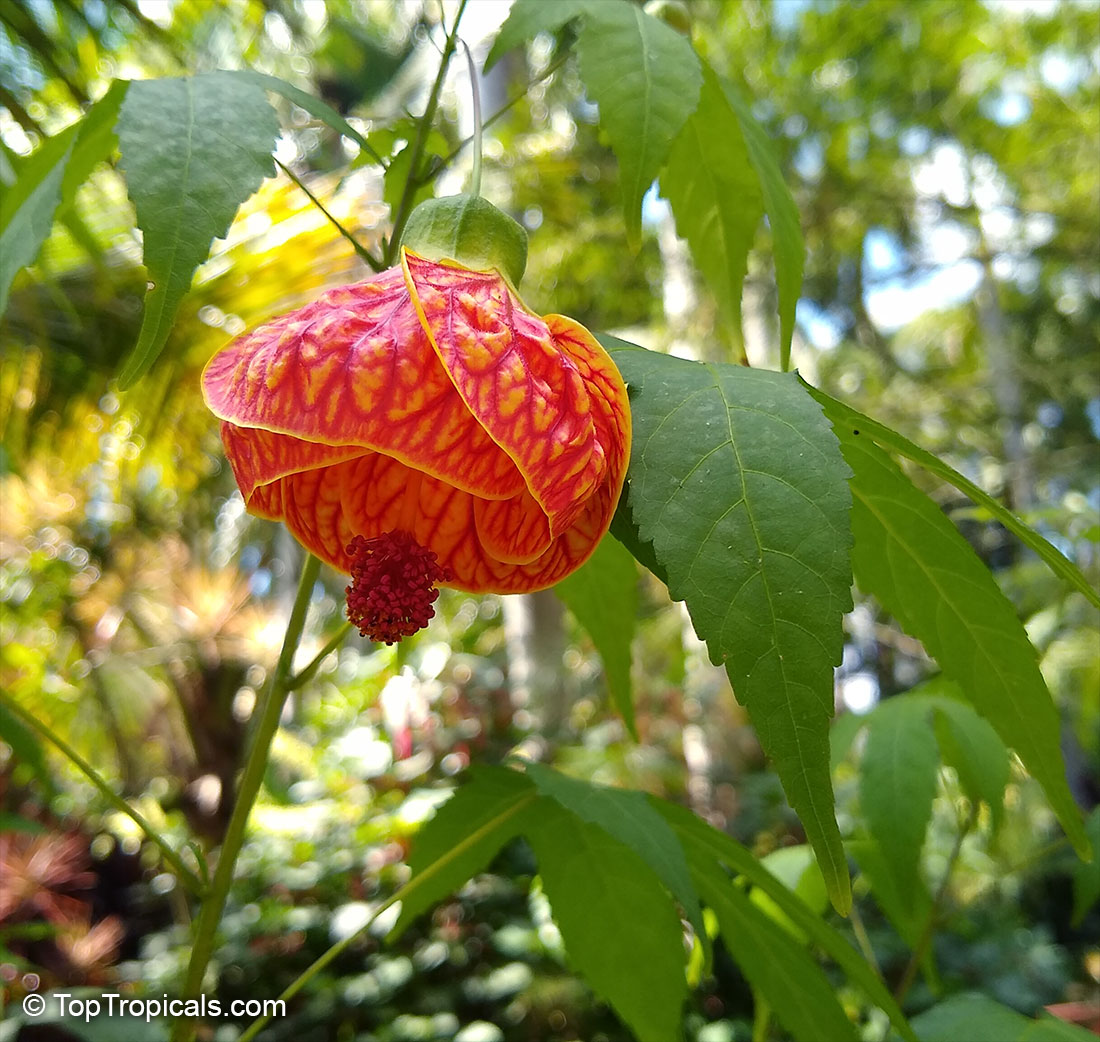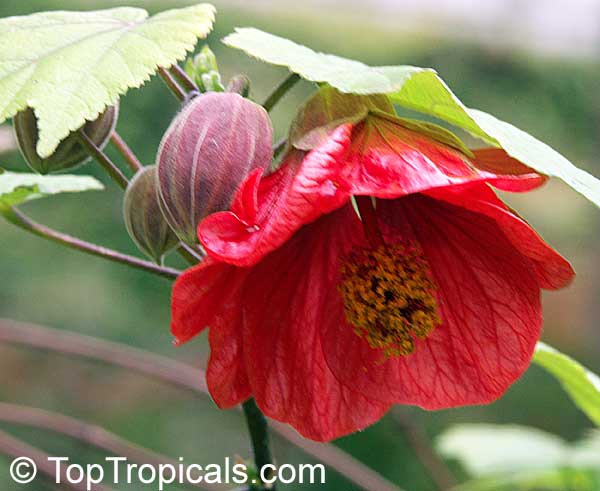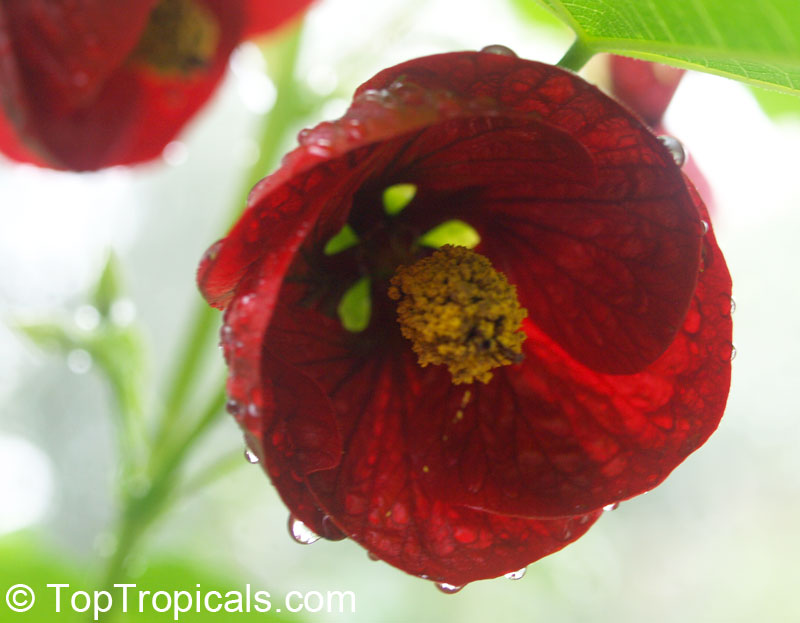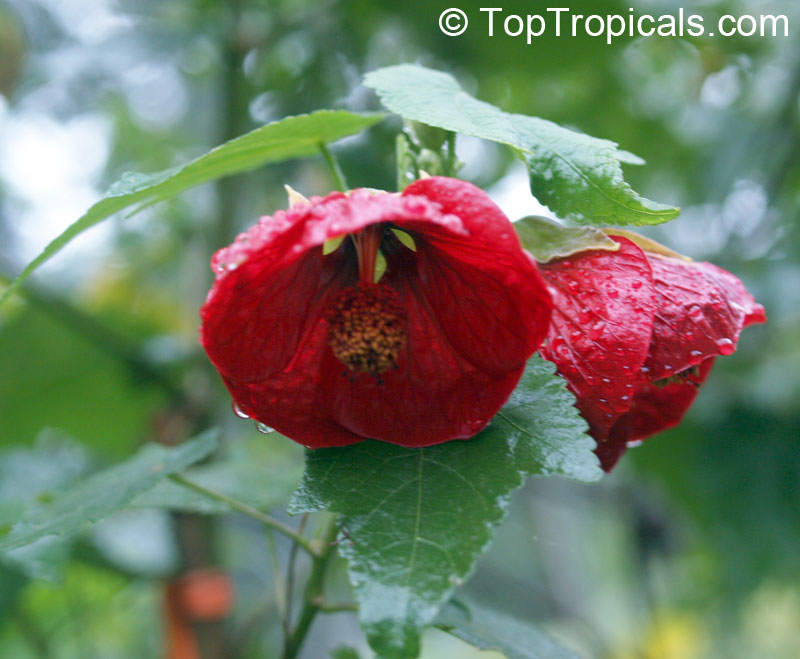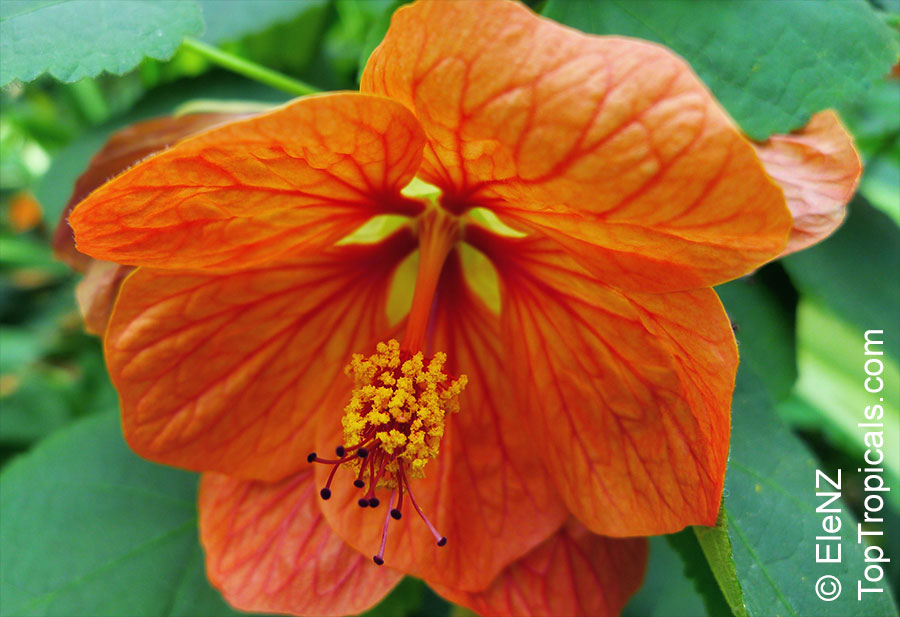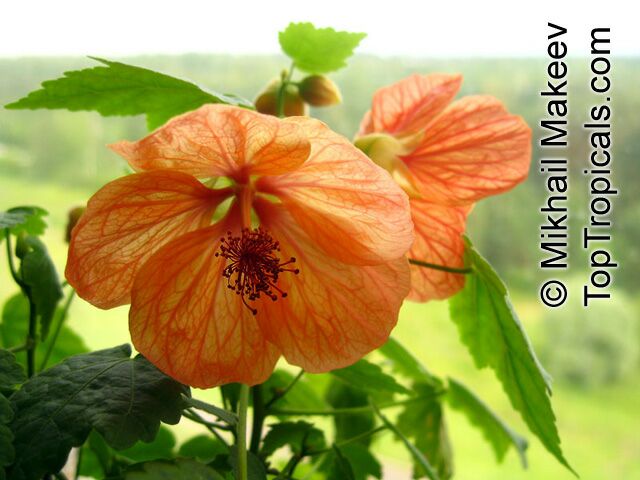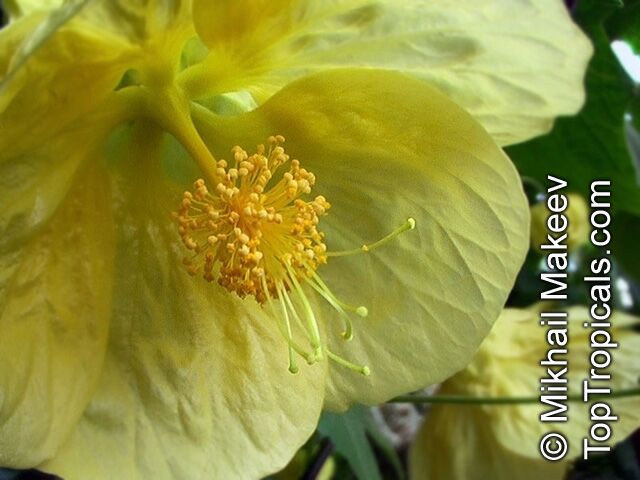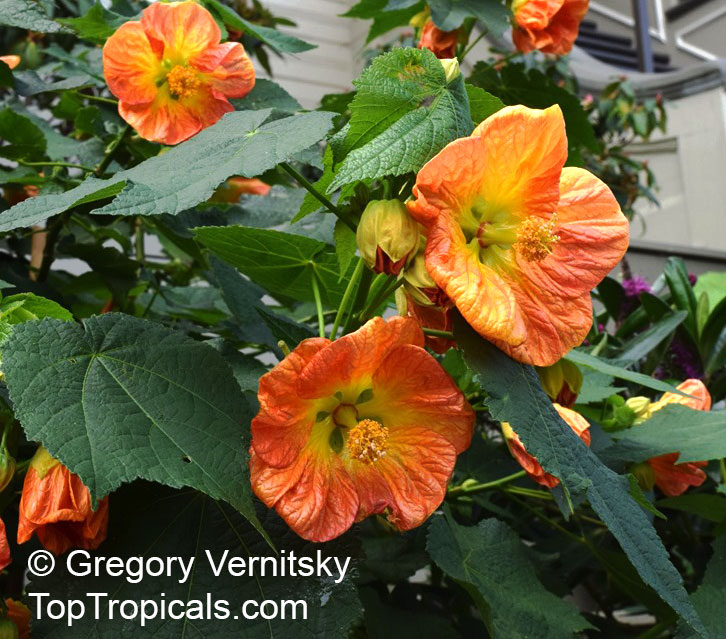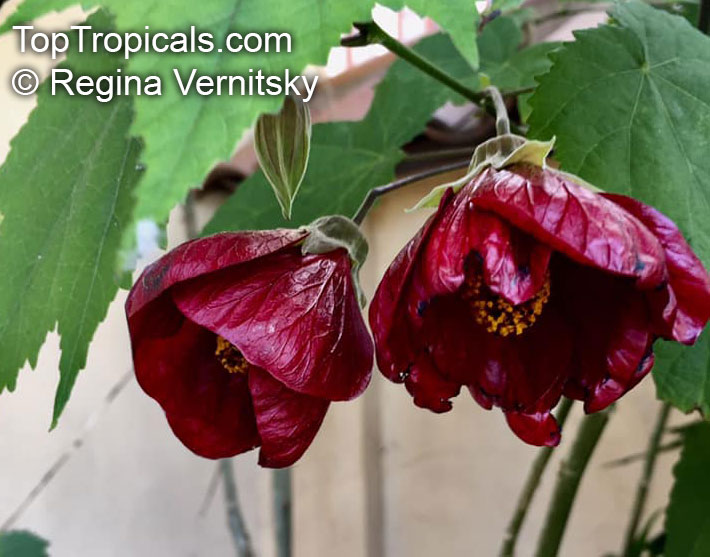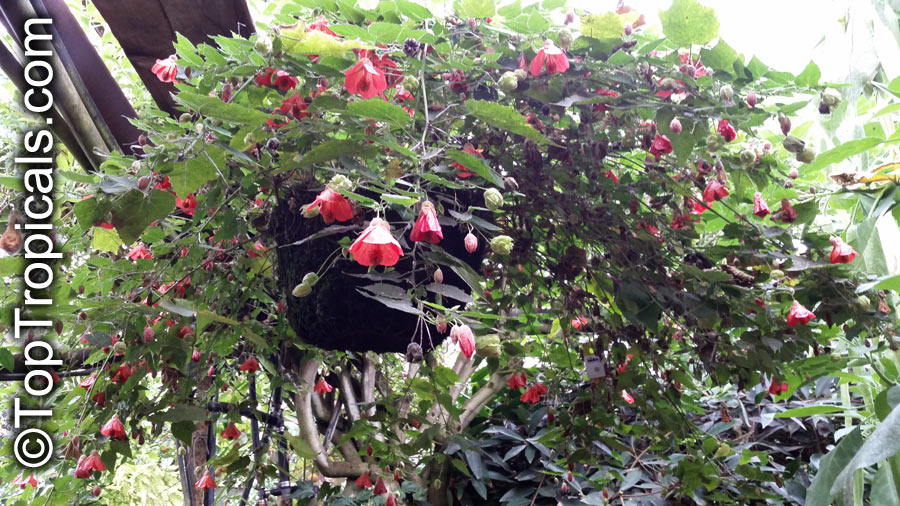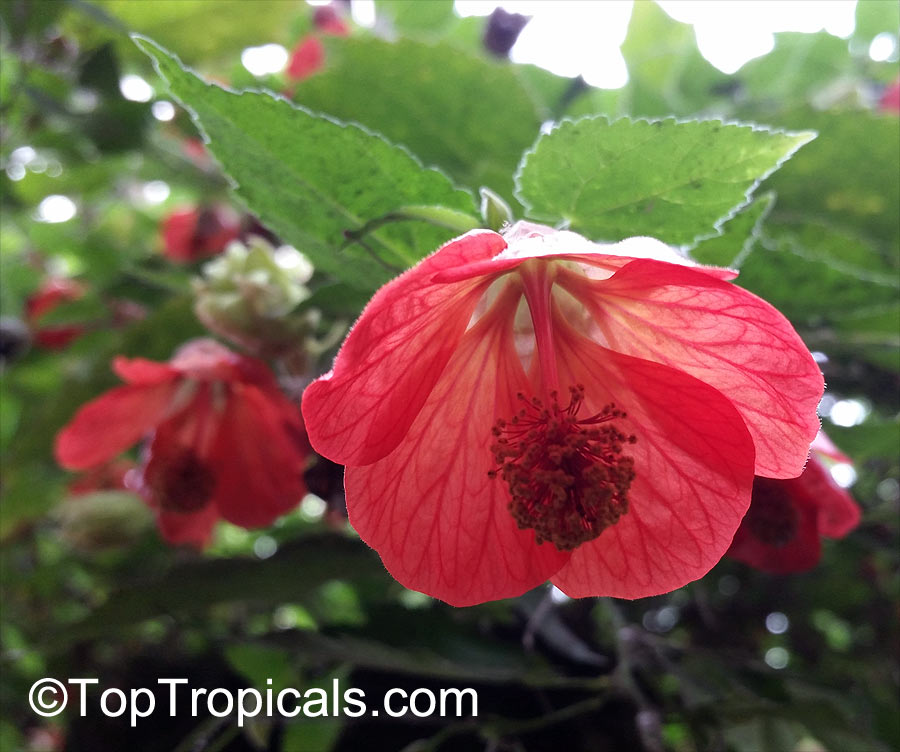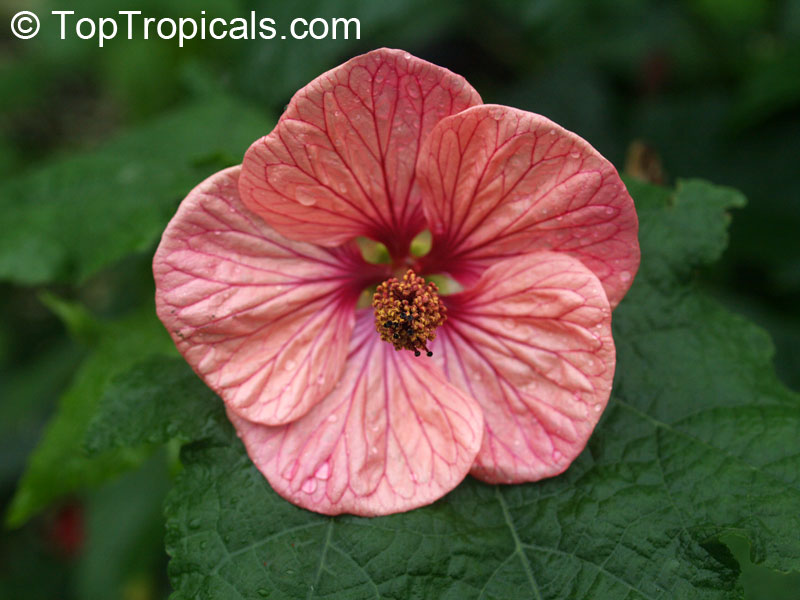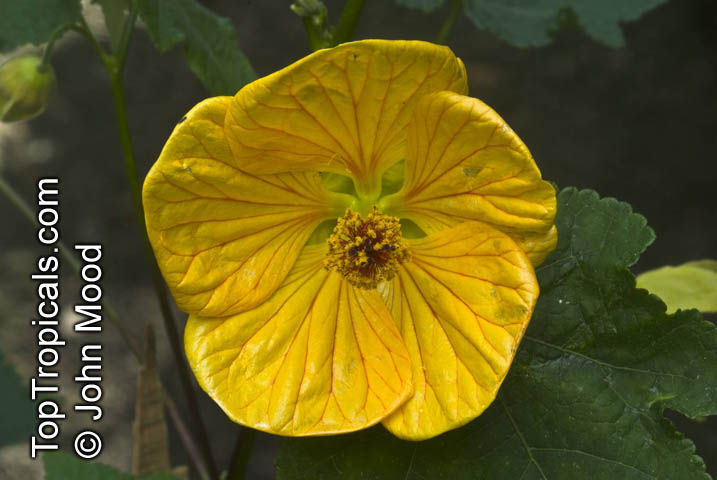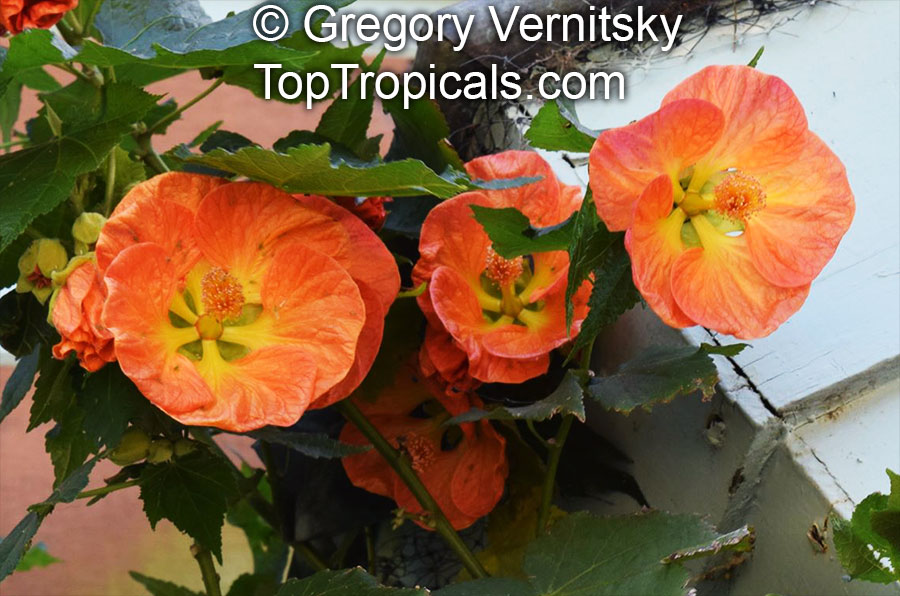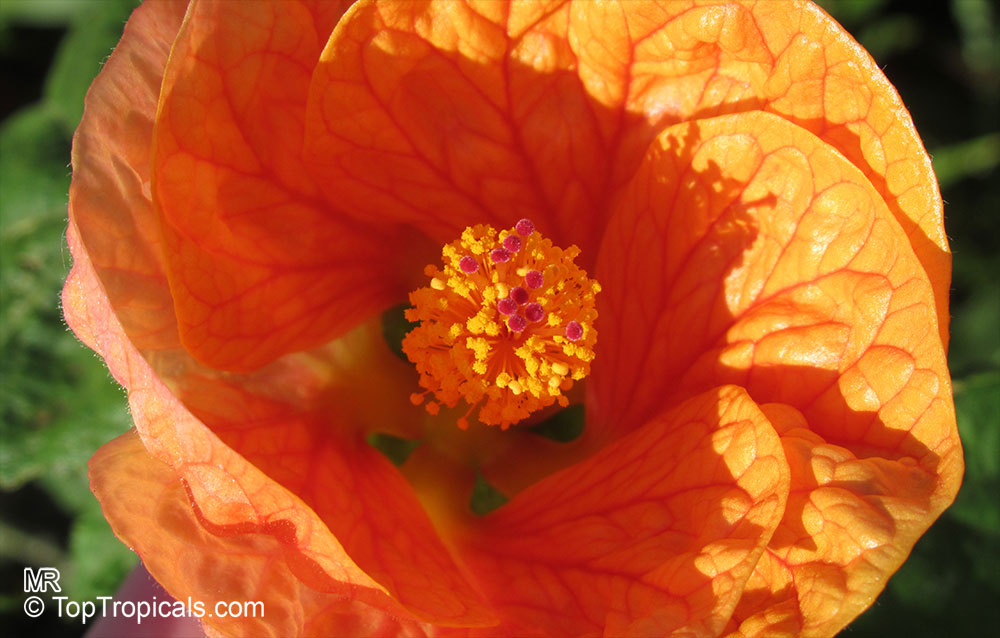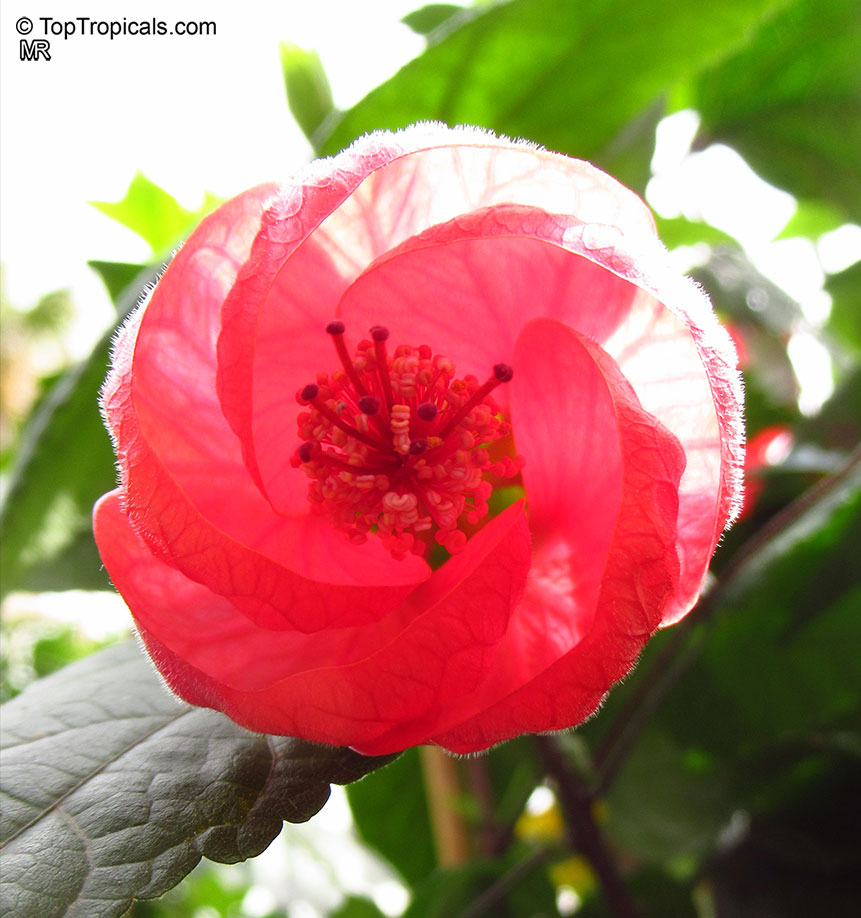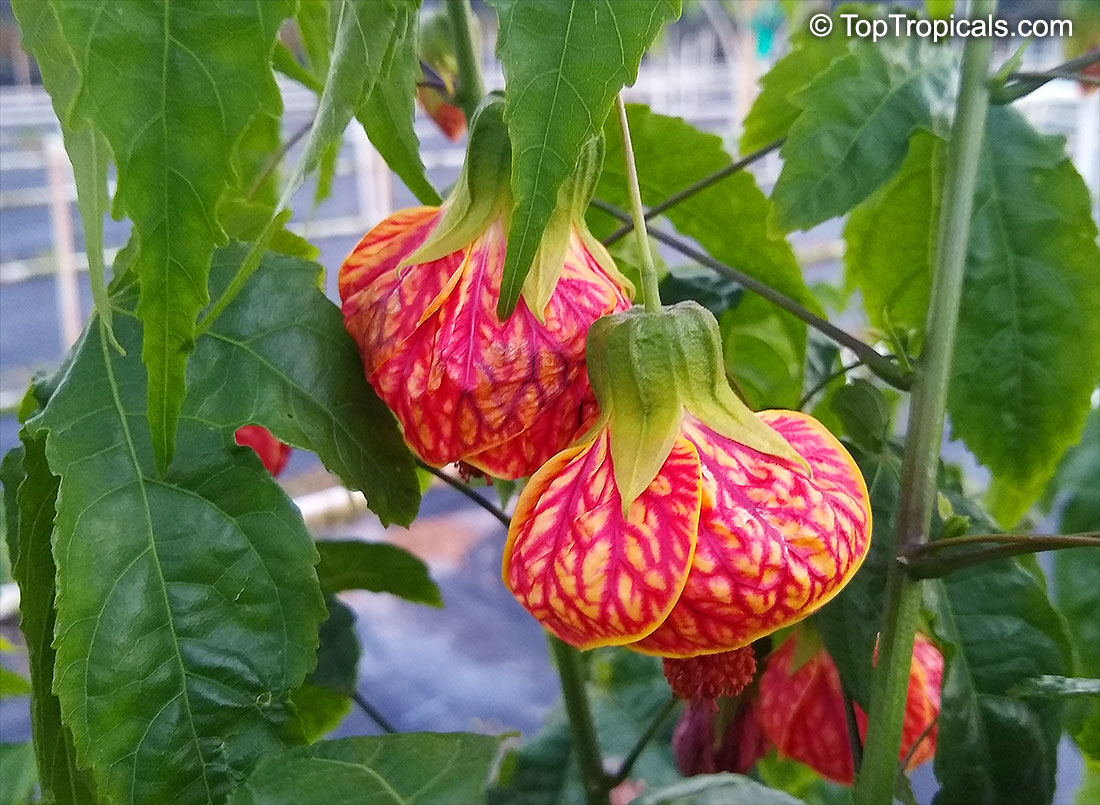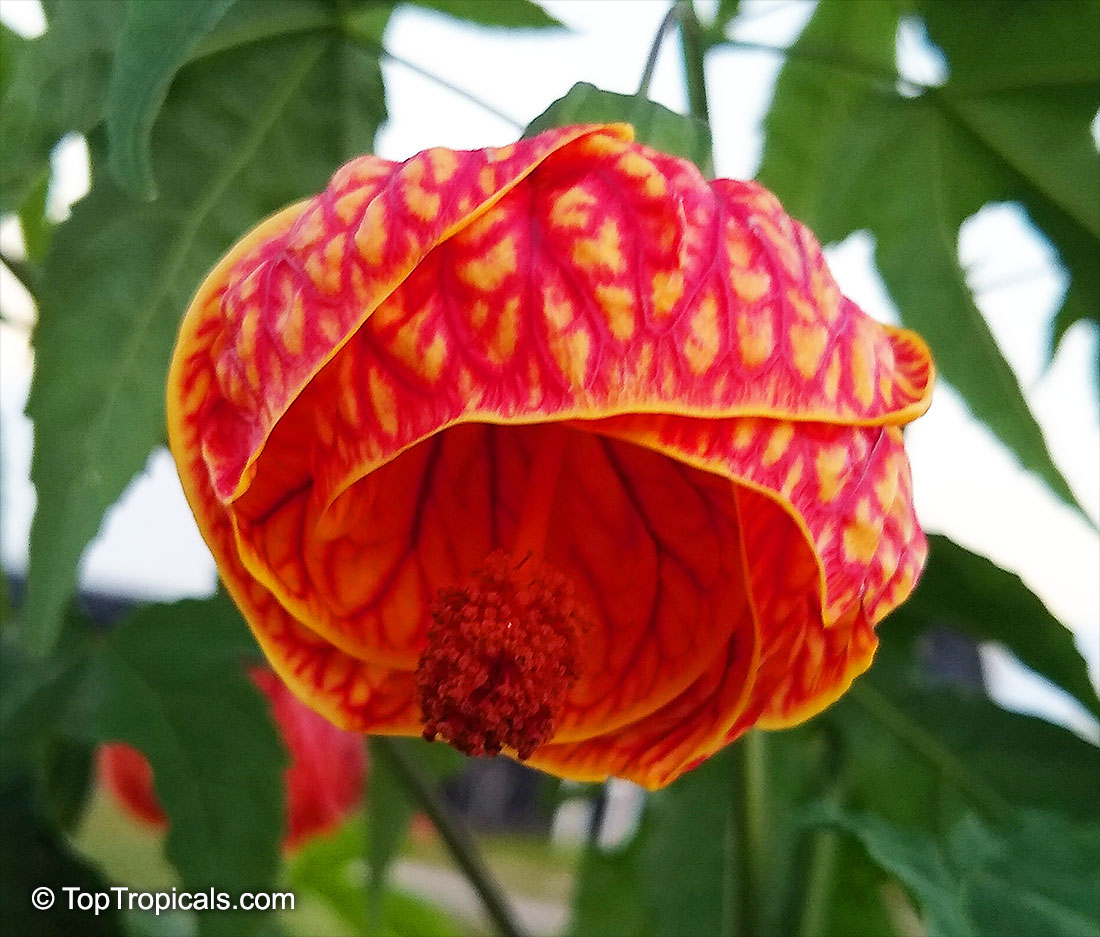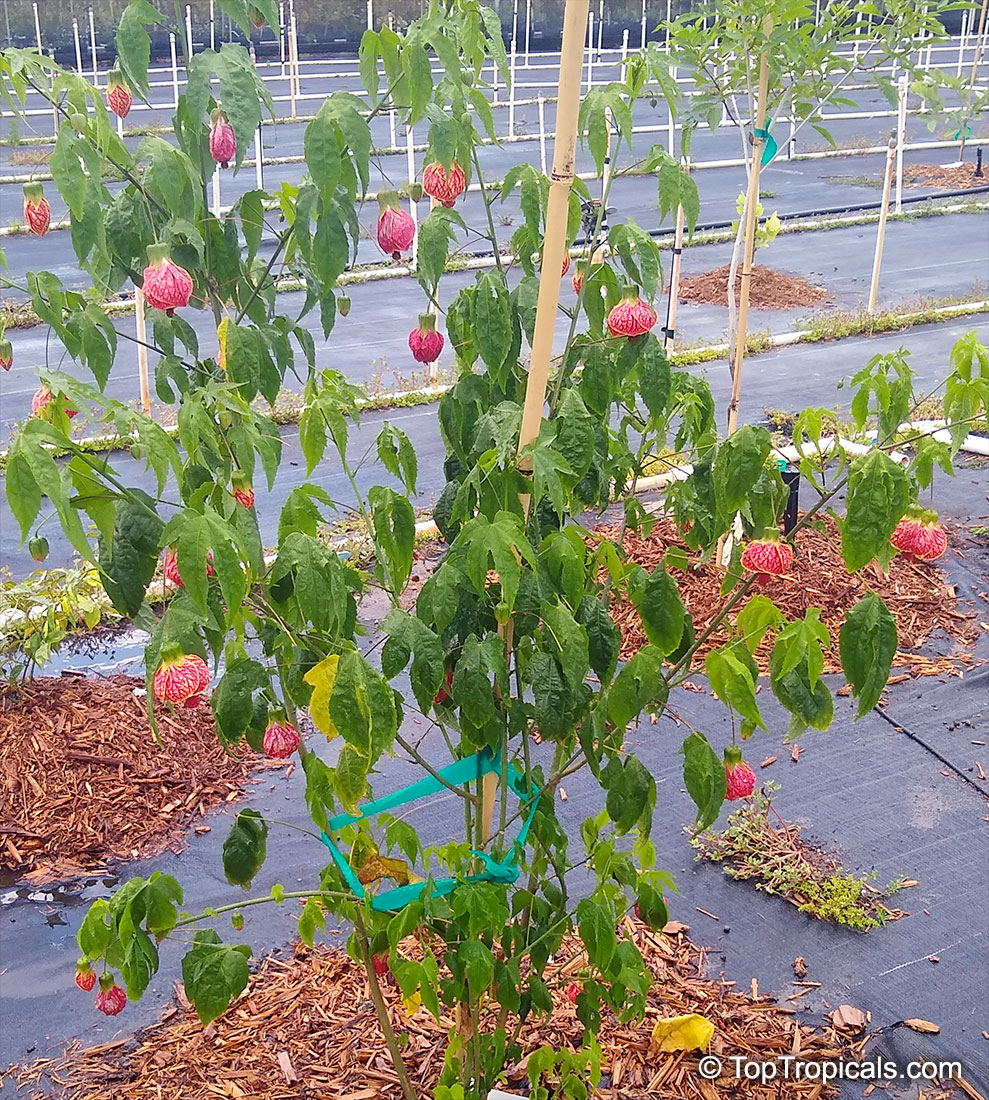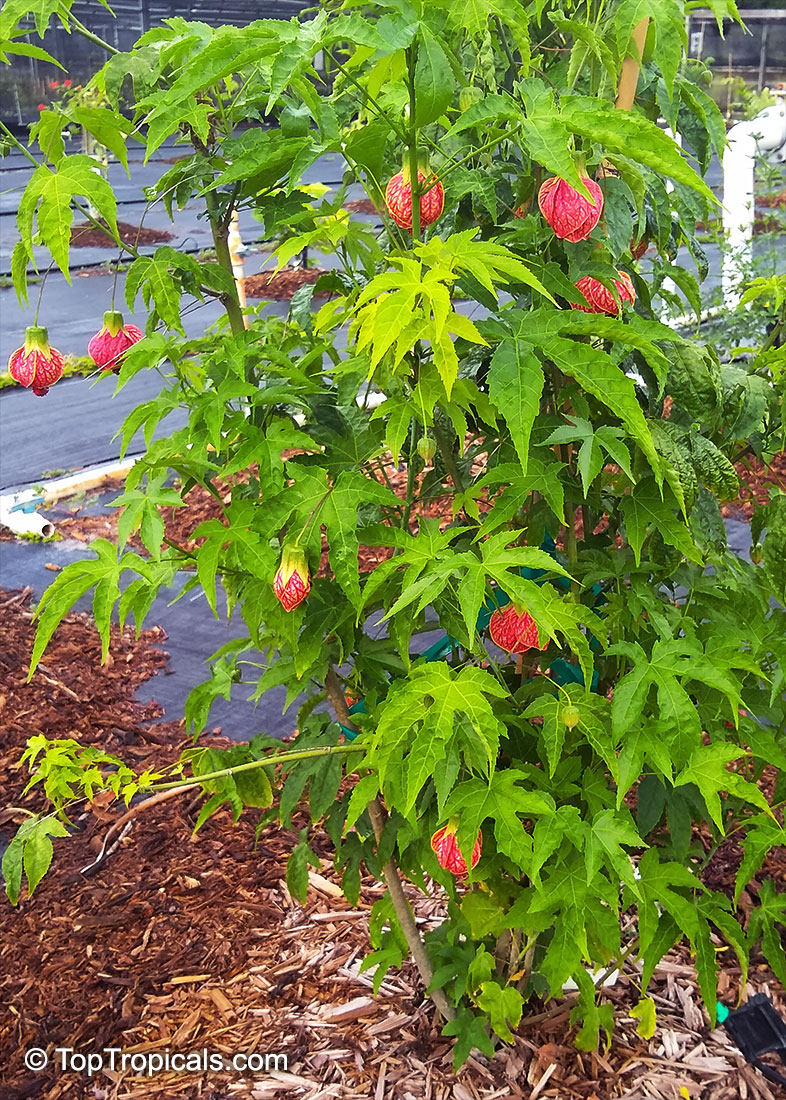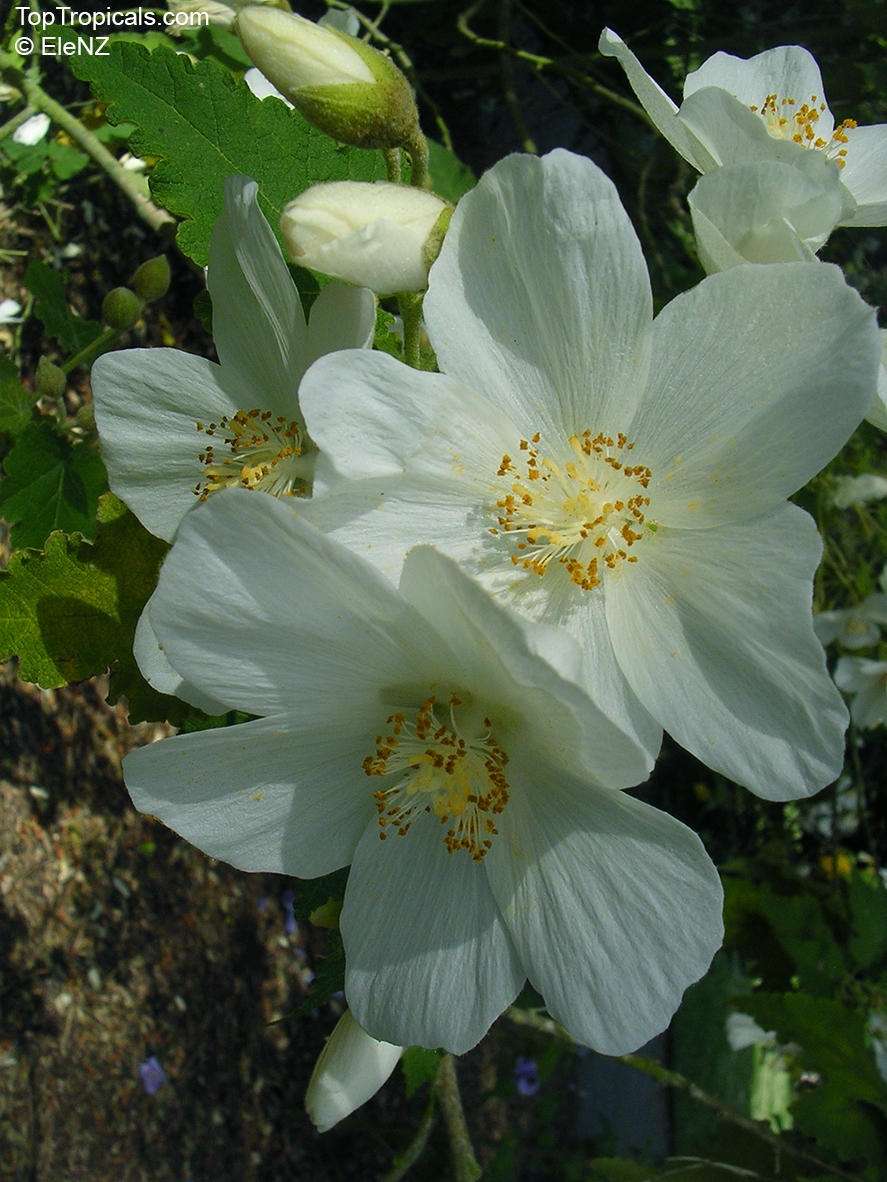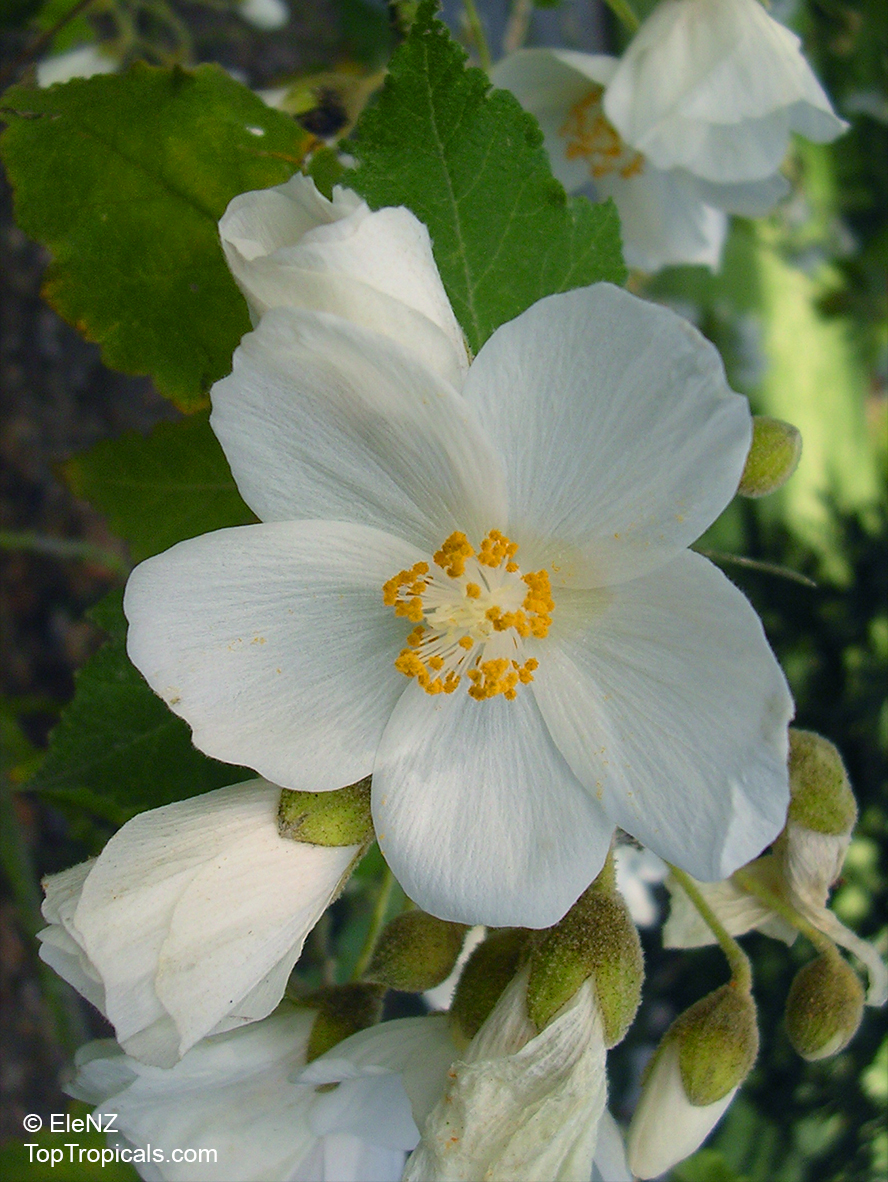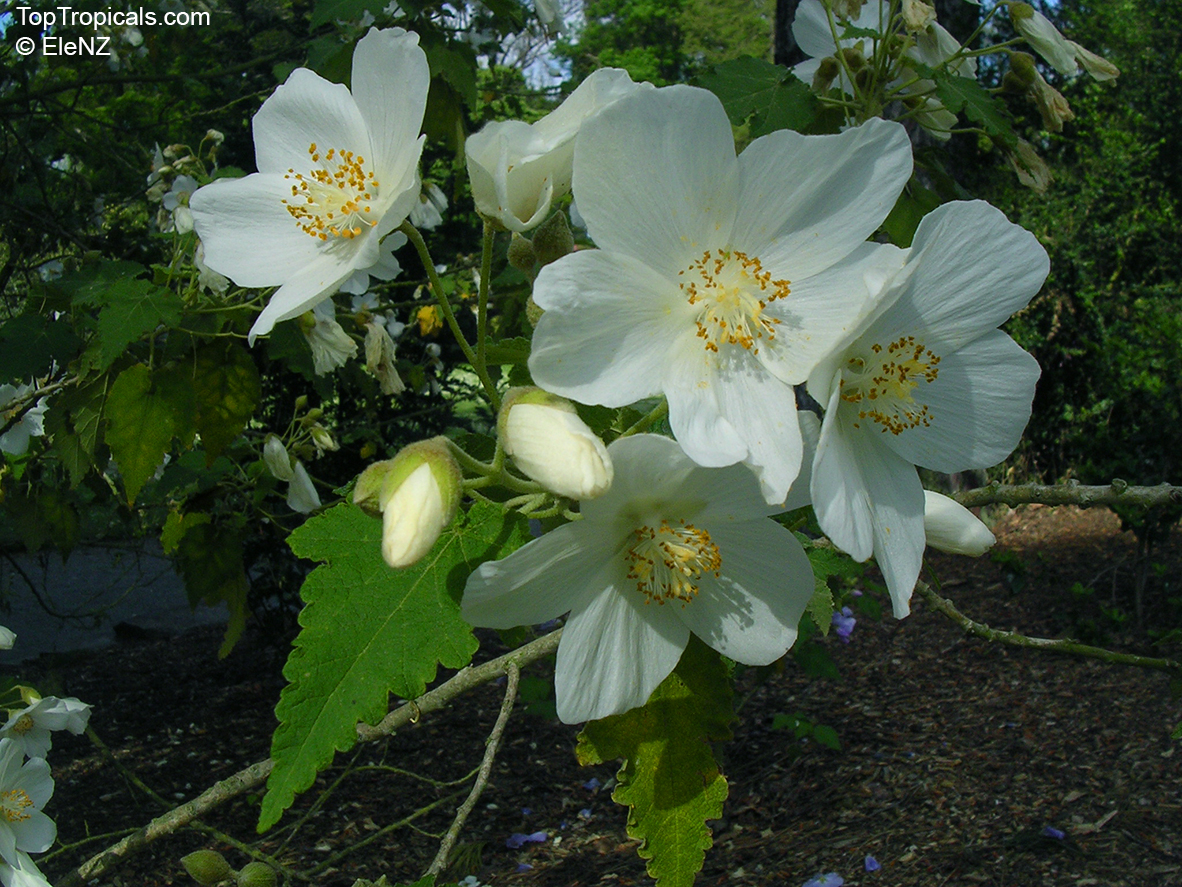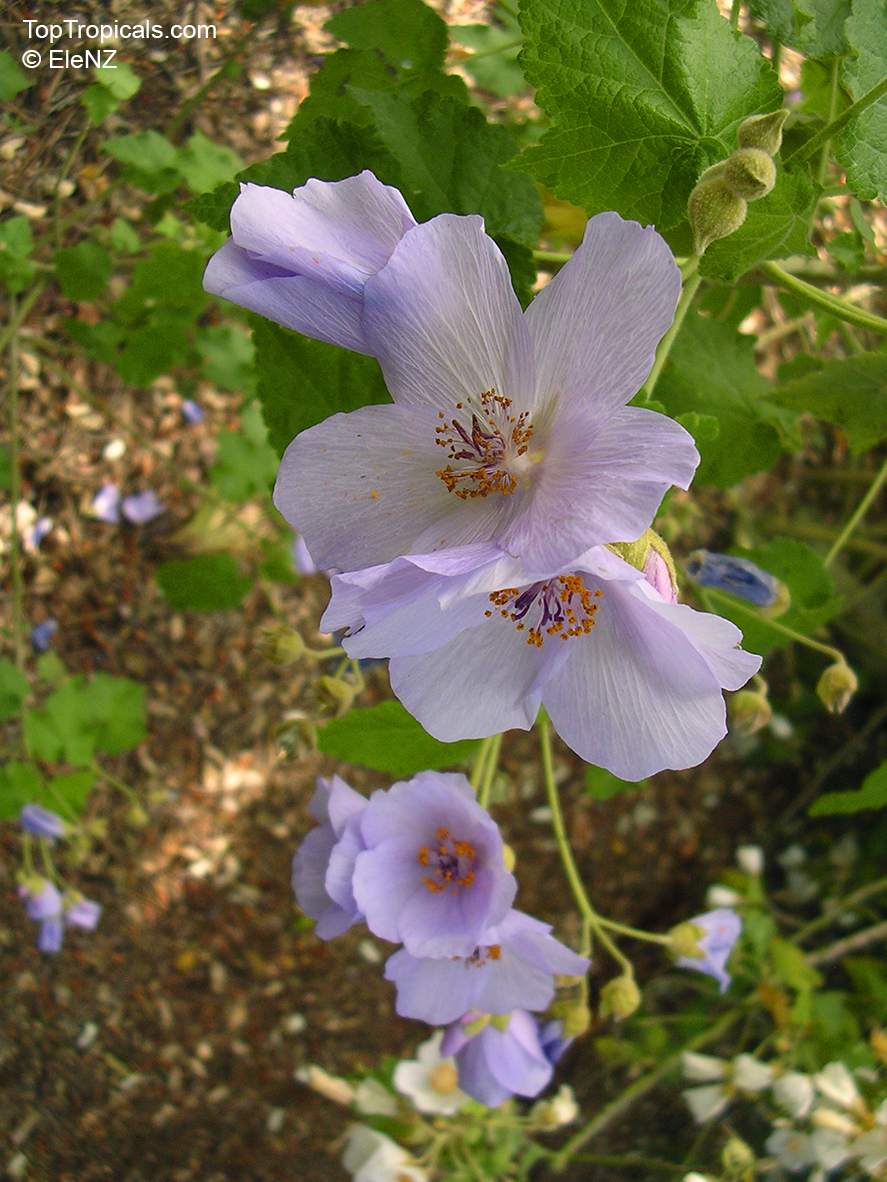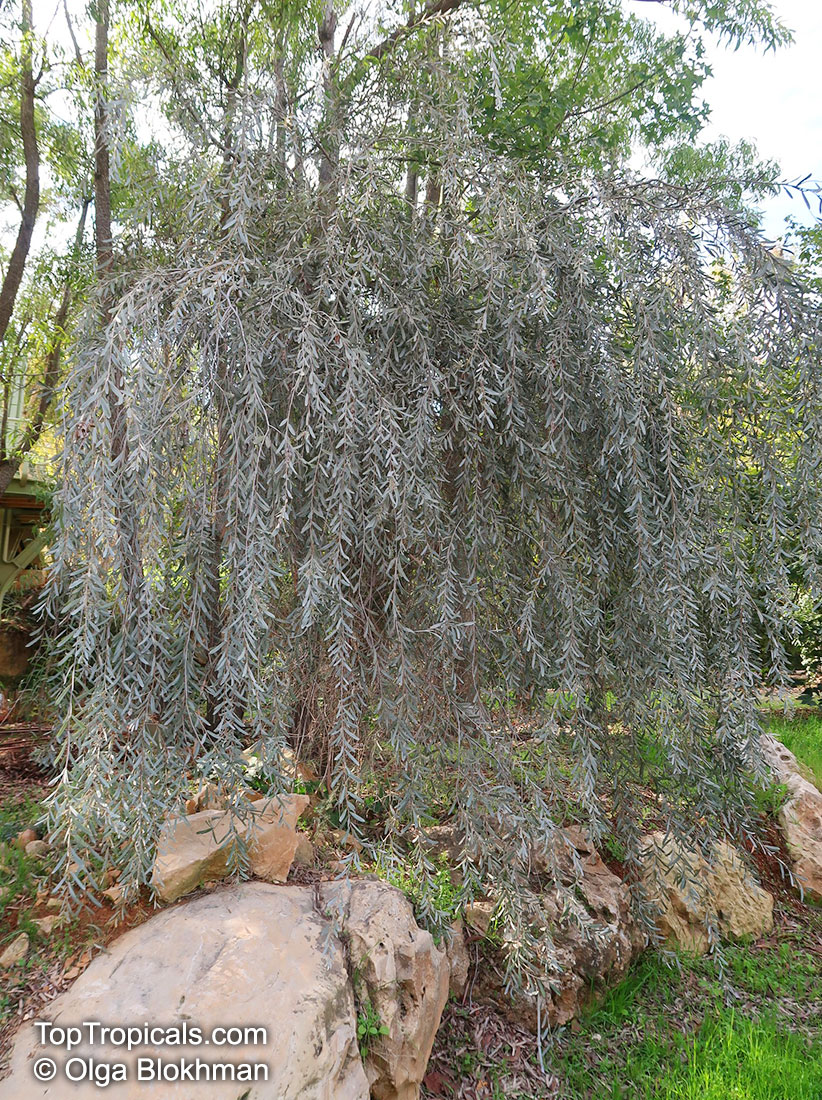Subtropical or temperate zone plant - Search results
Top Tropicals Plant Encyclopedia
| Number of plants found: 1082 | Next | 
|
Go to page: | 1 | 2 | 3 | 4 | 5 | Last |
Botanical name: Abelia grandiflora
Common name: Glossy Abelia
Family: Caprifoliaceae
Origin: China










Abelia is a popular evergreen or semi-evergreen shrub with a rounded, fountain-like growth habit. It is fast-growing, growing up to 4-8 feet tall and 4-6 feet wide. Its leaves are fine-textured, glossy, oval, and dark green, usually 2 inches long, and the new growth has a bronze color. Abelia produces small, white and pink tubular flowers in clusters at the end of its stems, from summer to fall. The flowers are barely one inch long, but they are slightly fragrant - which attracts hummingbirds and butterflies.
This shrub is a great choice for planting near a pool, as it loves both full sun and semi-shade exposure. When watering it, allow the soil to dry out between waterings. It is mostly pest- and disease-free. Mature Abelias can withstand temperatures as low as 30 degrees Fahrenheit for a limited time.
Hyperacanthus amoenus is another popular evergreen shrub. It has pinkish red flowers with off-white petals that are fragrant, followed by green fruits that turn brown when ripe. This shrub is easy to grow, needing only full sun and regular watering - though it should be in USDA Zones 8 -9 for full protection from cold weather. For areas with colder climates, it is recommended to keep the plant in a pot and move it indoors in winter. In such a case, extra care should be taken to make sure it has enough water, light and fertilizer. Pruning may also be necessary to ensure the plant remains within the size desired.
Botanical name: Abelia sp.
Common name: Abelia
Family: Caprifoliaceae









The flowers appear in the upper leaf axils and stem ends, 1-8 together in a short cyme; they are pendulous, white to pink, bell-shaped with a five-lobed corolla.
The species from warm climates are evergreen, and colder climate species deciduous.
Botanical name: Abelmoschus manihot
Common names: South Sea Salad Tree, Bele tree, Sunset Muskmallow, Sunset Hibiscus, Hibiscus Manihot
Family: Malvaceae
Origin: Southeast Asia
Hardiness: 20°F









Its palmate leaves are highly dissected with five to nine deep lobes. The largest, widest leaves form at the base of the plant, where there may be some small side branches. The blooms (4-5" in diameter) are pale yellow with a dark maroon to purple center eye, and emerge from the terminal end of a central flowering stalk.It is easily propagated from cuttings, easy to cultivate, relatively disease-resistant and even is considered to be of medicinal value. It is widely planted either along borders of gardens or as an intercrop throughout many traditional gardens in the tropics. A nice flowering addition to the vegetable garden.
Botanical names: Abelmoschus moschatus, Hibiscus abelmoschus
Common name: Musk Mallow
Family: Malvaceae
Origin: South East Asia










Valued as an ornamental plant, due to its colorful and attractive flowers. The leaves are alternate, rough, hairy, heart-shaped or 3-5 lobed with serrated margins. Flowers are Hibiscus-like.
Cultivated for aromatic oil from seeds. Young leaves, shoots, and unripe seedpods are cooked as a vegetable.
Botanical names: Abutilon megapotamicum, Abutilon vexillarium, Callianthe megapotamica
Common names: Flowering Maple, Trailing Abutilon, Brazilian Bell-flower
Family: Malvaceae
Origin: Brazil, Uruguay








Brazilian Bell-flower is a fun and easy-to-grow hummingbird magnet for the perennial border. In the garden or in a hanging container, it spreads to several feet wide in a single season. In the wild, Abutilon megapotamicum reaches 8' tall, but in cultivation arely exceeds 5' tall, and less when grown as a potted plant. During warm months, the plants are laden with cool 2" hanging lantern-like flowers composed of red calyces above the yellow petals, ending with its bright red privates dangling beneath... all carefully arranged between the thumb-sized green leaves.
Recommended Fertilizer: SUNSHINE Megaflor - Bloom Nutrition Booster
Botanical name: Abutilon pictum
Common names: Golden Rain Flowering Maple, Thompsons Flowering Maple, Bell Flower
Family: Malvaceae
Origin: South America








Abutilon pictum, also known as the Golden Rain Flowering Maple, is a fast-growing tropical flowering shrub that is prized for its speckled, maple-shaped leaves and showy, coral-orange flowers. This striking shrub is a great accent or border plant for areas that don't experience frost, as it can easily be espaliered against a wall. Abutilon pictum Thompsonii, a variety with golden leaf variegation and peach colored flowers with red veins, is an especially showy container specimen and a beautiful addition to any bright patio or indoor location.
Abutilon pictum is native to South America and is grown in USDA Plant Hardiness Zones 8-10. It requires a warm climate and full sun exposure to thrive, as well as regular watering. This plant produces red, crimson and vinous flowers that attract butterflies and hummingbirds. Varieties with yellow and orange flowers are less common. Mature plants are cold hardy, at least for a short time, to temperatures in the high 20's Fahrenheit. In areas where frost is a problem, it is important to provide some protection for the blooms and for the plant during the coldest periods.
When grown in a pot, Abutilon pictum prefers soil that is well-draining, rich in organic matter and slightly acidic. It requires more frequent watering in the hot months, but it is important not to allow the soil to become soggy. When cared for correctly, this vibrant shrub will provide a spectacular show of beauty. In colder growing regions, be sure to use a container, and choose a large pot with plenty of drainage holes. Provide enough sunshine, water regularly, and fertilize with general-purpose compost in the spring. Not only is Abutilon pictum beautiful, but it also provides a wonderful habitat for larger butterflies, bees, and hummingbirds. This can be further enhanced by placing the plants in a sunny, ambient environment, and providing them with a reliable water source and some mealworms, which they seem to love!
Botanical name: Abutilon sp.
Common names: Flowering Maple, Weeping Maple,Chinese Lantern
Family: Malvaceae
Origin: South America










Abutilon species, commonly known as flowering maples or Chinese lanterns, are evergreen or semi-evergreen shrubs grown for their attractive maple-like foliage and pendant, bell-shaped blooms. Many garden forms are complex hybrids, combining traits from several South American species. These hybrids are valued for their long flowering season, compact to medium growth habit, and wide color range including white, yellow, orange, pink, and red. Some cultivars feature variegated leaves, adding extra ornamental appeal.
Hybrid abutilons thrive in full sun to partial shade and prefer fertile, well-drained soil with regular watering. They benefit from pruning in early spring to maintain shape and encourage branching, and pinching growing tips promotes a bushier form. Hardy in USDA Zones 8-11, they can tolerate brief drops to near freezing but require frost protection. In colder climates, hybrids are well-suited to container culture, allowing them to be overwintered indoors or in sheltered areas. Regular feeding during the growing season supports continuous blooming, and spent flowers should be removed to prolong display.
Recommended Fertilizer: SUNSHINE Megaflor - Bloom Nutrition Booster
Botanical names: Abutilon vitifolium, Corynabutilon vitifolium
Common names: Vine-leaved Abutilon, Flowering Maple, Indian Mallow
Family: Malvaceae
Origin: Chile








It usually grows to be anywhere between 5-10 feet tall, depending on the conditions in which it is grown and the amount of care it receives. If kept well mulched on the ground, it can easily reach its maximum of 10 feet. Full sun and semi-shade are both equally suitable for this species, but with regular water, the best of the blooms can be expected. The vines produce hanging buds of either a cheery pink or a more dainty, off white, depending on variety.
When mature, Abutilon vitifolium is cold hardy down to at least 30 degrees Fahrenheit for a short time, as determined by USDA Zone 8-11. If planted in colder regions, be sure to take extra care that the shrub is well potted and situated in an area protected from the winter weather. Mulch can also be helpful in keeping its roots warm and the shrub topped up with the right amount of water.
This large shrub is ideal for garden pathways or any border area in the garden, admired for its trumpeting petals of varying shades of pink, white and off-white. When in full bloom, it can even be seen through hedges or used as a specimen in moonlight gardens. With its height, hardiness and a little care, it can make a beautiful addition to any outdoor home.
Botanical name: Acacia iteaphylla
Common name: Willow-leaf Wattle
Family: Fabaceae
Subfamily: Mimosoideae
Origin: Australia







Acacia iteaphylla grows best in a well drained sunny position. It is moderately frost tolerant and moderately salt tolerant.
Botanical name: Acacia pendula
Common names: Weeping Myall, Silver-leaf Boree
Family: Fabaceae
Subfamily: Mimosoideae
Origin: Australia





Acacia pendula, also known as Weeping Myall, is a small deciduous tree native to Australia. Growing 10-20 feet in height, it has a spreading form with weeping growth habit and grey-green foliage. Acacia pendula is an eye-catching tree for parks, gardens and backyards.
In autumn, Acacia pendula produces clusters of yellow to orange flowers giving a beautiful display in the garden. The flowers are followed by small brown seedpods which are ingested by birds and other wildlife.
It is best grown in full sun and will tolerate low watering. While established plants may be drought tolerant, Acacia pendula will benefit from moderate amounts of water during dry periods. In warm climates, it can be grown in a pot, making an attractive feature on a balcony or patio.
The Weeping Myall is frost hardy and handles cold temperatures to at least 30 degrees Fahrenheit for short periods of time. This small tree is suitable for USDA Plant Hardiness Zones 9-11.
To ensure healthy growth, it is important to follow basic plant care and maintenance. Provide a deep watering every two weeks in dry conditions, and fertilize twice a year with a general purpose fertilizer. For container-grown Acacia pendula, use a potting mix enriched with an additional 10% soil conditioner or sand for improved drainage. When growing this tree in cold regions, provide extra protection by mulching over the roots in winter and cover with a cloth or tarp in extremely cold weather.
| Next |  |
Use link to repeat this search:
https://toptropicals.com/cgi-bin/garden_catalog/cat.cgi?search_op=and&keyword_op=and&language=e&number=10&no_change_lang=1
&v1=frz&user=tt&sale=1&first=0
